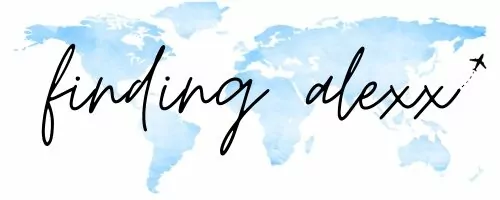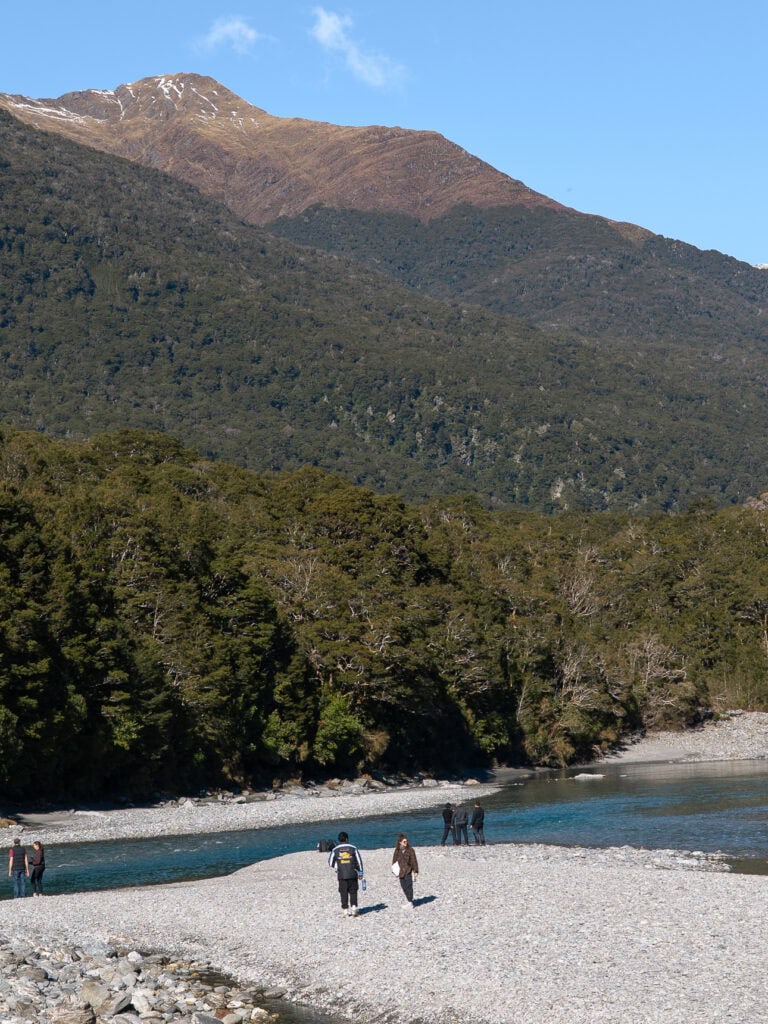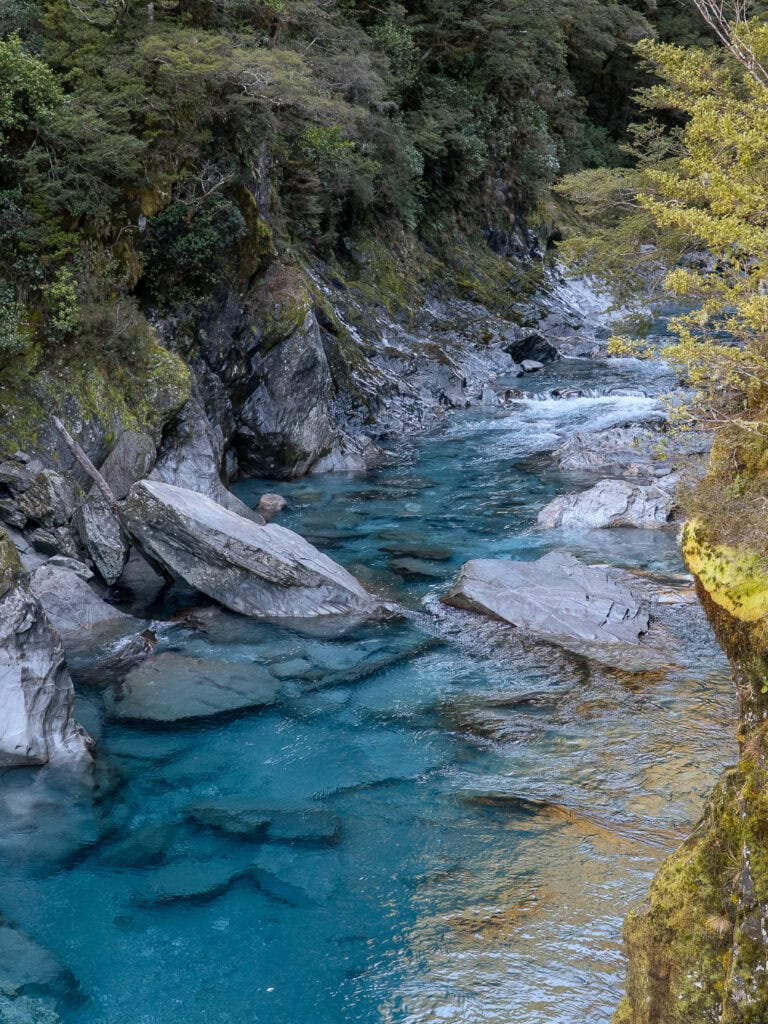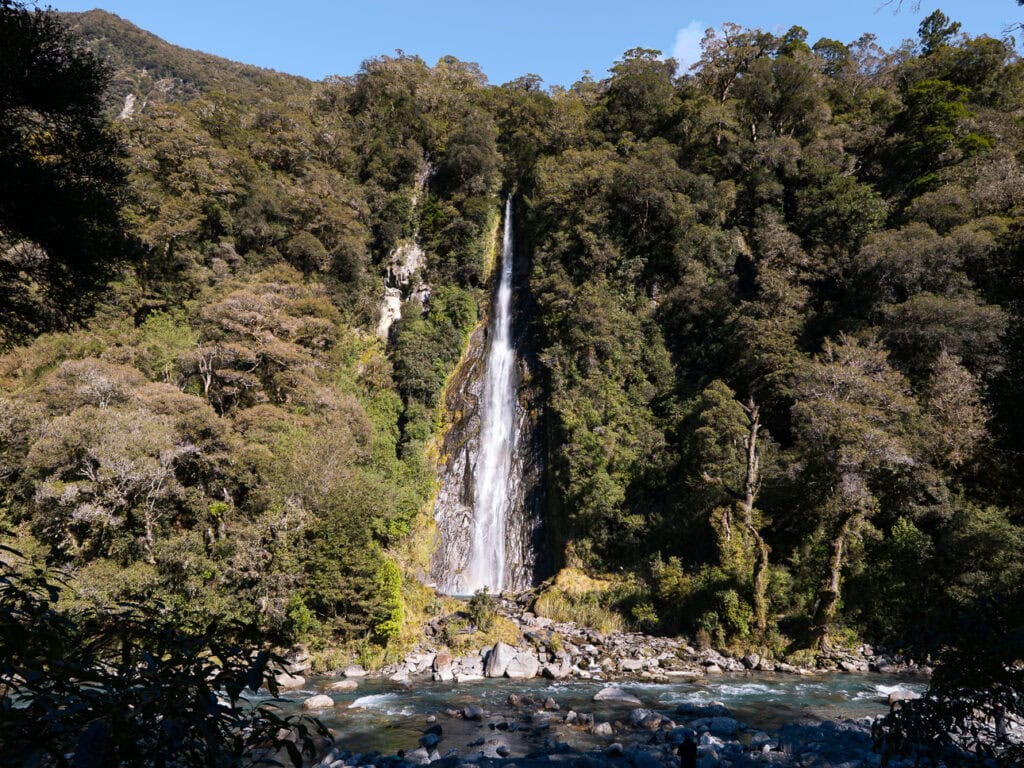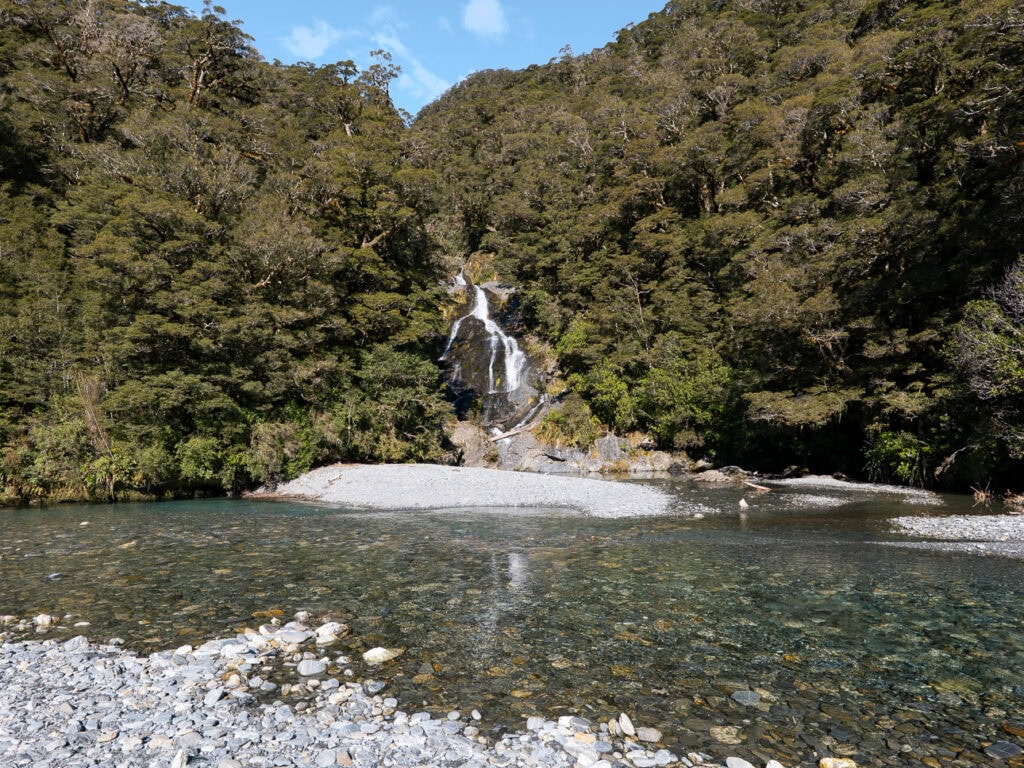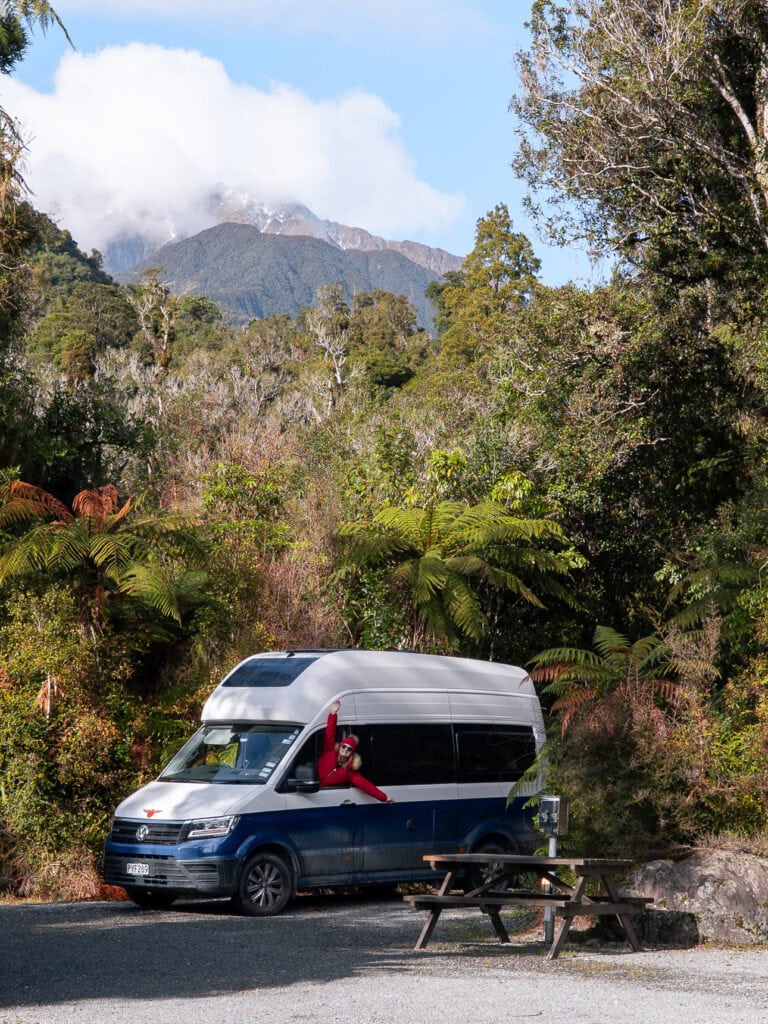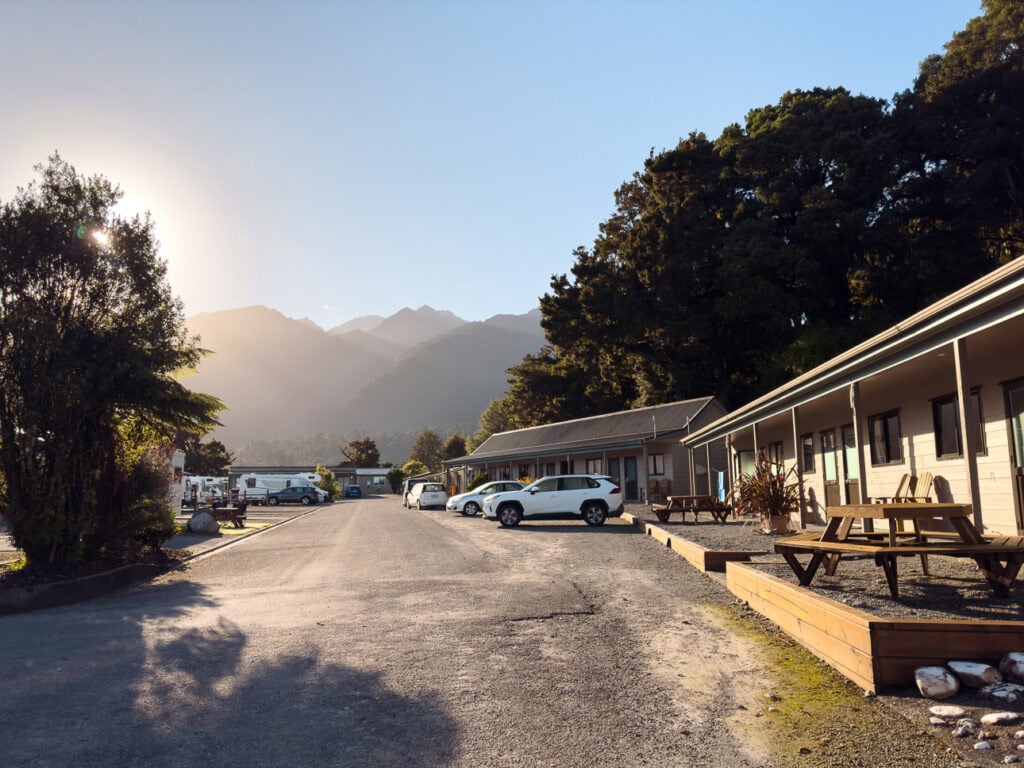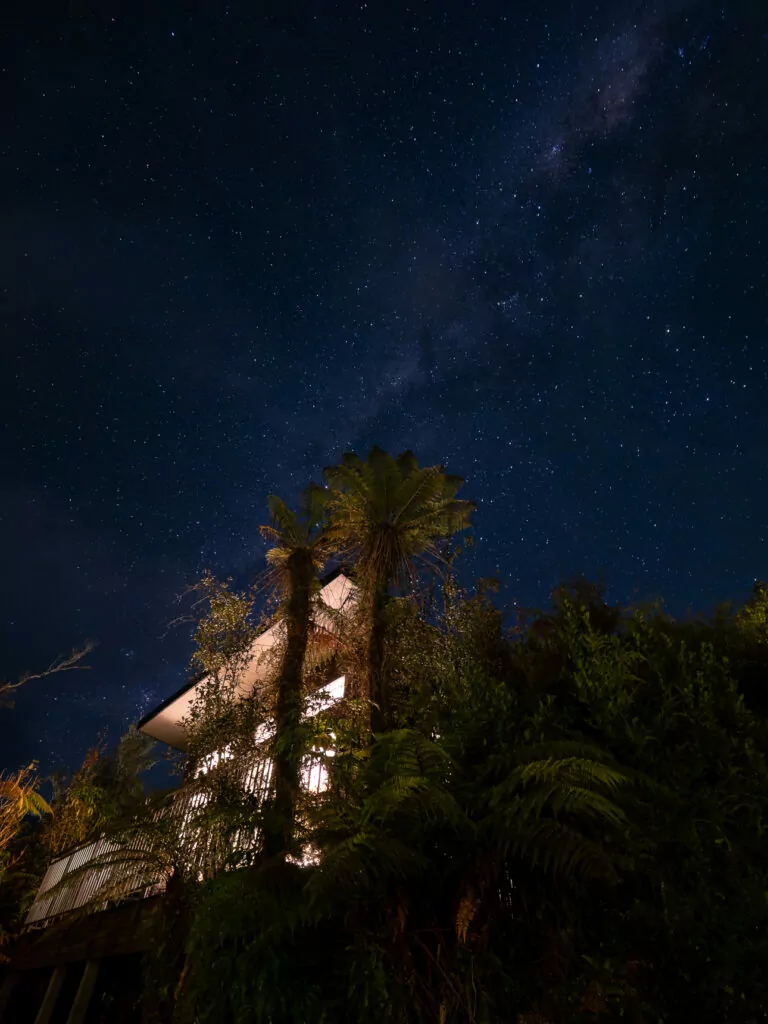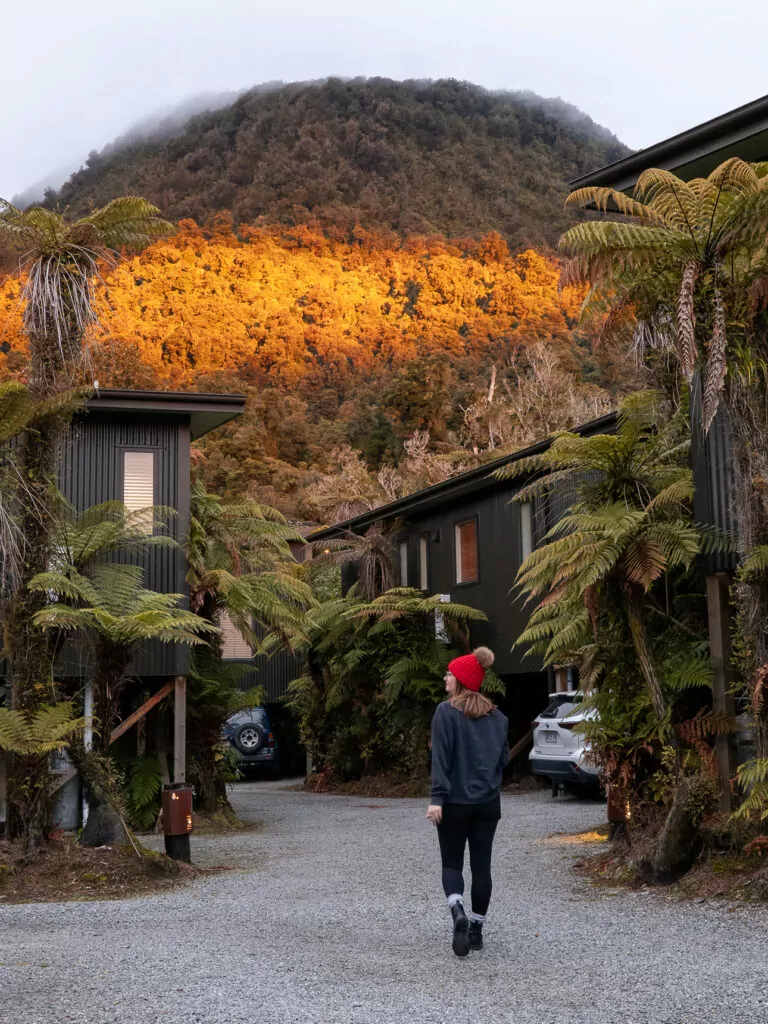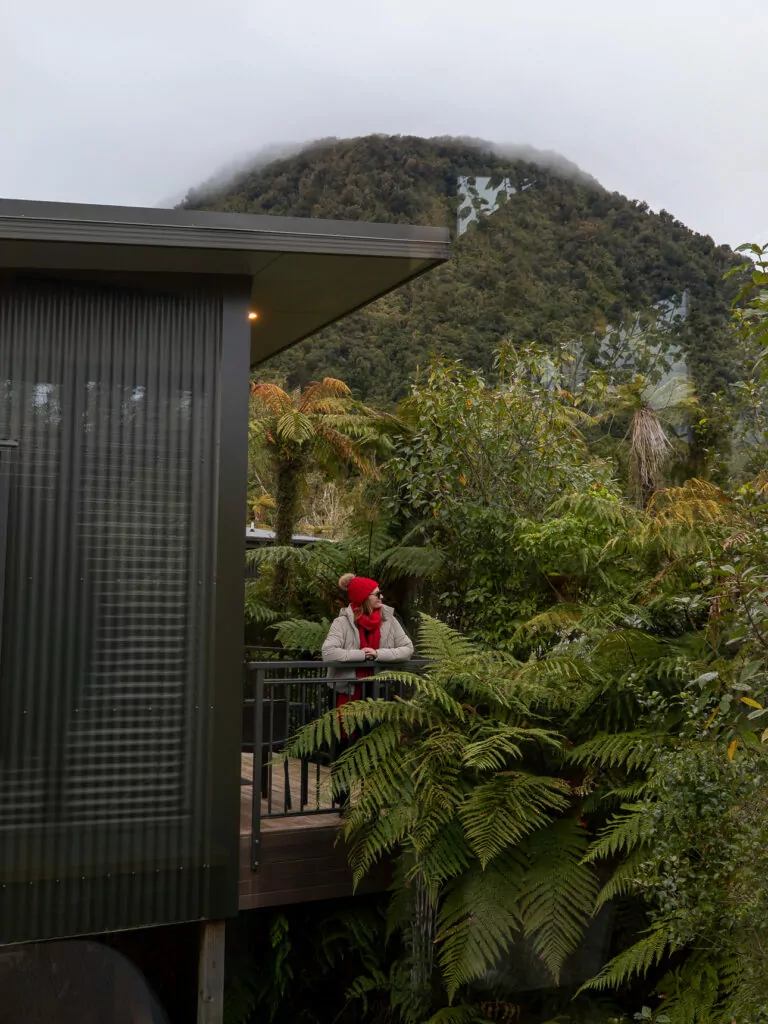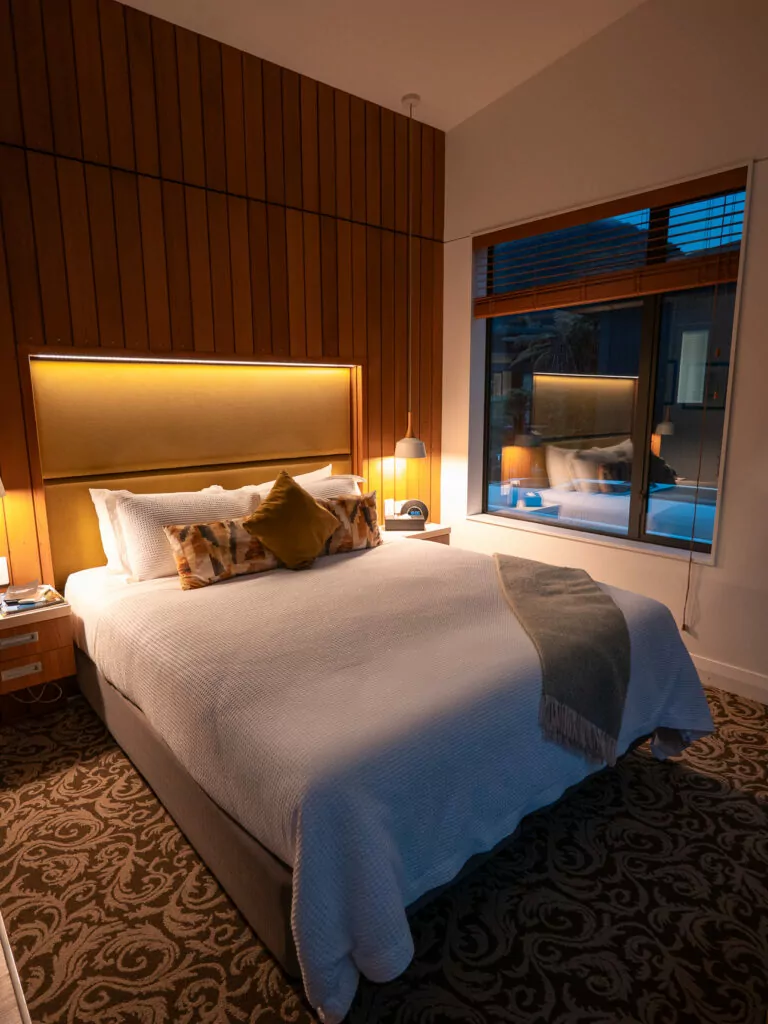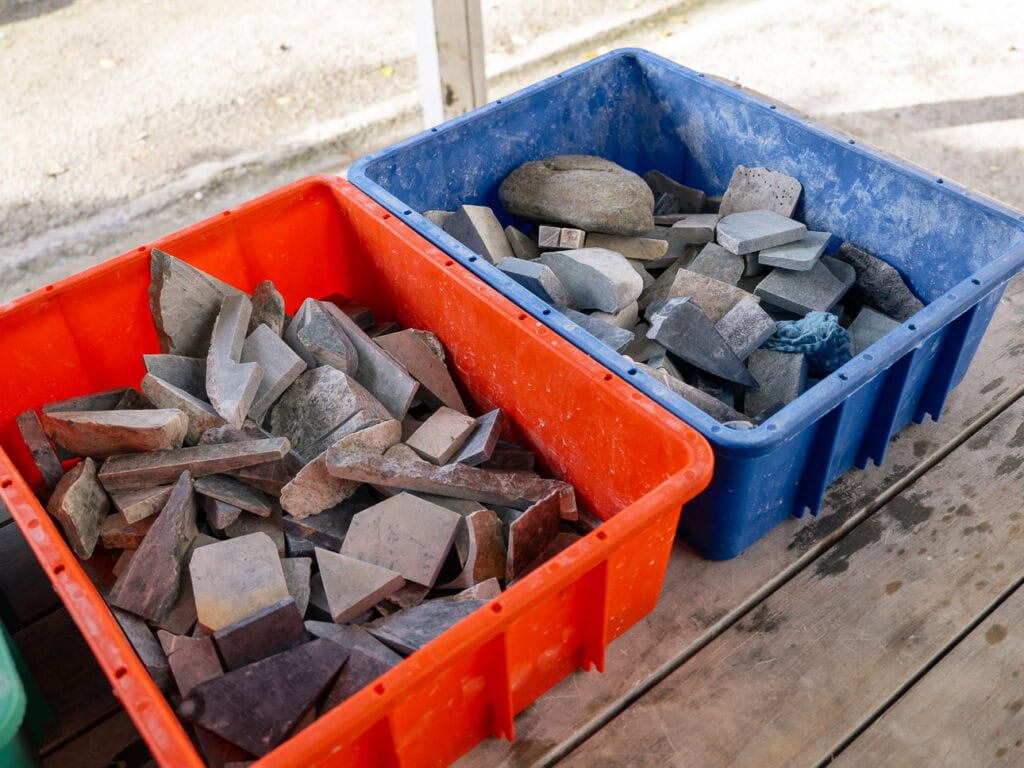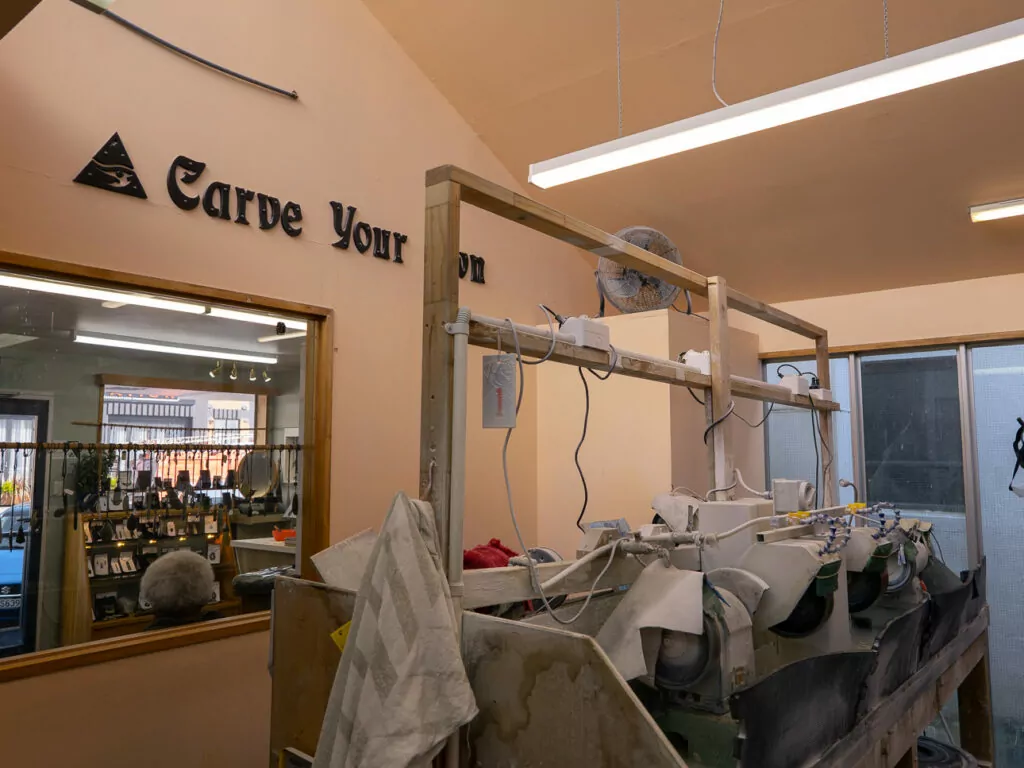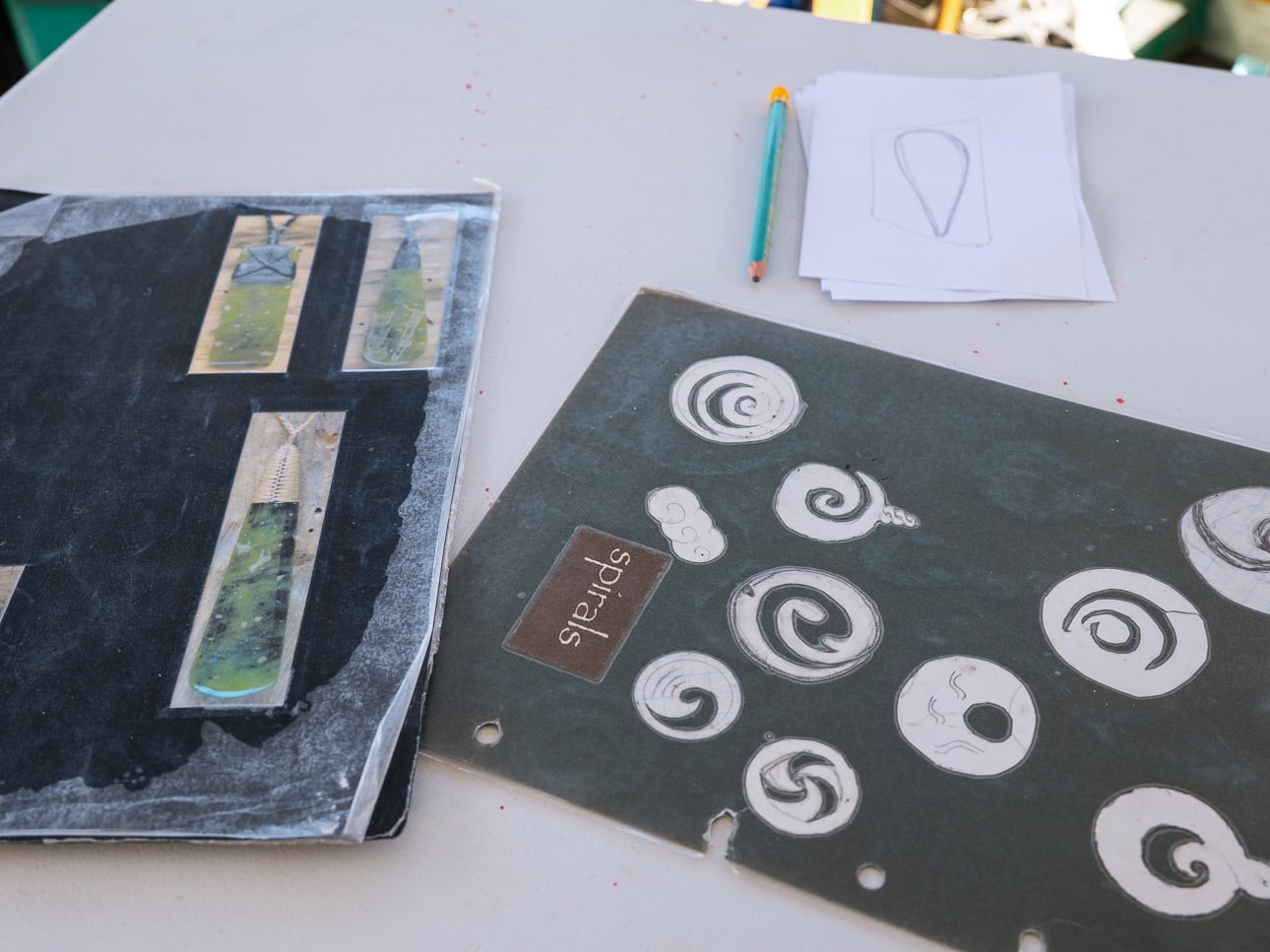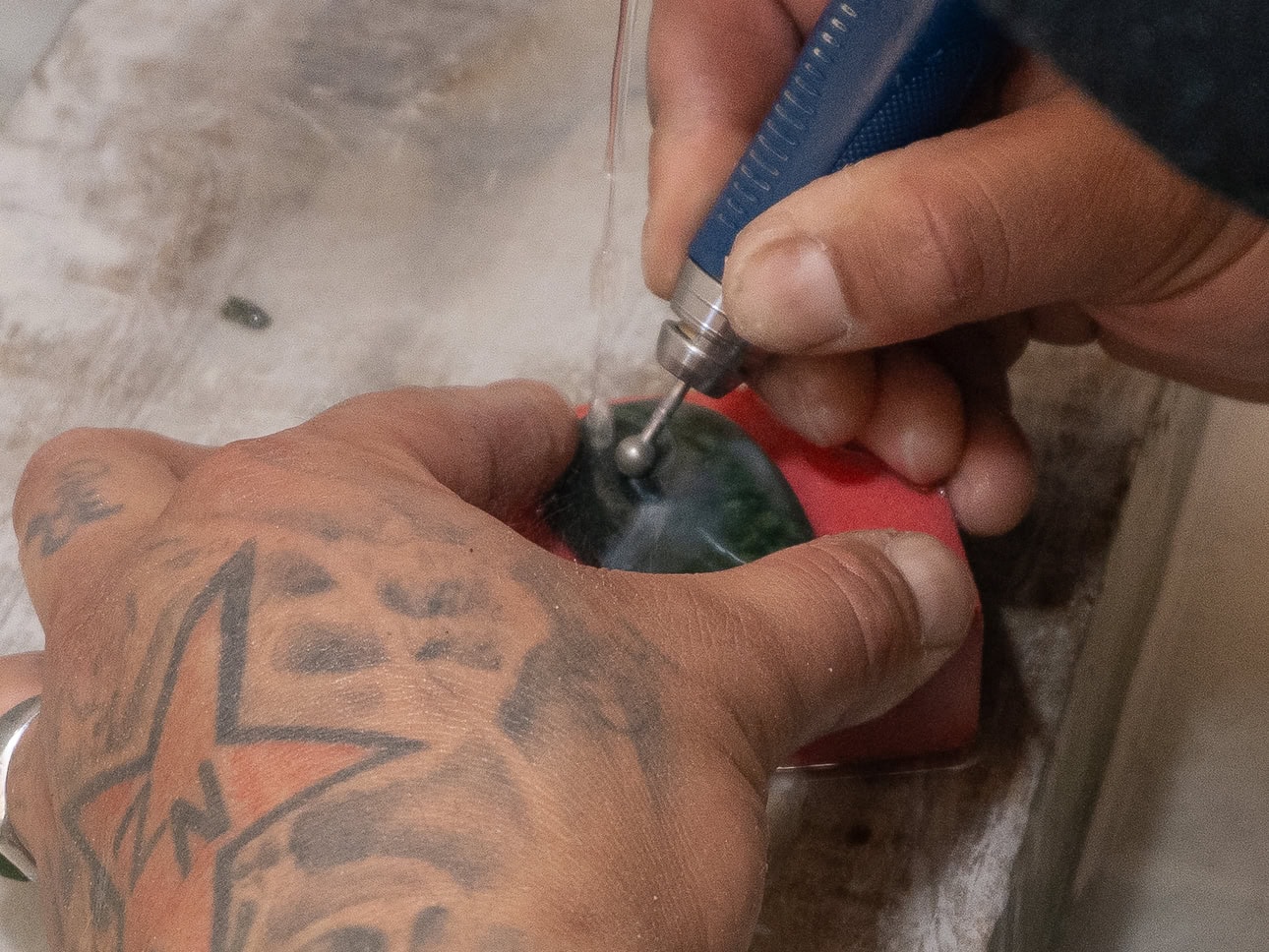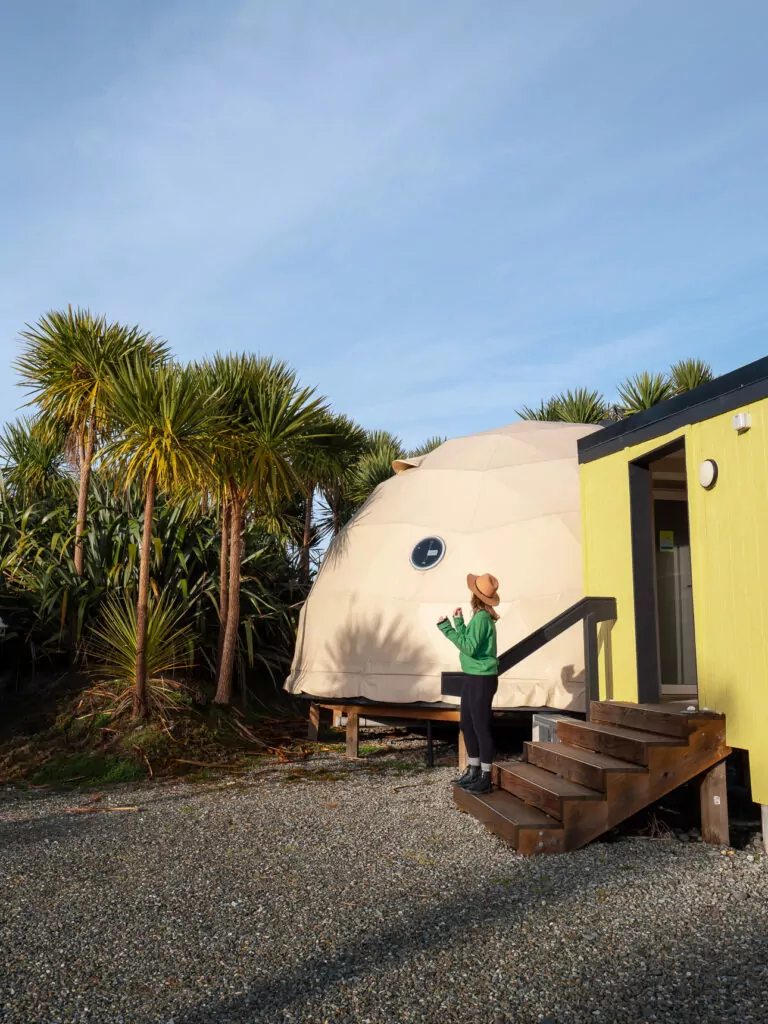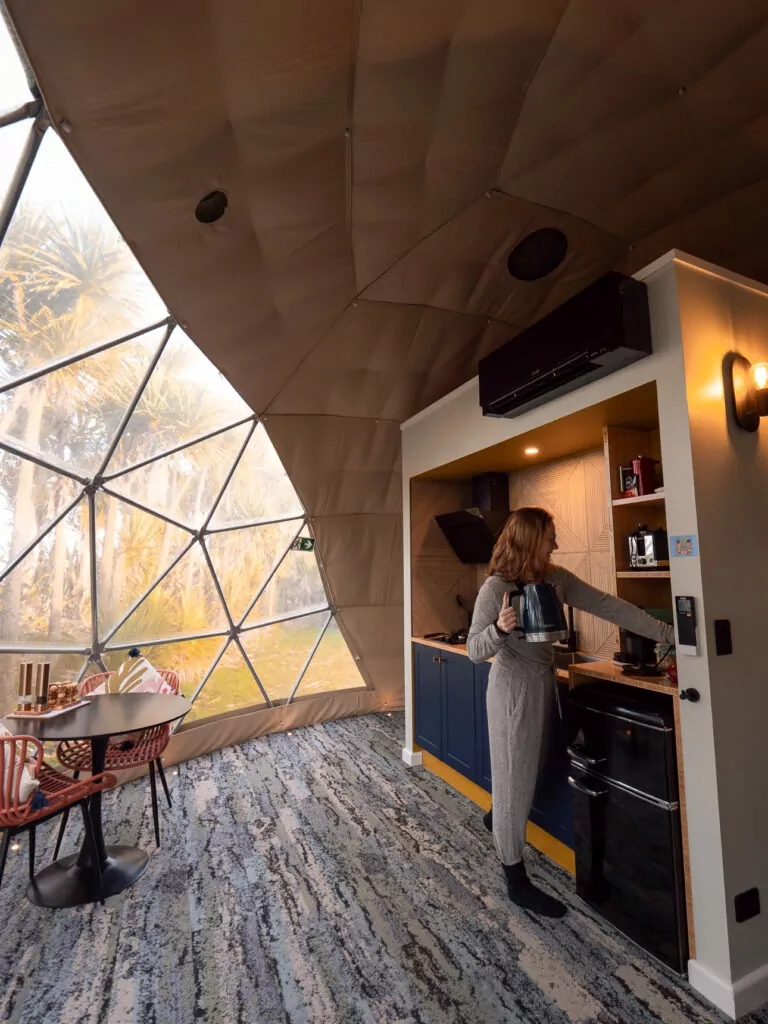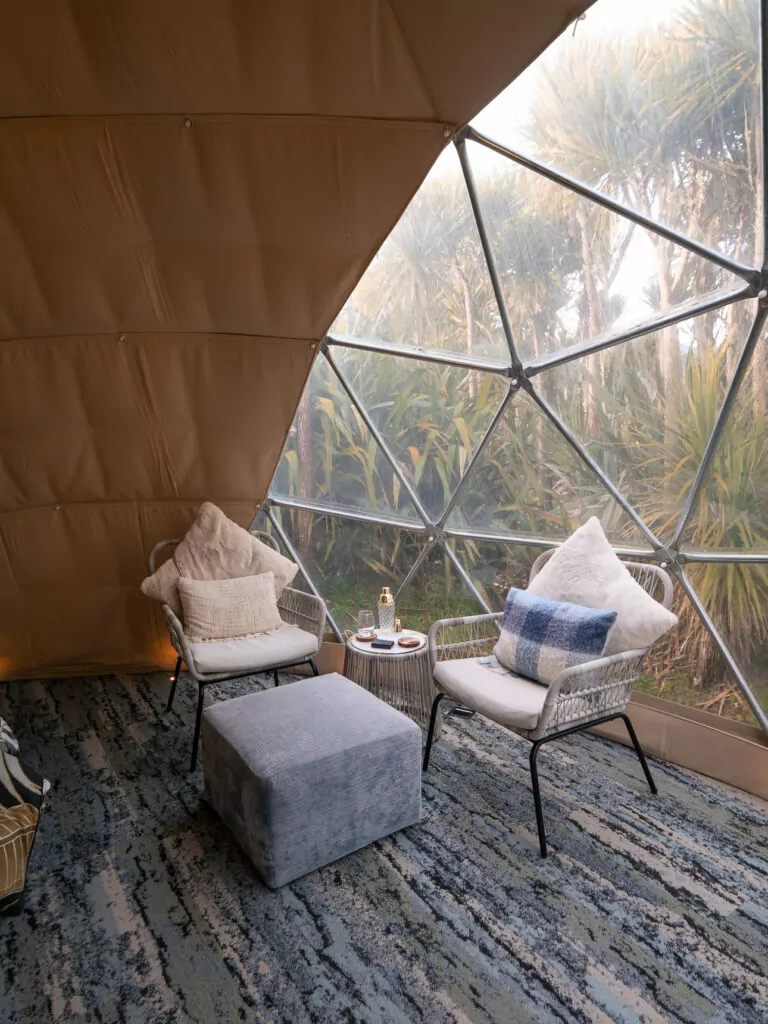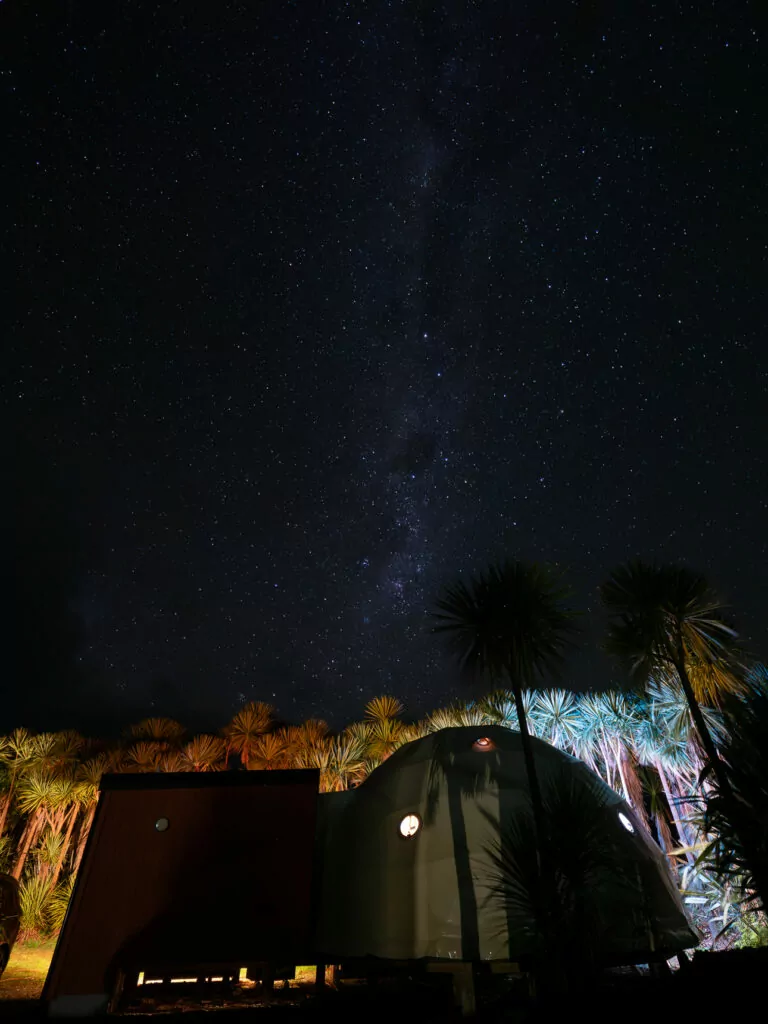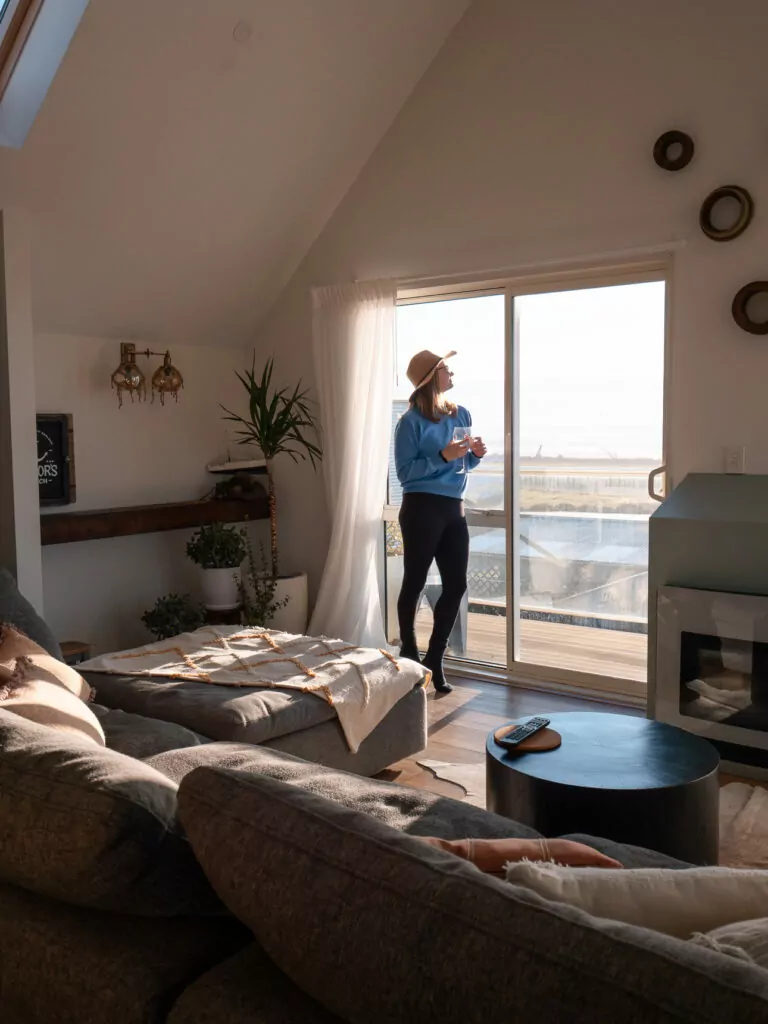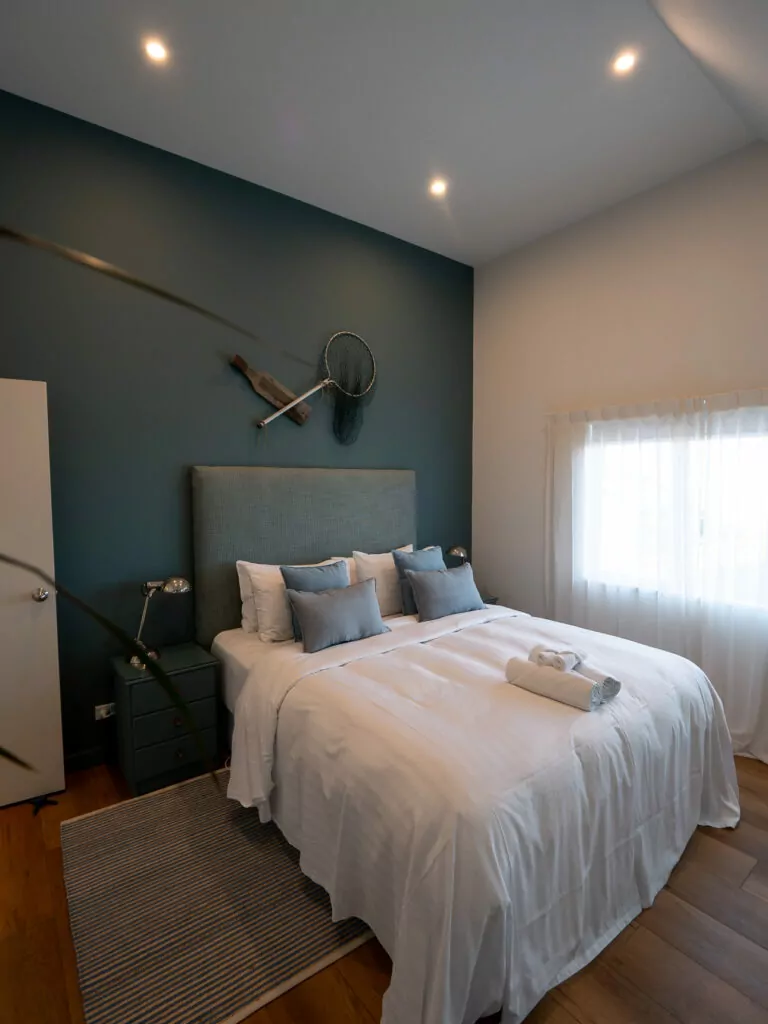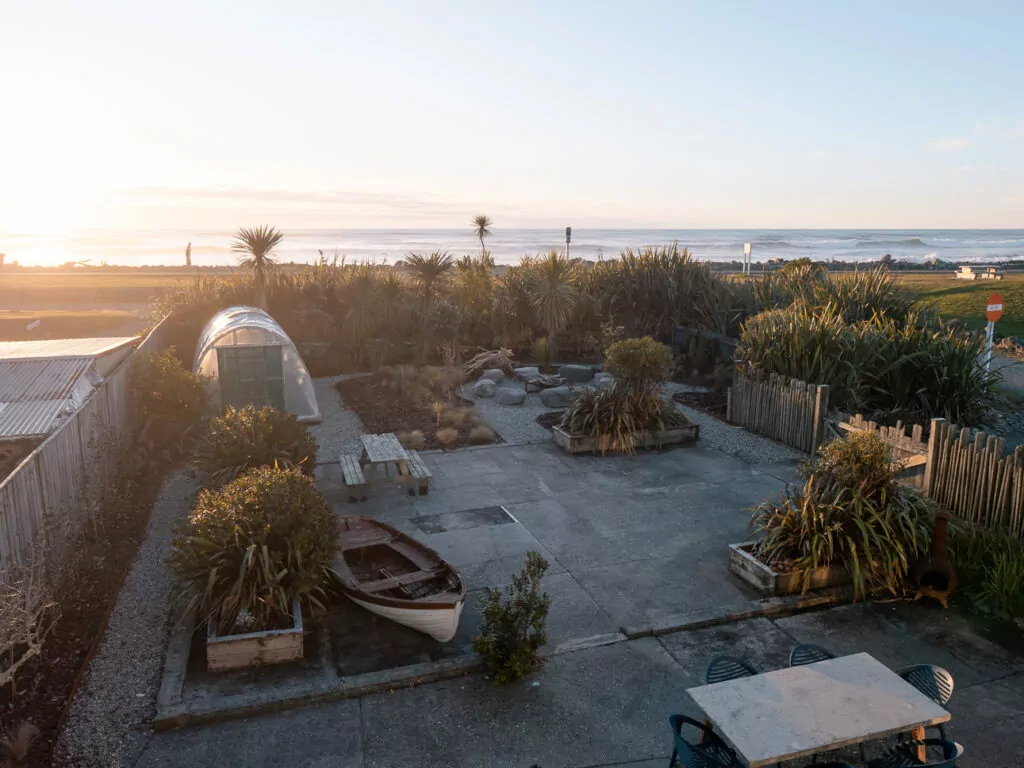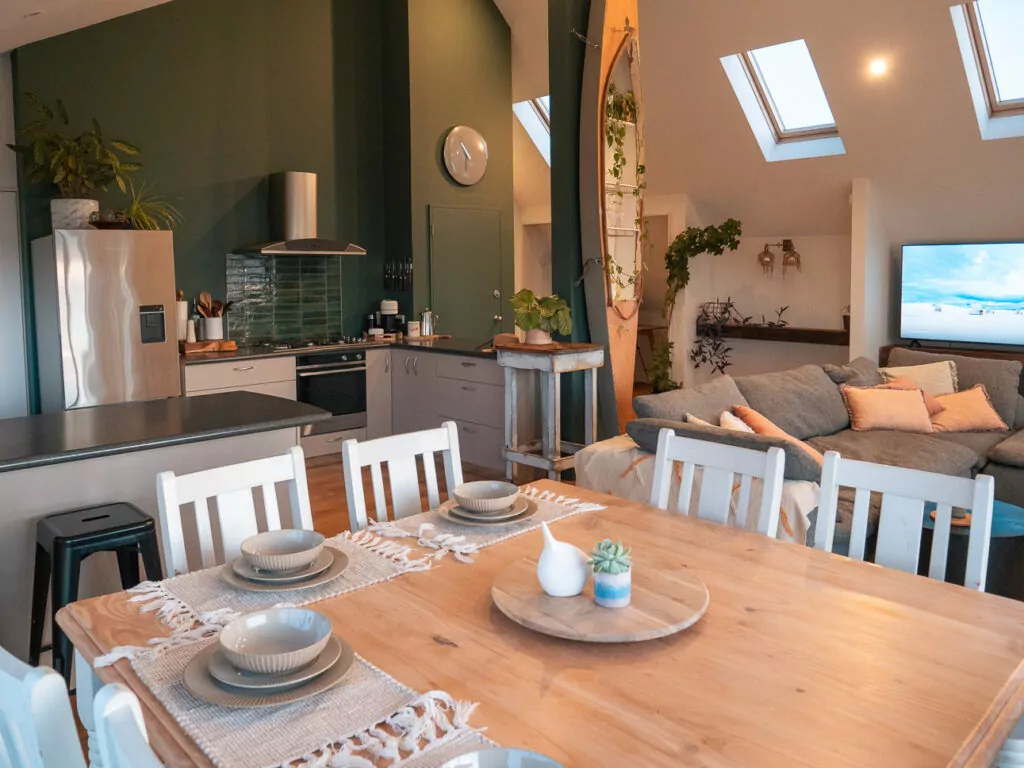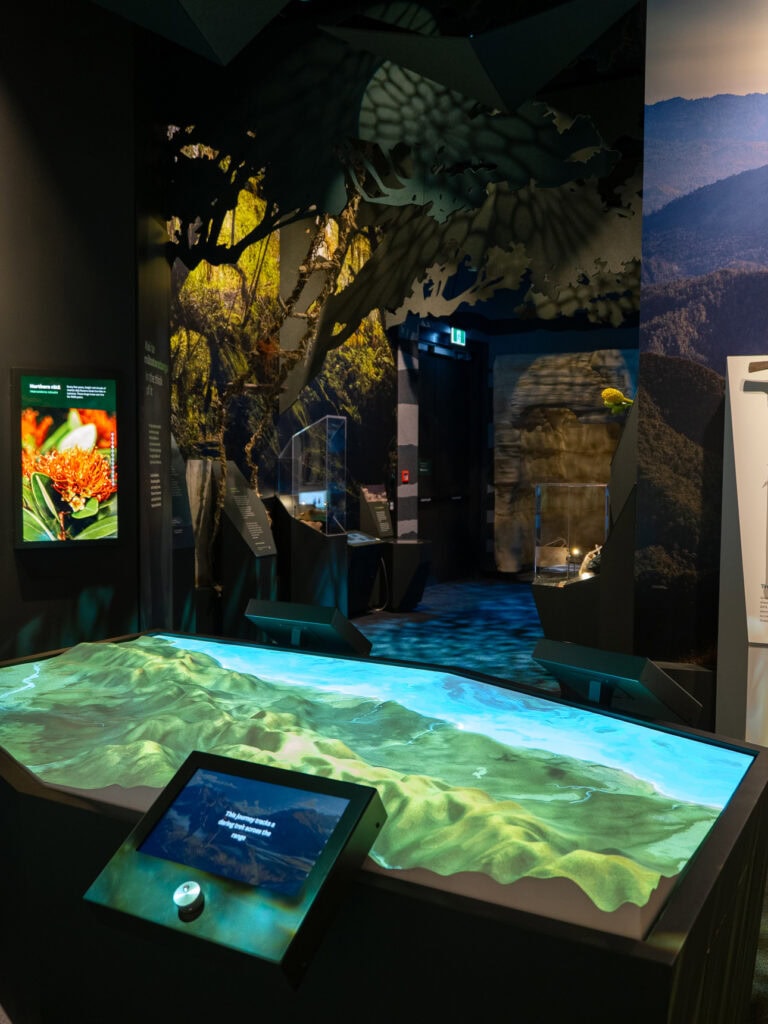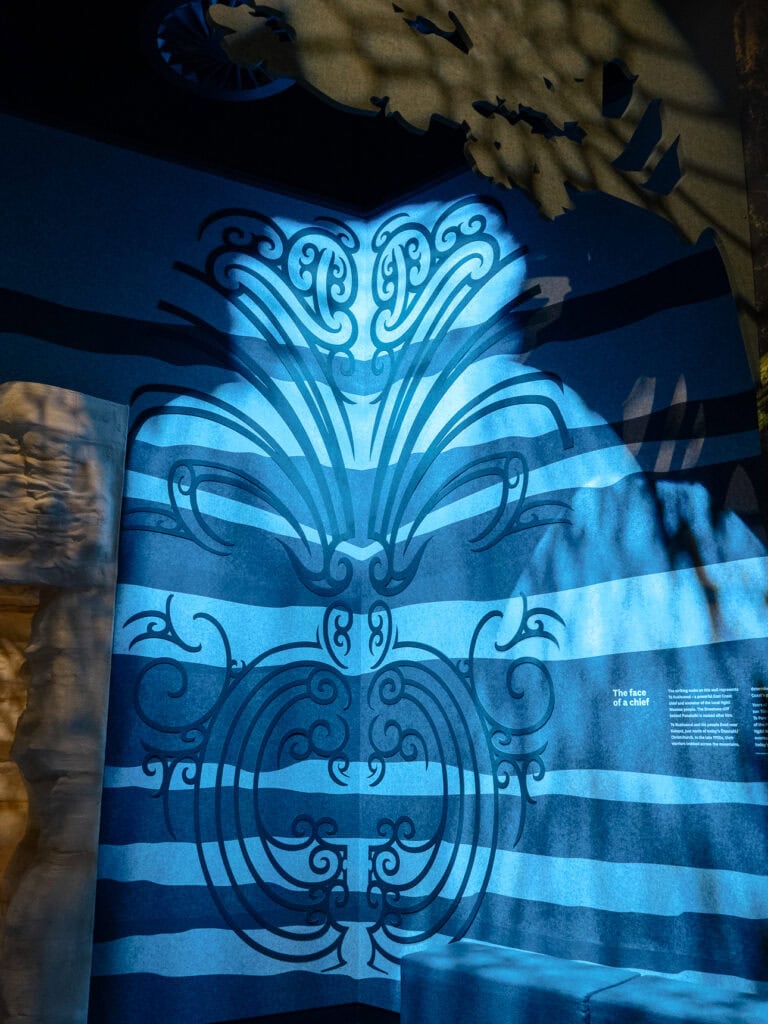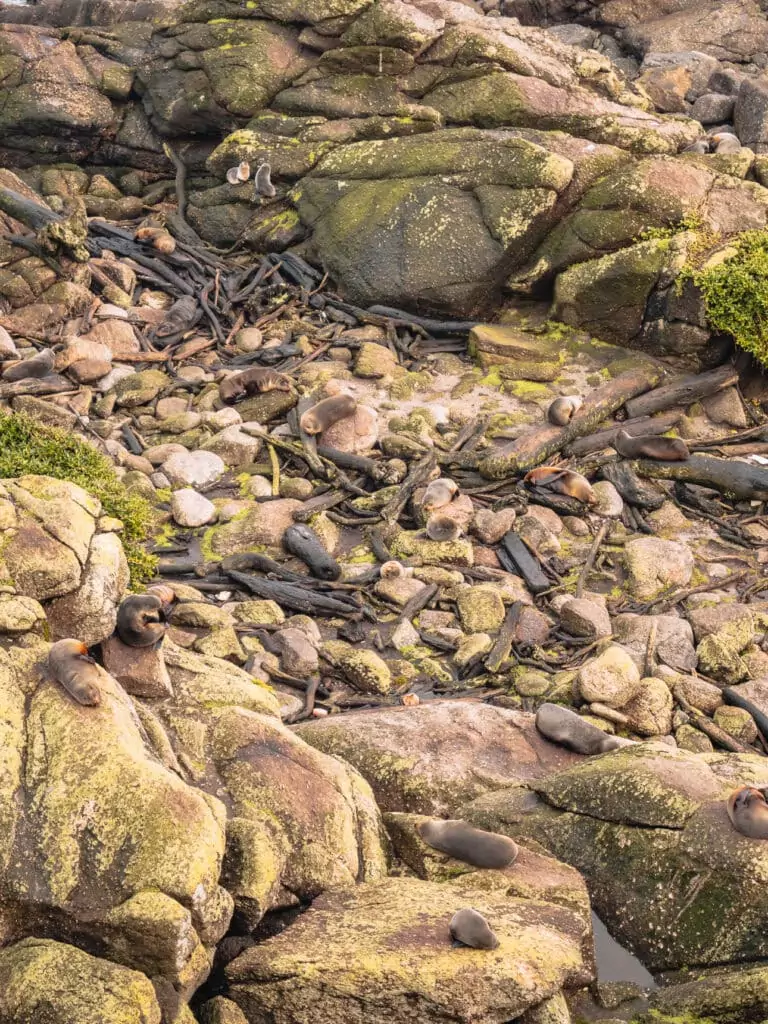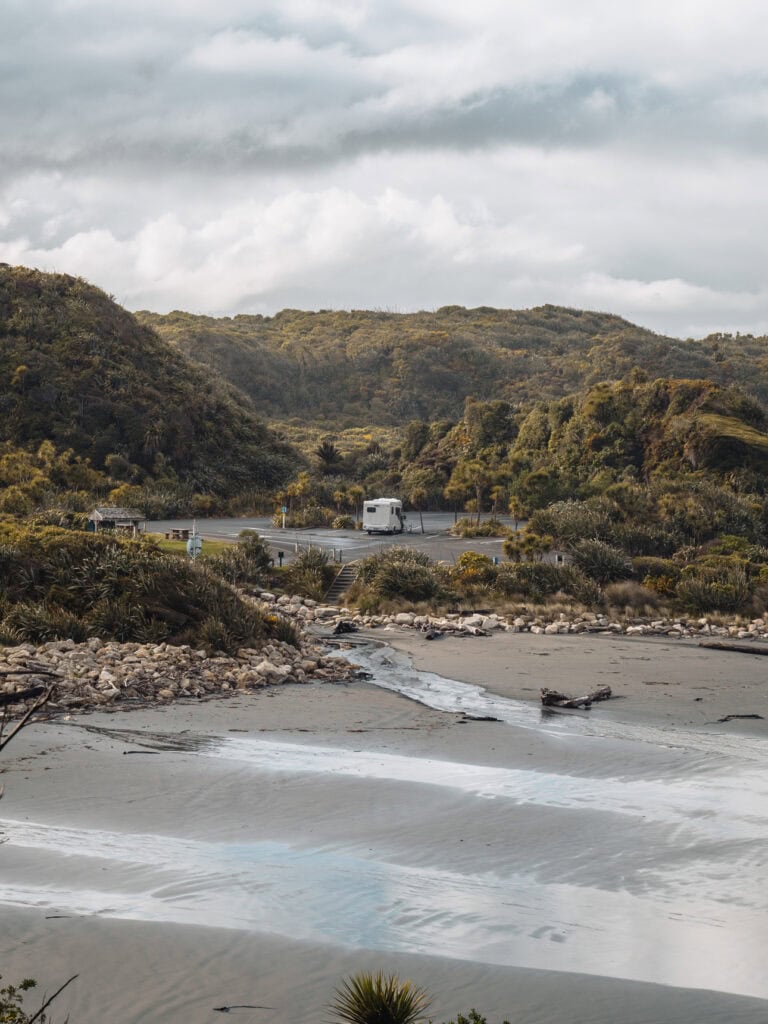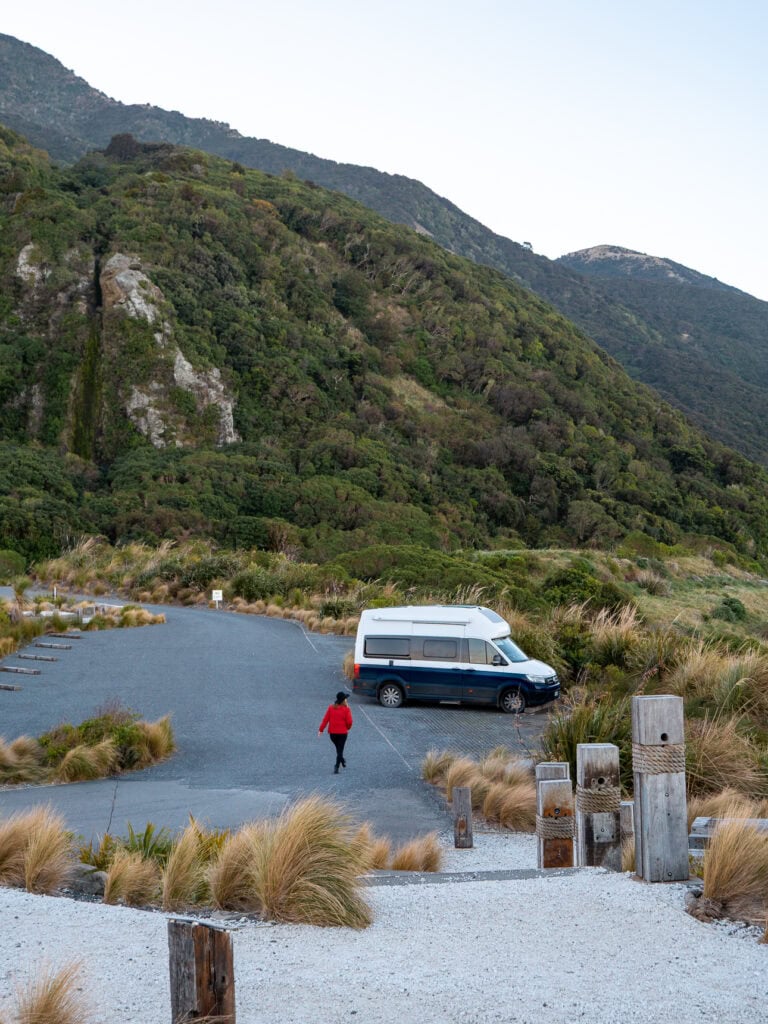The ultimate West Coast NZ road trip: A travel guide
Some links in this post are affiliate links, which means I earn a small commission if you book through them, at no extra cost to you. This support helps keep this site running, the suitcase wheels spinning, and lets me keep writing ultra-detailed travel guides that are free for you to use to plan your next adventure.
Planning a West Coast NZ road trip but not sure what stops are truly worth it, how much time you really need in each place, or how to make the most of it without missing anything? Don’t stress, you’re in the right place.
This 600km narrow stretch of the South Island is home to experiences and landscapes you won’t find anywhere else in the country, all sandwiched between the Southern Alps and the Tasman Sea, conveniently spread out along one of the most captivating coastal highways on the planet. Pretty much the recipe for a perfect road trip 🛣️
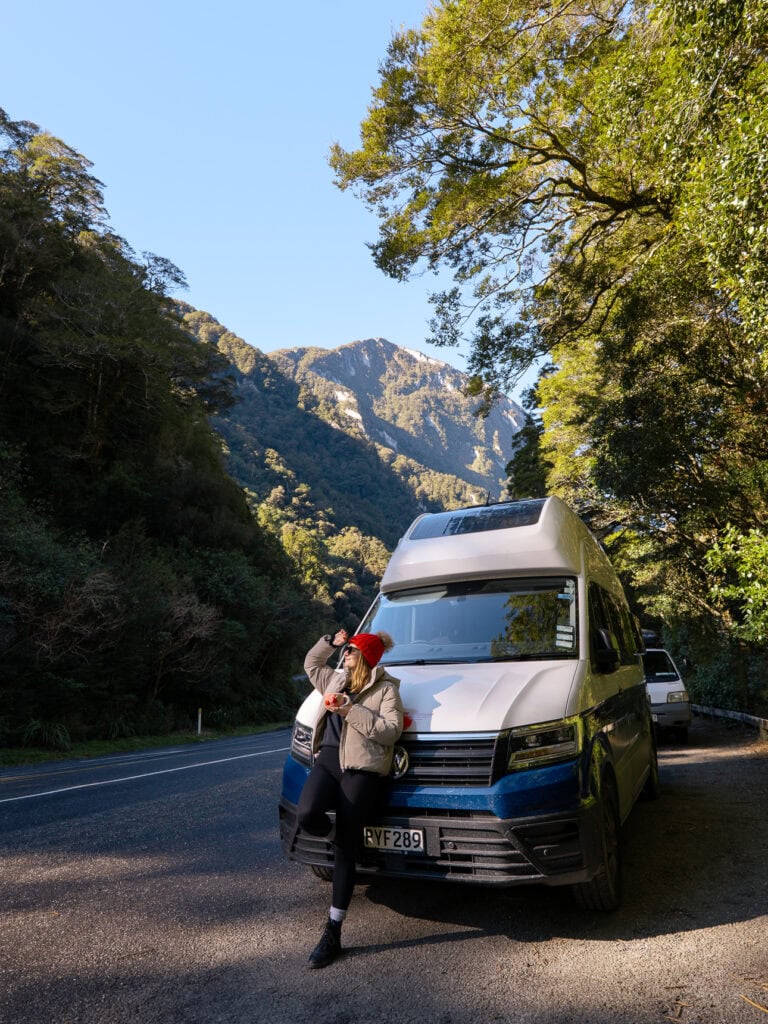
You can hike through ice corridors on an actual glacier, spot the rarest kiwi in its natural habitat, carve your own pounamu (greenstone) to take home as an ultra-special souvenir, choose from countless nature walks for all abilities, and discover the character of tiny towns that seem frozen in time.
I’ve driven this exact road trip route multiple times in different seasons, most recently as part of a solo campervan winter adventure around the Top of the South Island, and it never fails to blow my mind. But the West Coast’s wild beauty and peaceful isolation also bring some unique challenges, like fast-changing alpine weather, long stretches between fuel stops and supermarkets, and a seemingly infinite number of viewpoints and side quests that’ll double triple your estimated drive times.
That’s where this travel guide comes in! It’s packed with everything you need to plan the ultimate West Coast road trip, from seasonal tips and driving logistics to the absolute best things to do, places to stay and where to stop along the way.
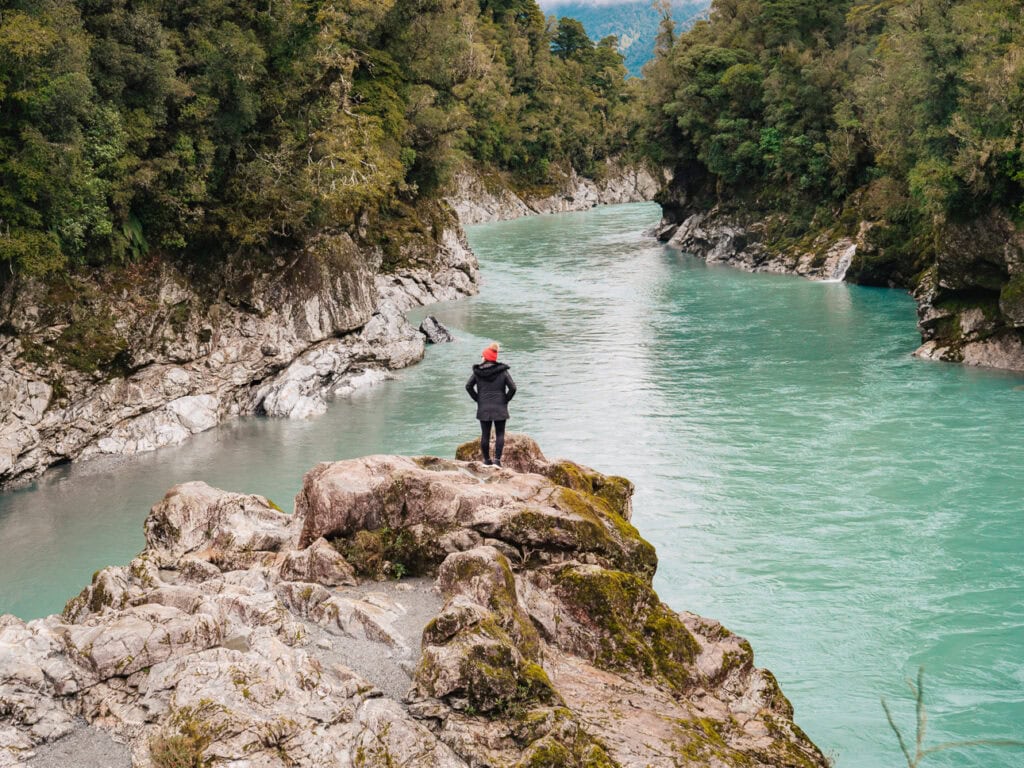
In this West Coast NZ travel guide:
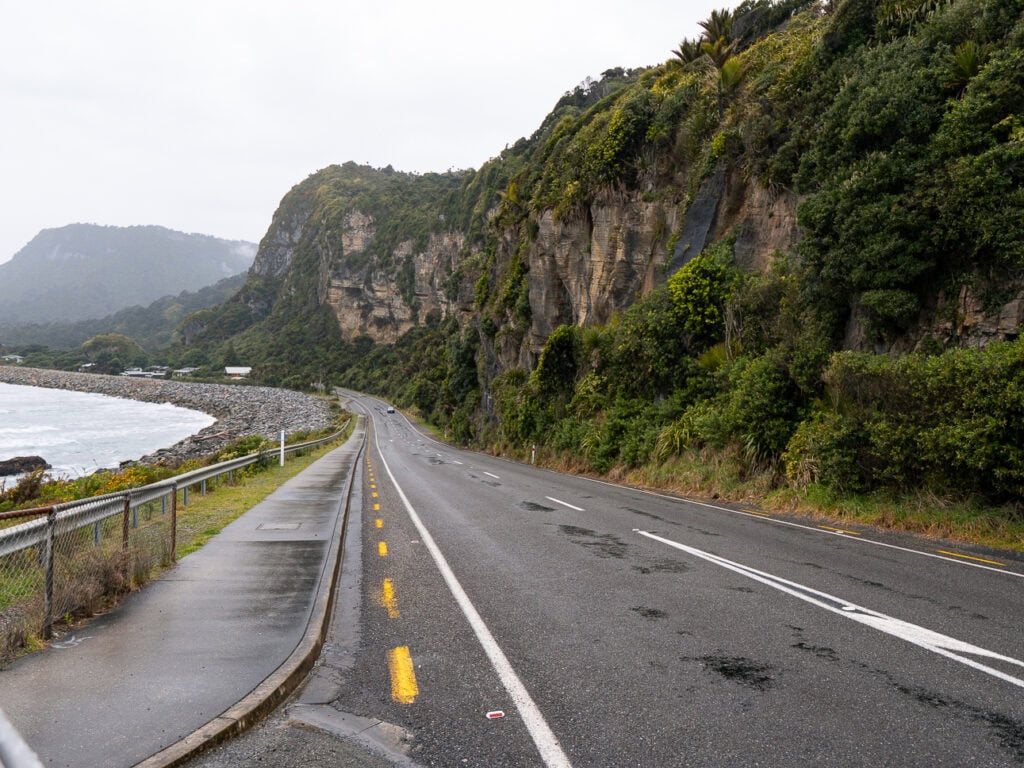
My most recent trip was sponsored by Development West Coast, but as always, all opinions are entirely based on my own experience and research. Thank you for supporting me, these partnerships allow me to keep creating super detailed travel guides to help you plan better trips.
Quick summary: The ultimate West Coast NZ road trip
- Route: Wānaka > Franz Josef Glacier > Hokitika > Punakaiki & Paparoa National Park > Maruia Hot Springs
- Distance: Around 600km if you drove it straight
- Recommended duration: 7 days is ideal! 5 days is possible at a whirlwind pace, 3 days would require some culling, 10-14 days gives more flexibility and downtime.
- West Coast NZ highlights: Glacier heli-hike, Lake Matheson reflections, bird-watching, pounamu carving, Hokitika Gorge, Punakaiki Pancake Rocks, glowworms, and the stunning highway that connects all of it!
- Best for: Nature lovers, active adventurers, photographers, road trippers looking to escape the busier tourist drives
- When to visit: Year-round but I love June-Aug for (typically) crisp and clear winter days + wayyy fewer people. Dec-Feb is warmer but busy with summer holidayers, Mar-May is usually mild and pleasant, Sep-Nov is lush and green but weather can be unsettled.
- Things to be aware of: Expensive fuel in the lower half of the coast, alpine conditions that can change quickly, limited cell coverage in remote areas, sandflies at dawn and dusk (worse in summer)
Planning a big South Island trip?
I’ve collated everything I’ve learnt from many, many South Island trips over the years and have put it all info an extremely comprehensive South Island travel guide, where you can find all the info you need on how to get around, how to plan your route, how to budget and more.
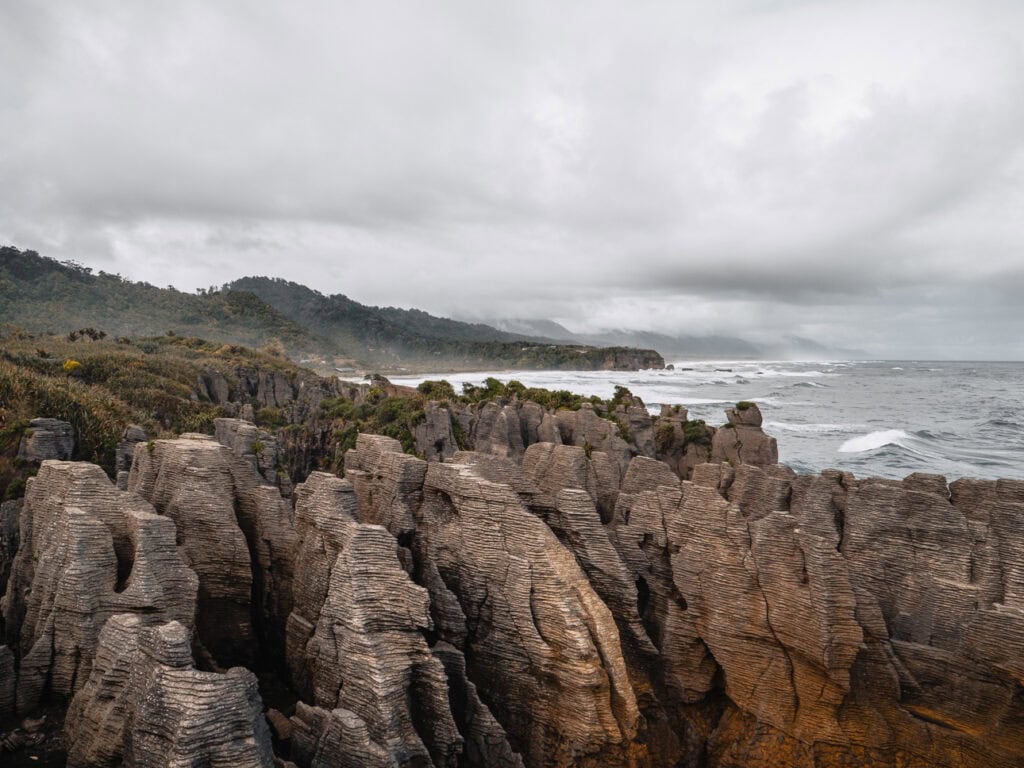
Why do a West Coast road trip in New Zealand?
Because this is New Zealand at its most raw, most unfiltered, most rugged, without needing to trek deep into the wilderness or rough it in the backcountry.
The West Coast lets you witness the magic of Aotearoa’s extremes directly from the driver’s seat (or as a passenger princess if that’s your vibe 👸🏼), with ancient glaciers that feed braided rivers, rocks that look like lasagne layers and temperate rainforests so dense that a brachiosaurus poking its head above the trees wouldn’t feel out of place.
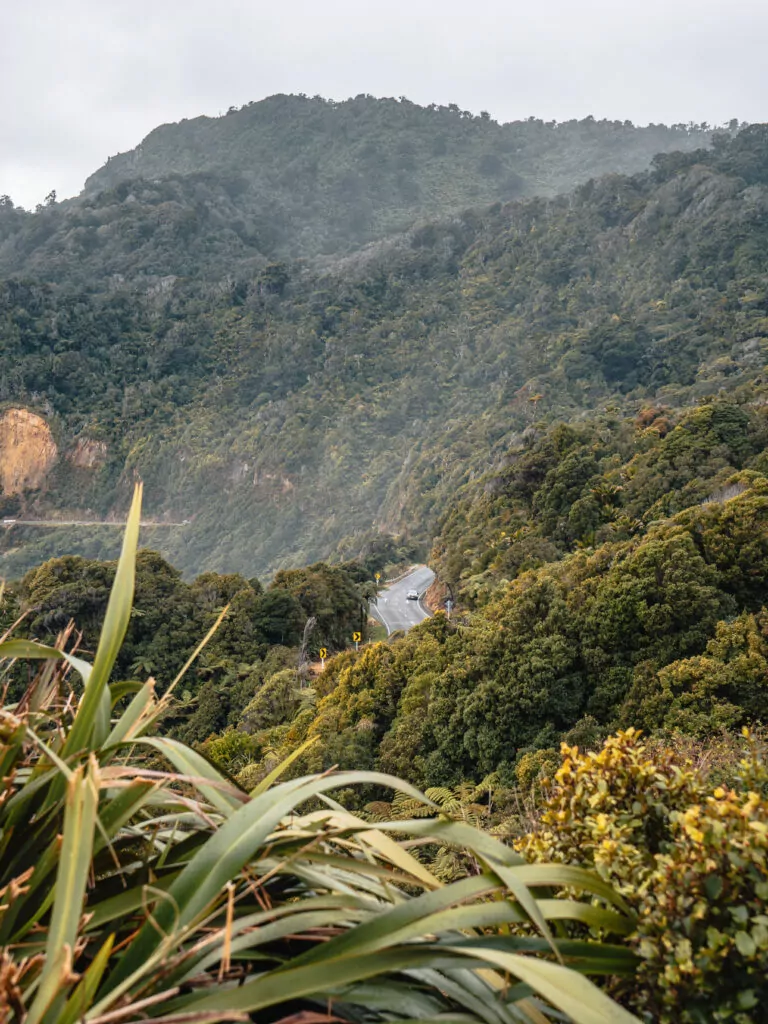
But that doesn’t mean you should drive through without stopping! Venture a little further from State Highway 6 and you’ll be rewarded with thundering waterfalls, lakes that perfectly mirror the Southern Alps, some of the country’s best short walks and quirky towns with genuine local character.
All over the coast there are accommodation options ranging from beachfront campsites to deluxe retreats, outdoor adventures from leisurely strolls to serious physical challenges, plus local delicacies to taste and endless roadside photo stops along the way.
Whether you’re exploring the West Coast as a standalone adventure or using it to link the southern highlights with the Top of the South Island, it’s got everything you need for the ultimate road trip experience.
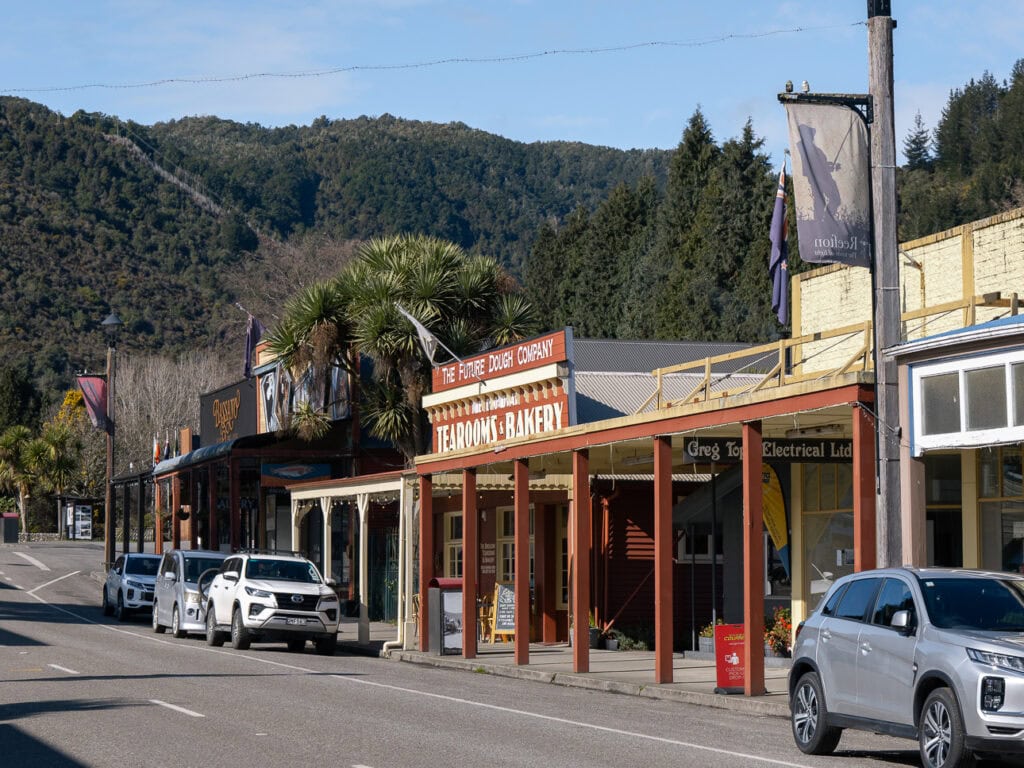
Planning a West Coast road trip in New Zealand: All the logistics
Where even is the West Coast in New Zealand?
The West Coast region (Te Tai o Poutini in te reo Māori) is the long and narrow slice of land bordered by the Tasman Sea on the west and the Southern Alps to the east.
Officially the West Coast’s northernmost boundary sits at Kahurangi Point near the very top of the South Island, and it stretches all the way south past Mount Aspiring National Park, but for road trip purposes here are the gateways to the West Coast depending on where you’re coming from:
- Maruia if you’re travelling from Nelson-Tasman or Marlborough (or are coming straight from the Cook Strait Ferry)
- Lewis Pass if you’re coming from Hurunui or Kaikōura
- Arthur’s Pass from Christchurch
- Haast Pass from Queenstown or Wānaka
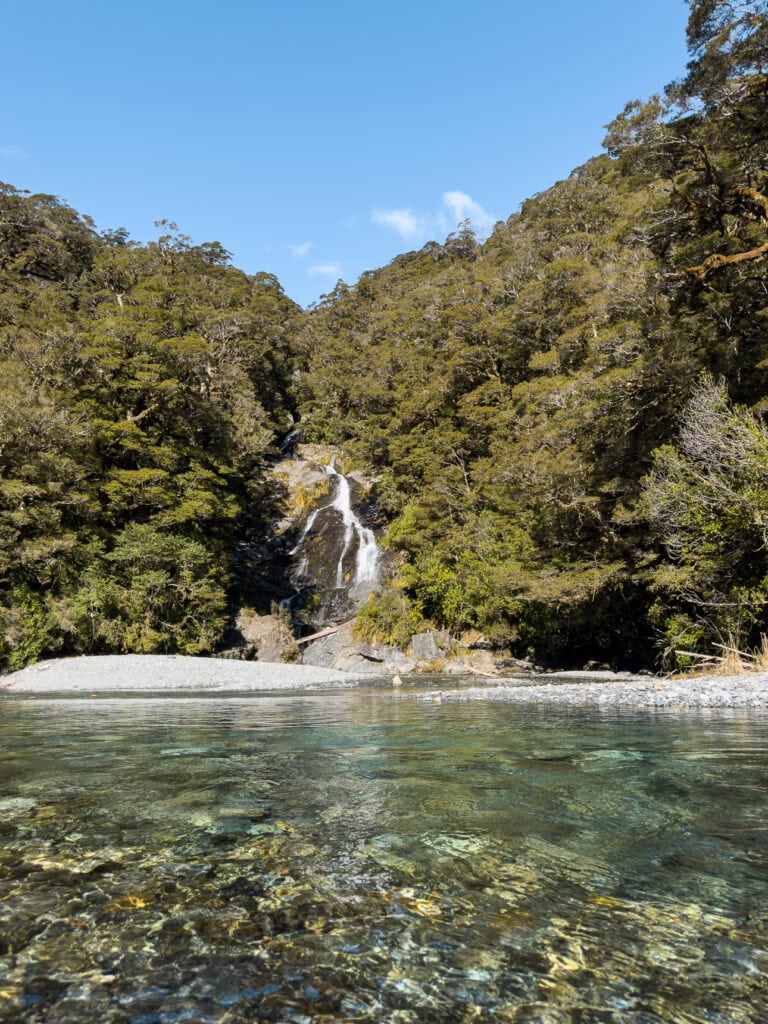
Best time for a West Coast road trip
Before we dive into seasonal differences, there’s one undeniable West Coast truth you need to accept: rain is just a part of the experience. There’s a reason it’s called the ‘rainforest’ 🙃
Annual rainfall here is high, typically between 2000-3000mm in some coastal towns, thanks to moisture rising from the Tasman Sea, forming heavy clouds that are blown inland and get trapped against the mountains before switching on the waterworks.
BUT (!!!) this doesn’t mean it’s constantly dreary and drizzly. Alpine weather changes quickly so you could go from blue skies to downpour and back to no clouds in a matter of hours. The unpredictability is all part of the fun!
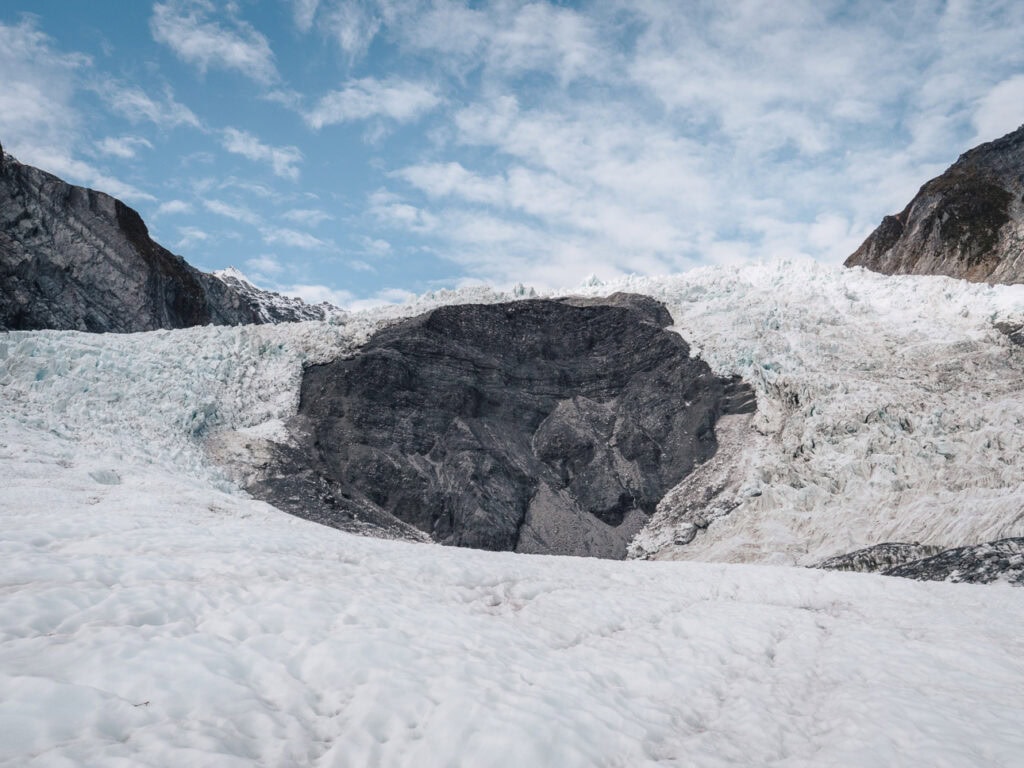
The West Coast covers a longggg stretch of the South Island too, so weather up the top could be completely different to the towns 500km south.
All of this is to say that you need to take any ‘best time’ recommendations with a grain of salt, but here’s a rough idea of what to expect around the year.
🌞 Summer (Dec-Feb)
- Long daylight hours and late sunsets mean more time for sightseeing!
- Warmer temperatures, average highs of 16°C-21°C
- Ideal conditions for kayaking, hiking and biking
- Nights can still get cold though, down to single digits in Glacier Country, so pack layers
- New Zealand and Australian schools have their summer break from mid-December to late January/early February, so lots of domestic and trans-Tasman travellers will be on the roads, at the campgrounds and on the trails
- If you’ve got any unique stays or specific experiences on your bucket list then you’ll want to book early to avoid missing out
- Statistically Dec and Jan tend to be quite wet but Feb is usually drier, and kids are back at school by that stage, win-win!
- Sandflies are at their worst at dawn and dusk in summer, not a genuine health risk but suuuper annoying 🫠 Grab some locally-made repellent from any of the West Coast towns, they’re formulated for sandflies specifically and will do the best job.
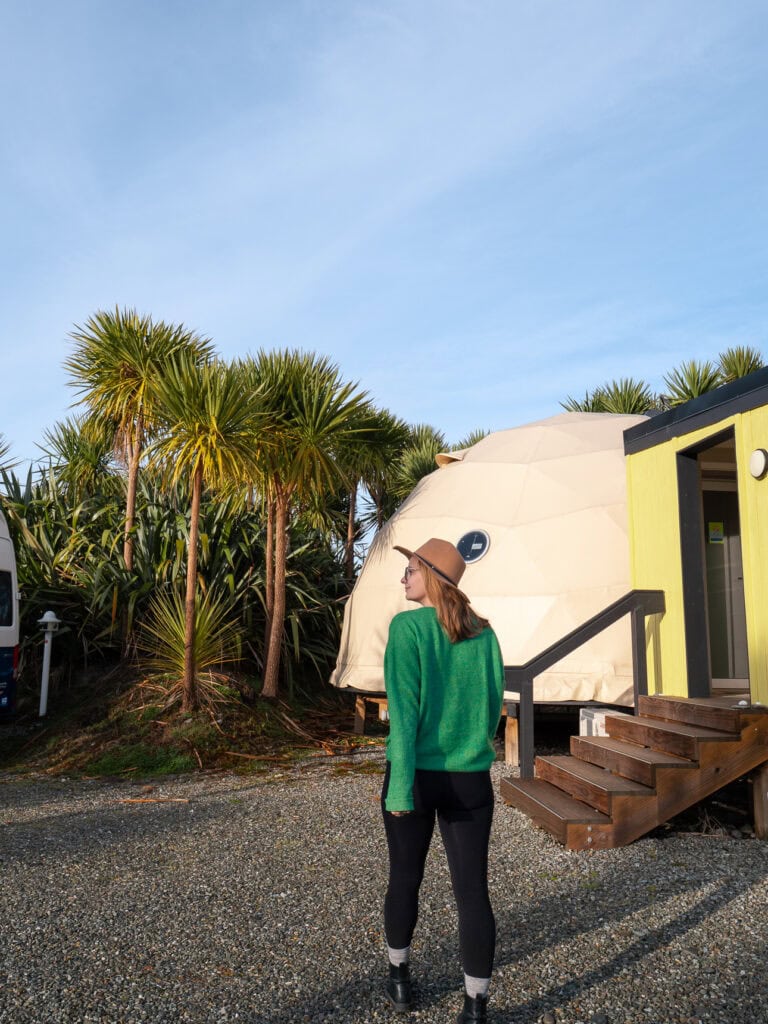
🍂 Autumn (Mar-May)
- Weather is typically settled, with cooler temps but still mild and pleasant for outdoor adventures
- Crowds thin out and prices come down, more flexibility to make plans on the go
- Except for around the iconic Hokitika Wildfoods Festival, which takes place in early to mid-March (check official dates here). If you’re a culinary connoisseur then you might want to plan your trip around it.
- If unusual eats aren’t your thing then avoid Hokitika that weekend or you’ll be paying a premium for accommodation
- Daylight Savings Time ends early April which means you lose an hour of sunlight, many tour operators change their schedules so double check times before you book anything
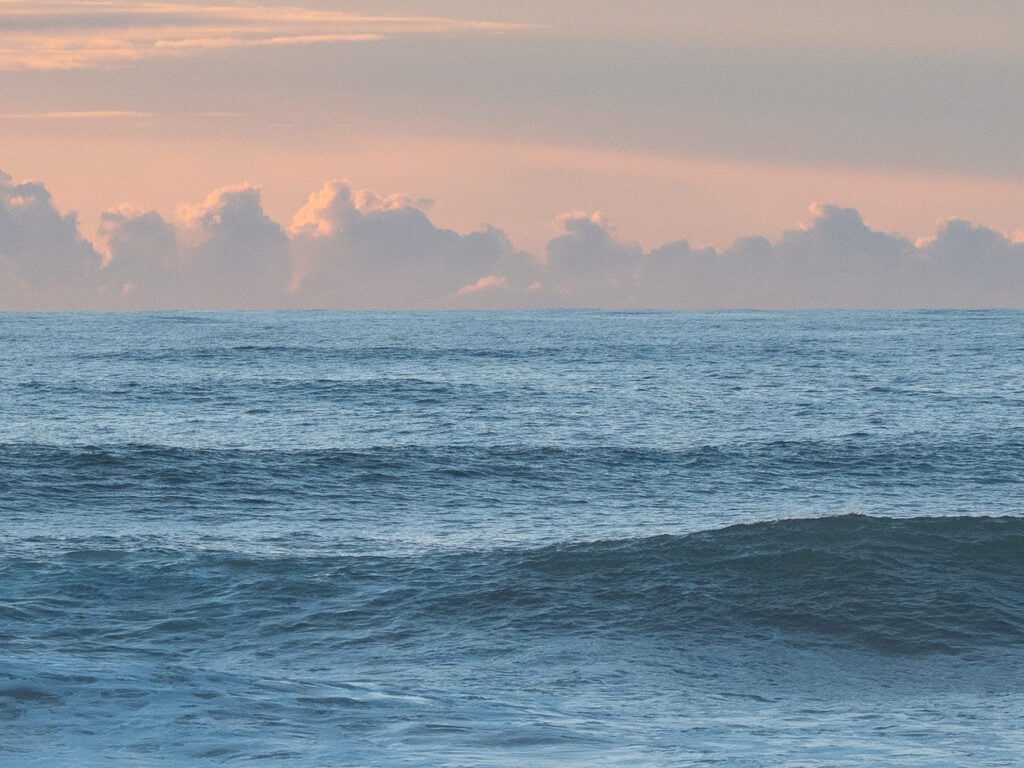
❄️ Winter (Jun-Aug)
- My personal top pick for the best time to visit the West Coast
- Hardly any tourists, which means lower prices, photo spots to yourself and more flexibility to make or change plans last minute. There were often just a handful of campervans in each campground I stayed at in August!
- Typically the driest season, lots of beautifully crisp blue sky days with fresh snow on the mountains
- Short days (the sun sets between 5.10-6.10pm) so less daylight for sightseeing. Stay longer and travel slower to make the most of a winter West Coast road trip.
- Being close to the sea means it doesn’t get unbearably cold as long as you’ve got warm layers, but Glacier Country can go sub-zero and the rest of the Coast generally sits between 4°C to 13°C
- Alpine passes to get in and out of the West Coast can be impacted by snow and ice, check for road closures before you set off and always drive to the conditions
- Some tourism operators might run on reduced schedules
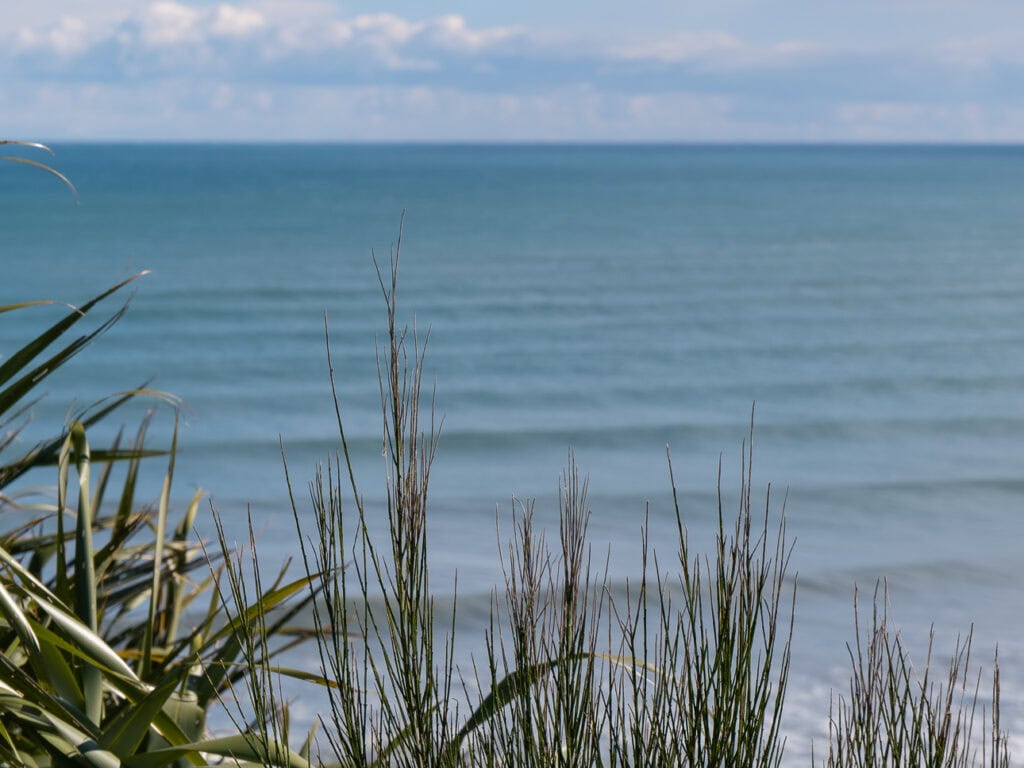
💐 Spring (Sep-Nov)
- Melting snow means the waterfalls are at their most intense
- Weather can be very changeable, monthly rainfall is typically high but this can come from short torrential bursts between stretches of sunshine
- Daytime temps start climbing but nights can still be chilly
- The birdsong gets even louder (if that’s even possible) with native birds coming to feast on the kōwhai flowers
- The only time you can try fresh whitebait, a local delicacy! Whitebait fishing season is from September to October, you might find it on menus outside of these months but it’ll be from the freezer which isn’t quiiiite the same.
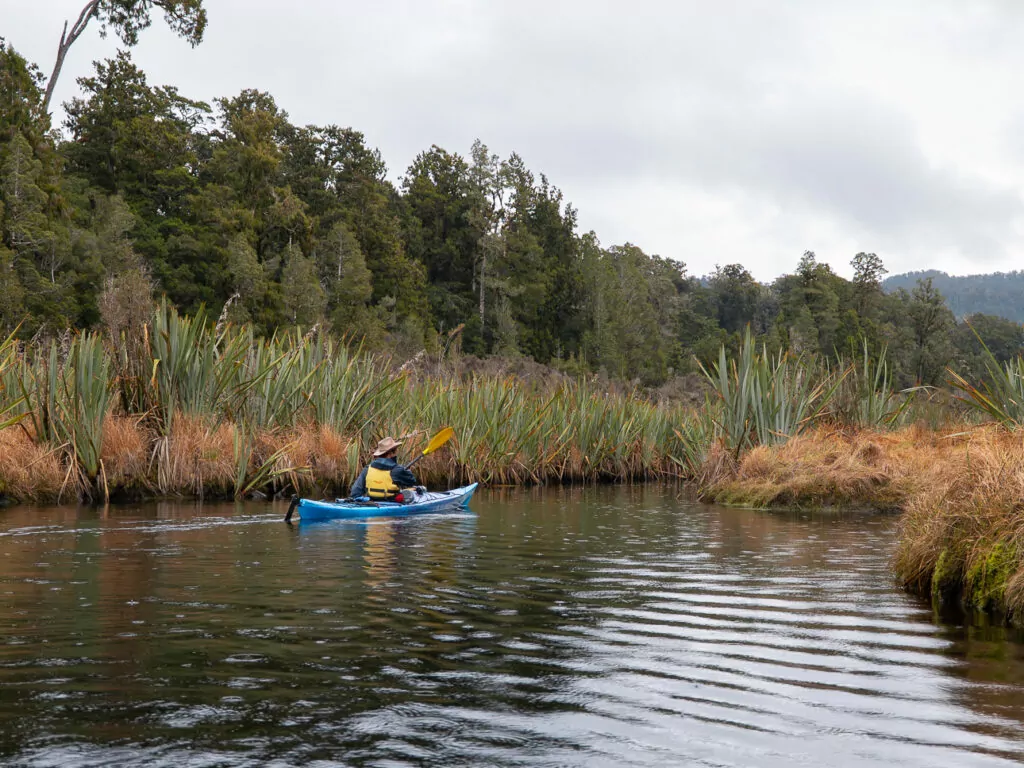
Budgeting for this West Coast New Zealand itinerary
Aside from a few big ticket bucket list experiences and frightening fuel prices, the West Coast can actually be relatively affordable compared to many other South Island destinations.
🚁 Splurge-worthy activities
The main things you’ll want to set aside some of your travel budget for are glacier activities (scenic flights, heli-hikes or ice climbs), guided outdoor fun like quad biking, kayaking or caving, and the carve-your-own-pounamu experience I’m about to rave about in the next section.
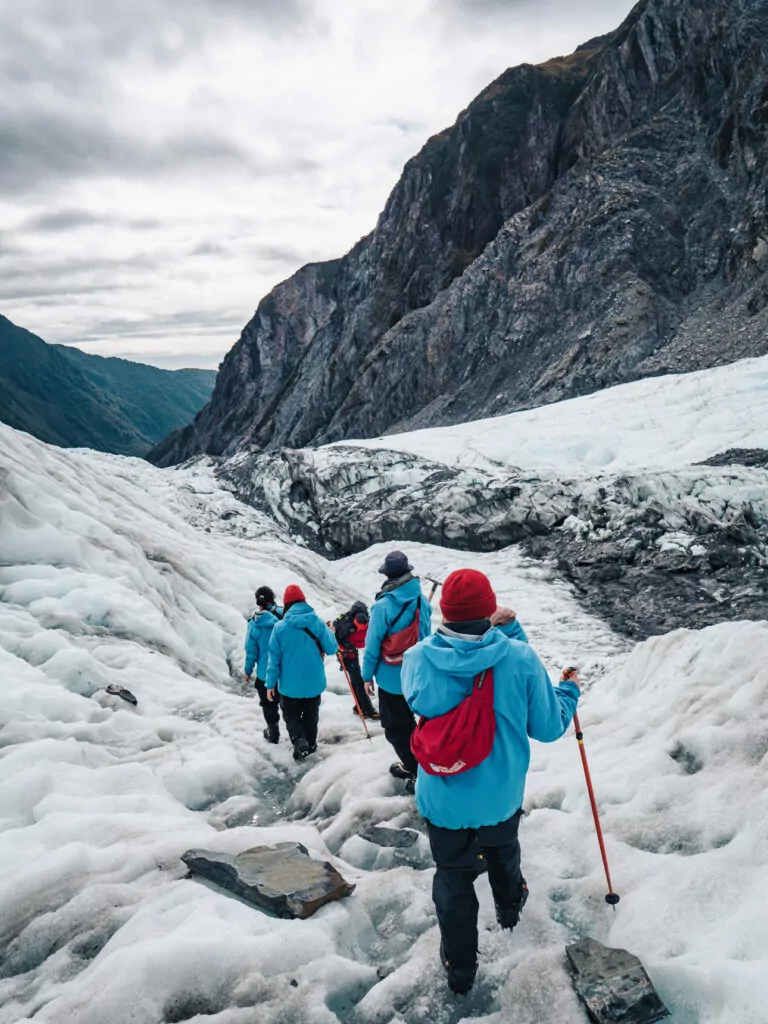
⛽ Fuel prices
This one’s unavoidable if you’re doing a West Coast road trip, with roughly 600-700km of remote road where remote service stations charge remote prices.
The southern half of the coast, from Hokitika over the Haast Pass to Wānaka, is always the priciest for petrol and tend to charge 15-25% more than the cheapest stations just outside of this 420km stretch.
Plan your fuel stops to avoid too many top ups in this area if you can help it, just don’t push your luck because running out of gas here would suckkkk and would end up costing more than if you just paid the higher price in the first place!
Download the Gaspy app (it’s free) to find the cheapest current fuel prices nearby. That way you can fill up when it’s most cost-efficient, or if you’re running low you can at least make an informed decision about whether to go for a full tank or just put in enough to bridge the gap to get you to cheaper top up spots.
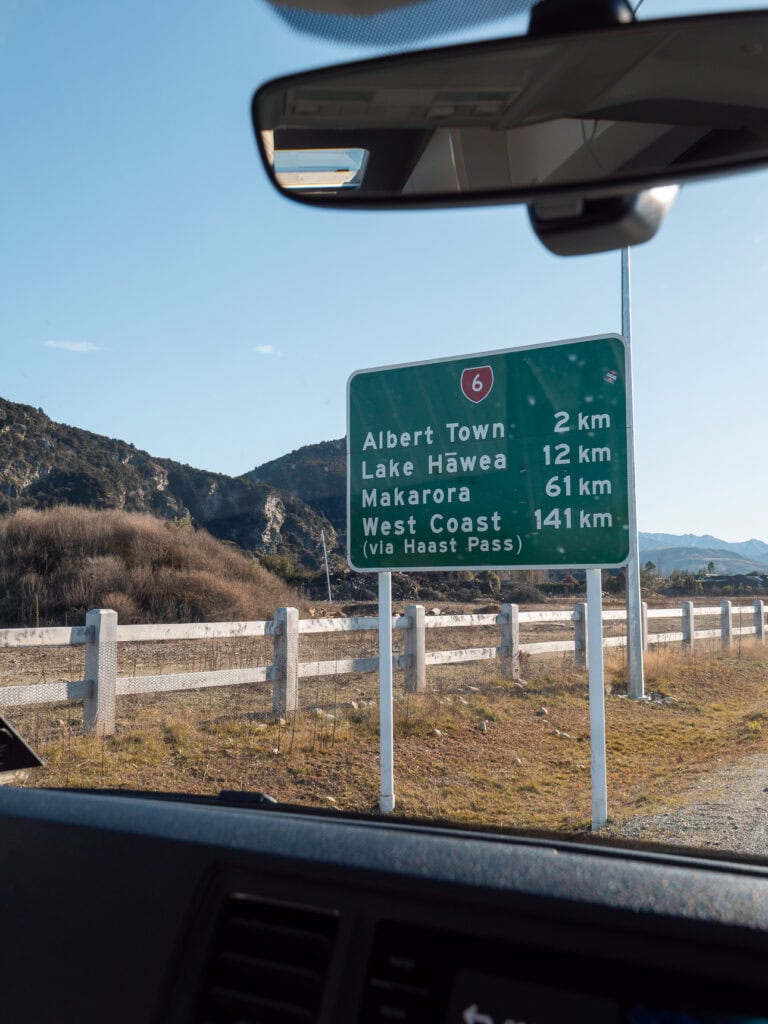
🛏️ Accommodation
Now onto the good news!
West Coast accommodation is more affordable across the board compared to the more accessible tourist hot spots like Queenstown, Christchurch and Tekapo, thanks to far fewer travellers making it to this side of the Southern Alps.
If you’re campervanning then you can find powered sites at basic campgrounds from as low as $25-40NZD per night, there are a bunch of hostels and holiday parks that have cheap and cheerful backpacker dorms, and if you’re looking for something a bit more comfortable you’ll find well-rated motels and B&Bs dotted all along the coast for you to keep costs down.
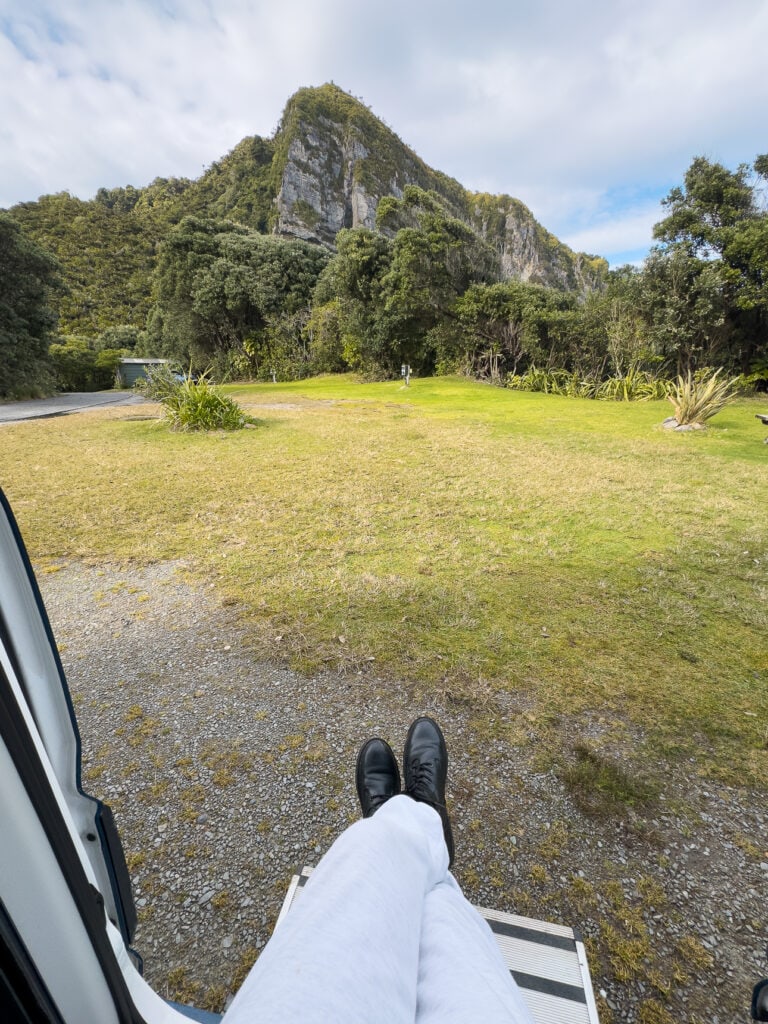
There’s a growing number of unique stays popping up on the West Coast which are a full experience rather than just a bed (like a treehouse in the rainforest 🤩). These understandably cost more, but the value for money is generally still better than the same kind of places in tourist hubs.
The main pinch points where you might get hit with higher prices are Franz Josef and Fox Glacier, which are frequented by keen overnighters coming from Queenstown and Wānaka, especially in the summer months. The more affordable options in these towns sell out first, so book them in advance if you’re visiting in a busy season.
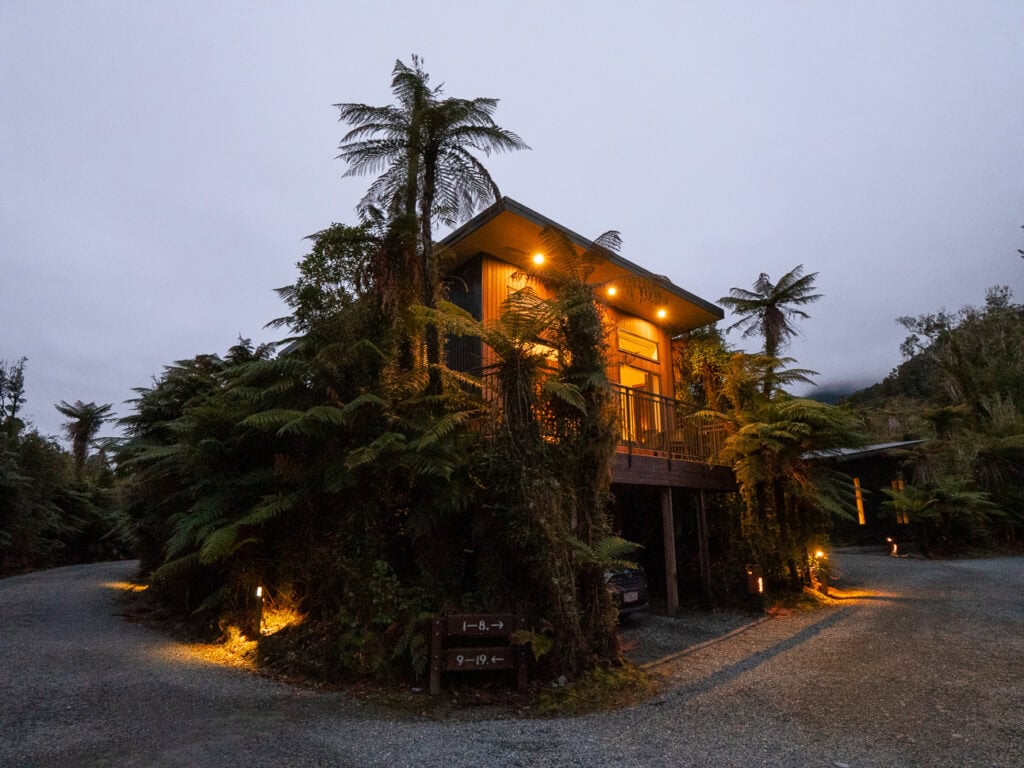
🍝 Food & drink
If you’re smart with your meal planning then food and drink won’t hit your wallet too hard either.
The West Coast culinary scene is characterised by casual eateries and local haunts rather than tourist-focused high end dining, which means a decent range of cheap eats, humble staples and hearty pub grub.
To keep food costs down as much as possible it’s best to book somewhere with kitchen facilities, all holiday parks will have them and many motels offer rooms with kitchenettes too.
You’ll find the best range and lowest prices at the proper supermarkets in Westport, Greymouth and Hokitika, the smaller shops and convenience stores in smaller towns will charge more.
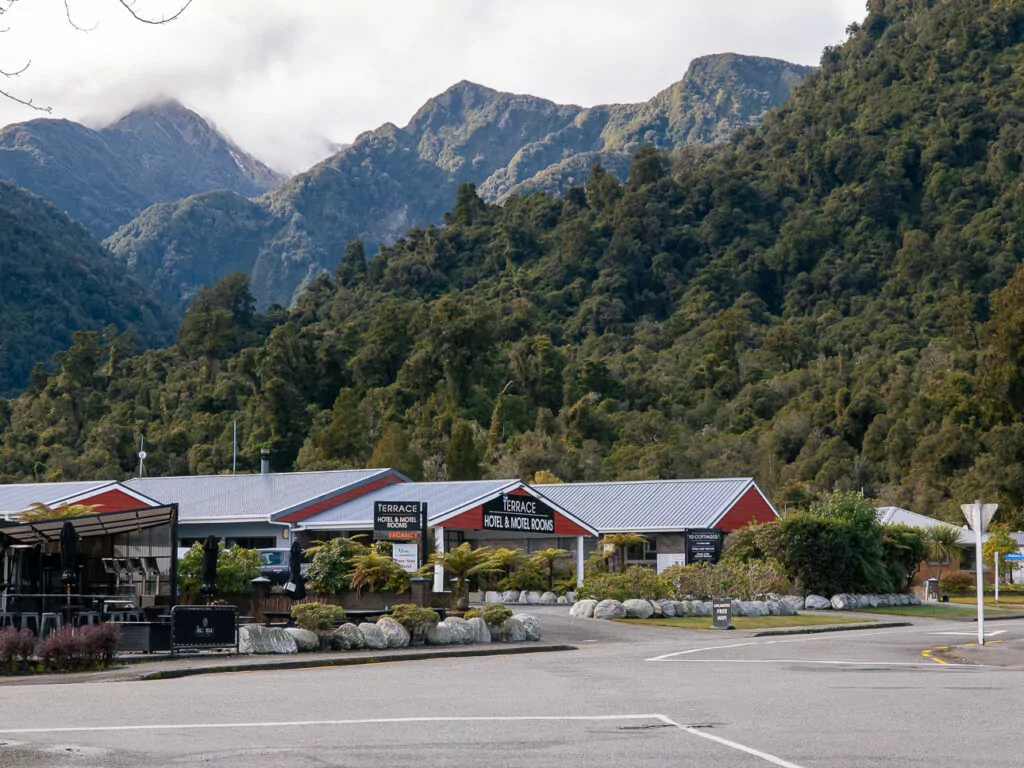
Driving tips for your West Coast road trip
The actual drive along the wild and windy coast is definitely a highlight of the trip, but if this is your first time driving in rural New Zealand then there are some super important things to know before you hit the road.
- Pay attention to speed signs. Obviously you need to stick to the red-circle speed limits, but pay extra attention to the yellow speed advisory signs on tight bends, because these tell you the suggested safe speed to take each corner. Experienced local drivers might not (okay, almost certainly won’t) slow right down to these speeds, but if you’re new to these roads, driving a larger vehicle like a campervan, or if the road is wet or icy, slowing down to the advised speed is the safest option. And on that note…
- Pull over if you notice cars behind you. If you spot more than a couple of cars building up behind you, it’s essential Kiwi road etiquette to pull over and let faster vehicles pass. Locals know these roads like the back of their hand, there’s no shame in not matching their speed! There are safe stopping areas (many with epic views) all along SH6, and the stretches without proper stopping areas usually have signposted slow vehicle bays where you can pull to the side and drive slowly before joining the back of the queue.
- Don’t underestimate driving distances. Google Maps might tell you that the 460km road from Franz Josef Glacier to Nelson will take less than six hours, but this doesn’t take into account delays due to inclement weather, slow vehicles or the hundred different photo stops that’ll grab your attention. Give yourself extra drive time for each journey to be safe and avoid stress.
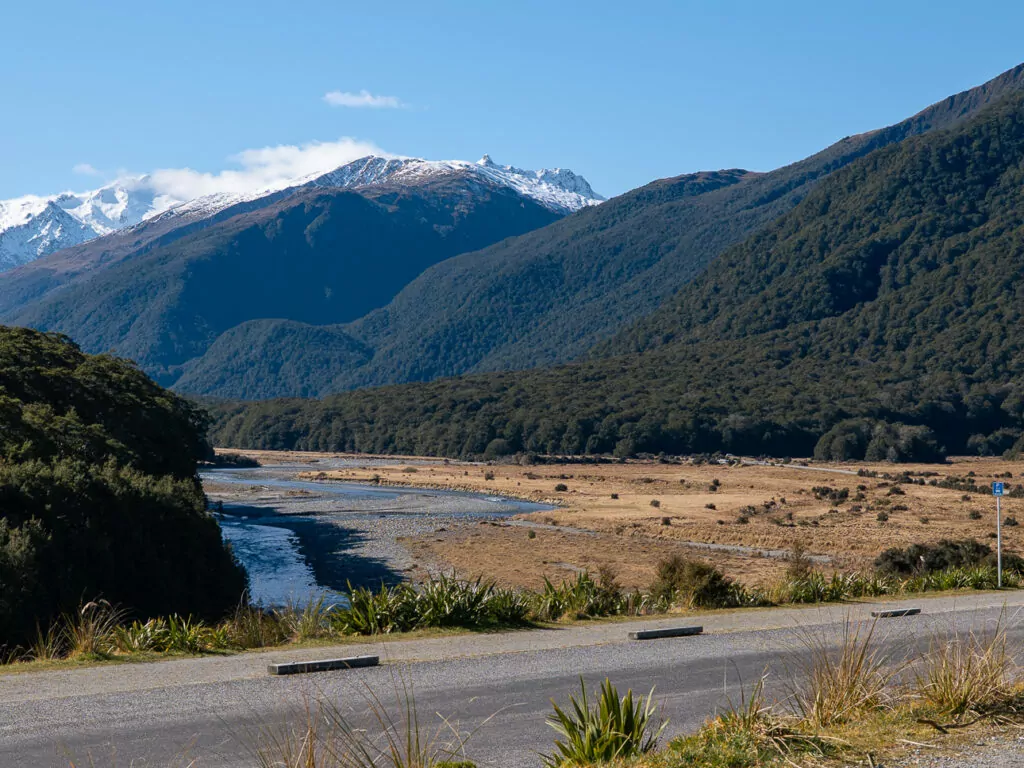
- Watch your fuel gauge. I know I just told you about the painful fuel prices, but I need to double down on the advice to not push your luck and risk running out of gas. Fuel stations are few and far between along the southern coast and across the Haast Pass especially, make sure you’ve got more than enough to cover that distance.
- Check road conditions before you set off for the day. Alpine passes can get icy in winter and low-lying areas can be prone to flooding during heavy rain, so it’s good to check the NZTA Waka Kotahi website for any road closures or warnings in case you need to alter your plans.
- Download offline maps. Don’t rely solely on cell service, especially if you’re taking detours off the main highway to hiking trails, viewpoints or campgrounds. Download offline maps so you can navigate the route without needing any bars.
- Drive to the conditions. Kiwis have grown up with the jingle 🎶 drive to the conditions, when they change reduce your speeeed 🎶 because it is SO important here to alter your speed and your following distance when it’s wet, foggy or icy. The tight bends, steep cliffs and remote location of the West Coast make these roads very unforgiving, it’s just not worth taking any risks.
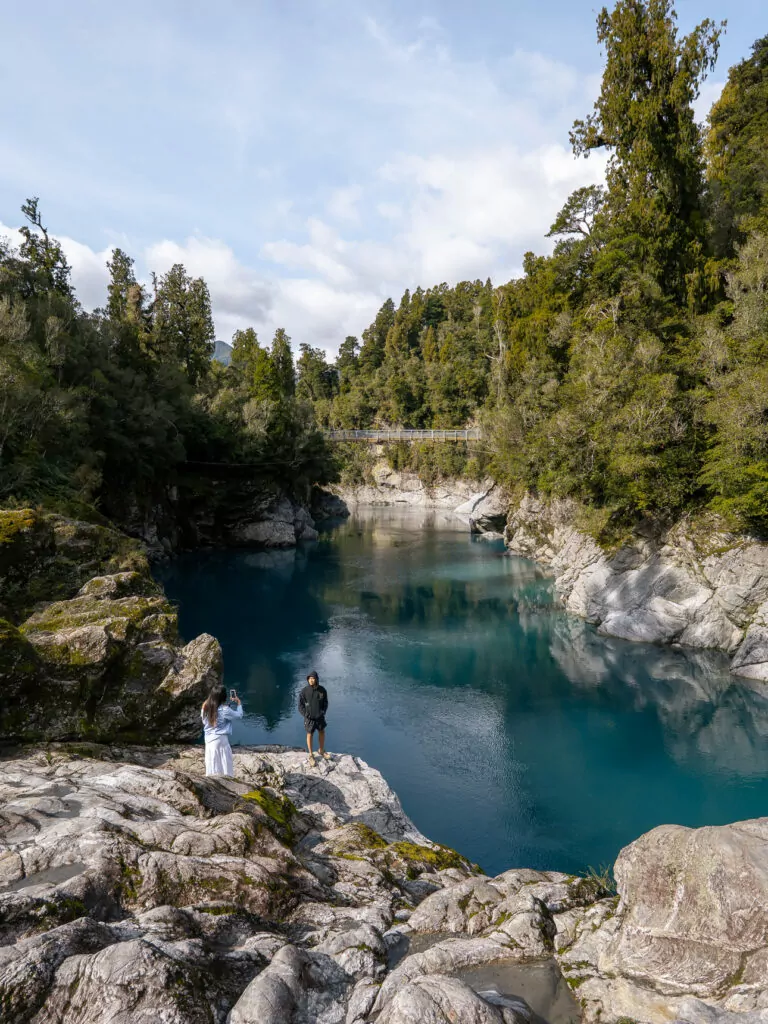
Safety tips for the West Coast
The West Coast is safe in terms of crime, but you need to factor in the usual risks that come with exploring remote wilderness areas.
- Stick to maintained trails & obey all signs/barriers. Lots of heavy rainfall means the West Coast environment is constantly changing, so even though it looks like the rocky area over that barrier miiiight have the best vantage point for photos, you have no idea if it’s actually stable ground. Barriers, signs and trail closures or warnings are there for your safety, listen to them.
- Hike safely. Take the usual hiking precautions, like bringing sufficient layers, sticking to your skill level and always telling someone where you’re going and when you expect to be back. If you’re veering beyond the well-touristed short walks then it’s a good idea to take a distress beacon, you can hire PLBs (Personal Locator Beacons) from the DOC visitor centres in Franz Josef, Punakaiki or Arthur’s Pass, find more info here.
- Don’t get too close to seals. We might not have the deadly snakes, spiders and birds of our trans-Tasman neighbours, but kekeno (NZ fur seals) can be brutal if you get too close. Keep at least 20 metres away for both your safety and theirs.
- Water safety. Most of the West Coast beaches are more for surfing and sunsets rather than swimming, the currents here can be strong and there’s no lifeguard patrol (except for a couple of beaches on specific days in summer). If you’re desperate for a dip then head to one of the lakes instead, local i-SITEs will be able to give you advice on where to go.
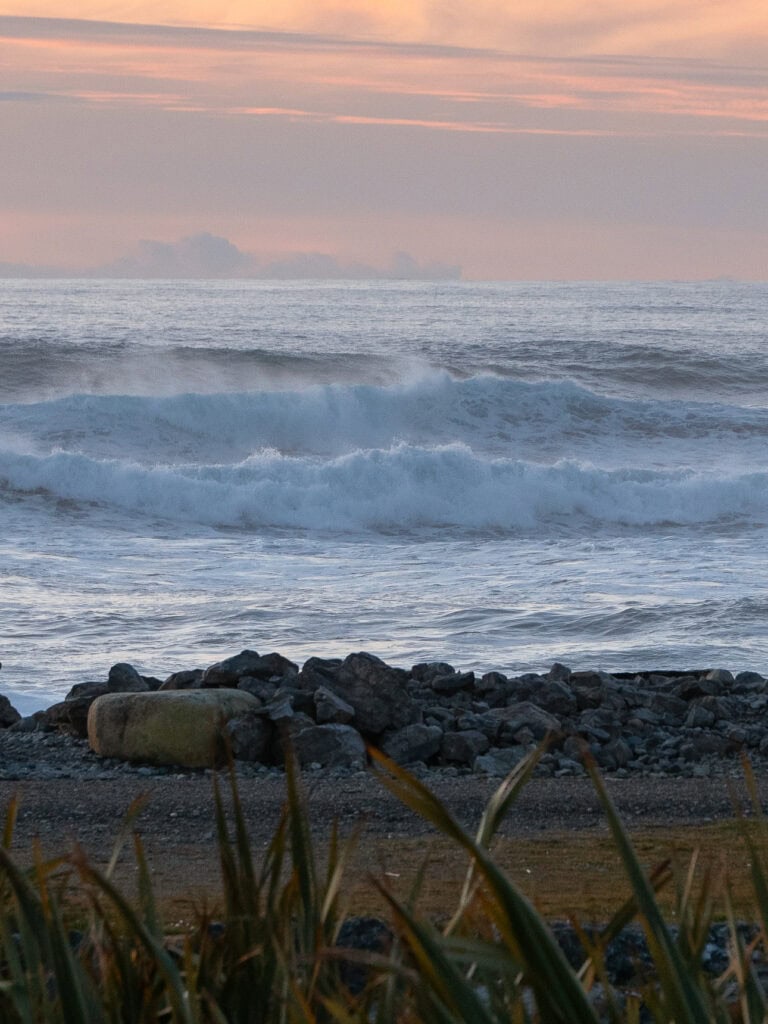
The ultimate 7 day West Coast road trip itinerary
While you could easily fill a few weeks exploring every corner of Te Tai o Poutini, this 7 day West Coast road trip itinerary covers the major highlights with some buffer time built in to give you flexibility around the weather.
If you’ve got more time (lucky you!) you can slow it right down and enjoy a more relaxed trip, and if you’re working with fewer days there are suggestions for 3 day and 5 day West Coast road trips at the end as well.
Where does this West Coast road trip start?
I’ve written the road trip itinerary travelling from the south to the north, starting in Wānaka and crossing the Haast Pass to reach the West Coast and finishing up in Maruia Hot Springs, just because that’s what I did on my recent trip.
You could do this trip in either direction, choose whichever way suits you best.
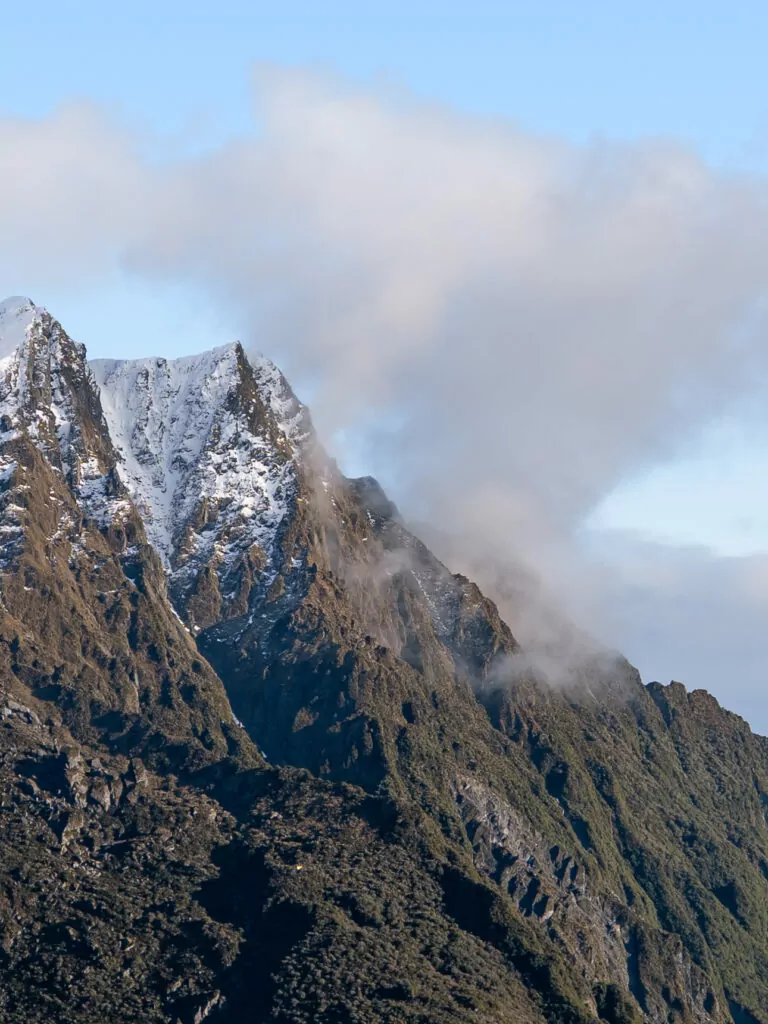
Day 1: Wānaka to Franz Josef Glacier via Haast Pass
🗺️ Distance: 285km
🚗 Driving time without stops: 3h 50m
Your West Coast adventure begins with one of the most spectacular roads New Zealand has to offer, a four-hour-ish drive (without stops) that takes you under tree tunnels, over glacial rivers and past thundering waterfalls you can hear as you drive by.
But don’t make the mistake of zipping through just to reach Glacier Country, make a day of it! The road is lined with lookouts, short walks and longer adventures if you’re keen (and prepared) for a proper hike.
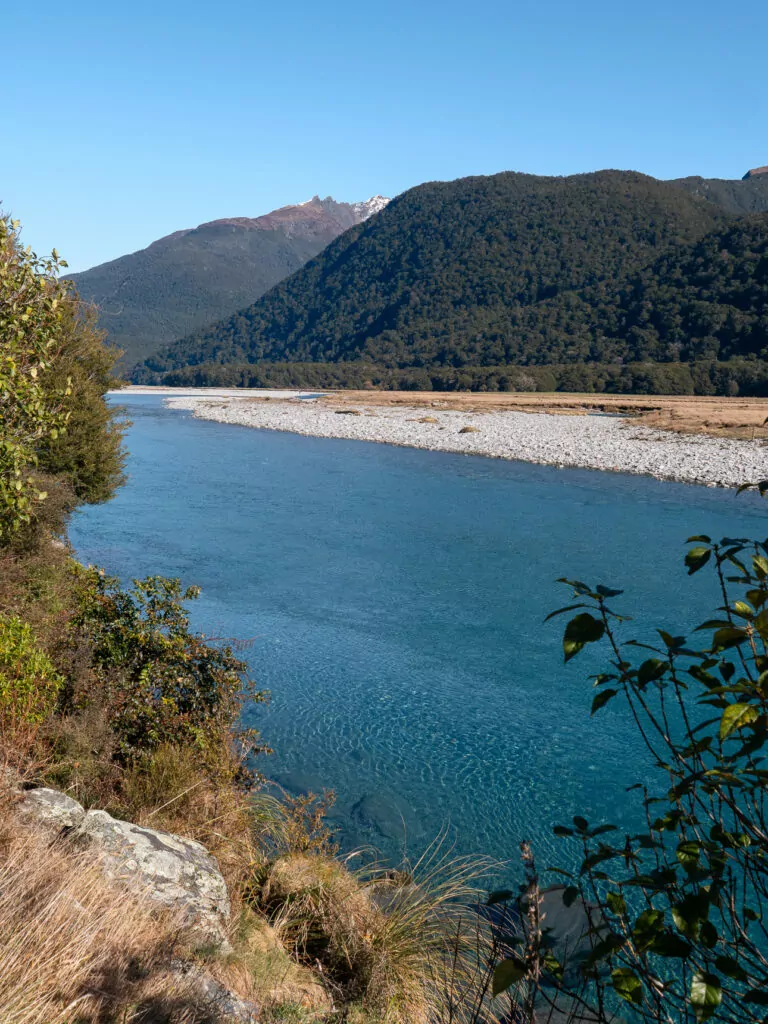
First things first though, there are a few things you’ll want to do before you depart Wānaka:
- Top up your fuel tank! The stretch of road between Wānaka and Hokitika tends to have the highest petrol/diesel prices in the country, you’ll want to minimise your need to refuel in this area. If you fill up in Wānaka (the stations on Ballantyne Road are always the cheapest) then you’ll probably only need a small top up (if any) at the pricey stations before you reach the better-priced stations around Hokitika and Greymouth.
- Download offline maps and any info you need for walks along the way, there’s very patchy cell service from the end of Lake Wānaka until you reach Glacier Country.
- Do a grocery shop, Wānaka is your last supermarket before Hokitika on day four of the itinerary so it’s the best spot to stock up on supplies. There’s a small grocery store in Franz Josef and some convenience shops dotted along the southern coast for essentials, but with limited range and high prices.
- Pack a lunch for today’s drive day too, there are no food stops at all between Makarora and Haast township but there are plenty of phenomenal spots for a picnic.
- Check the road conditions on the NZTA website. The Haast Pass only reaches a maximum elevation of 562m so it’s not as prone to winter closures as the higher alpine passes, but ice, snow or heavy rain can still cause delays and it’s better to know about that in advance.
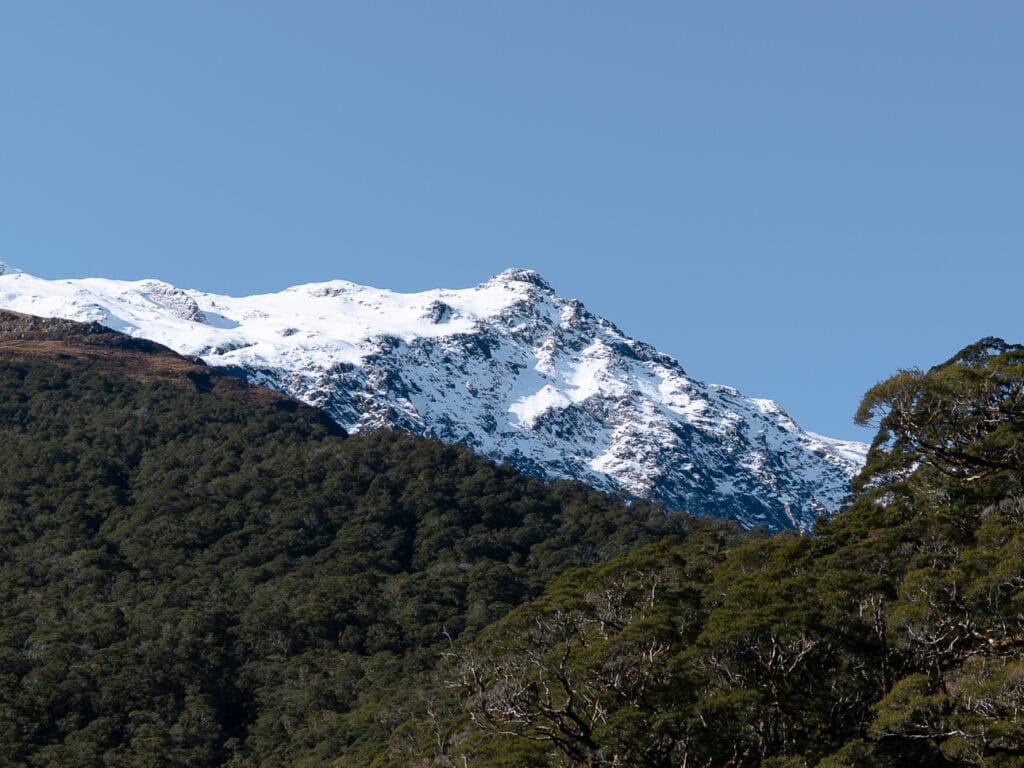
Where to stop between Wānaka and Franz Josef Glacier
Once you’ve got all that travel admin out of the way, it’s time to hit the road.
The views are impressive from the get-go, this part of the country is striking in any season and in any weather conditions. Buffer one hour on top of Google’s suggested drive time for quick photo stops from the roadside lookouts, if you know you’re a sucker for a good view and struggle to pull your eyes (or your lens) away then you’ll want another 30m-1hr on top of that.
These are my favourite viewpoints and short walks to add onto your Haast Pass road trip itinerary.
- Lake Hawea: Told you it’s beautiful right from the start! There are lookouts scattered along the lakeside road but I love this one and this one. These are on the other side of the road from your lane if you’re following this itinerary, so only pull over where it’s safe.
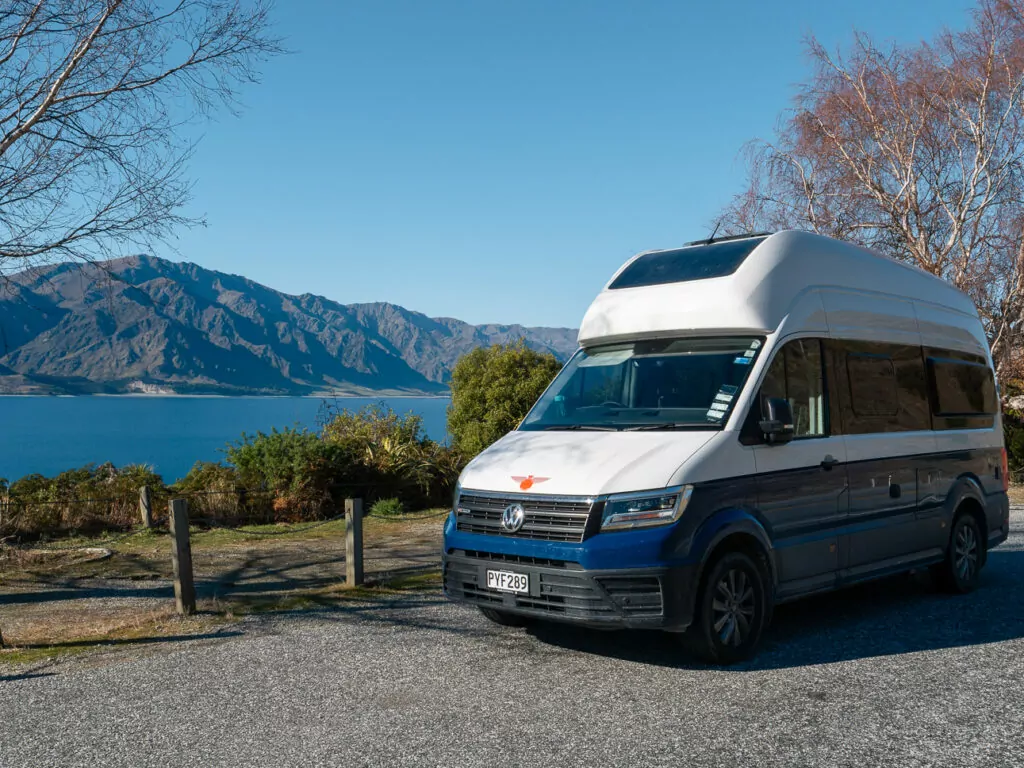
- The Neck: A brilliant vantage point between both lakes.
- Lake Wānaka: Lake Wānaka sits to your left when you’re heading out to the West Coast so it’s easier to quickly pull in and out for a quick shot. Again there are plenty of stopping areas with insane views, but my faves are this one and this one.
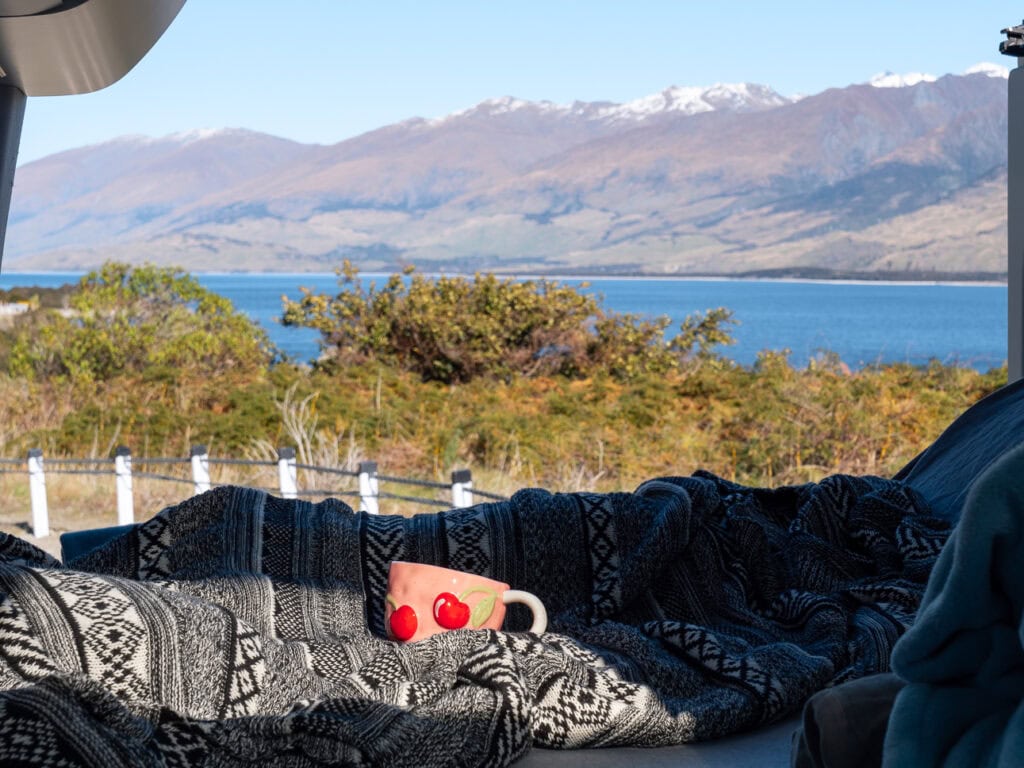
- Makarora River: This stopping area is right above the river looking up to the mountains, the water is so clear here that I could see the fishes’ shadows on the riverbed!
- Blue Pools: The most famous short walk along this highway, the Blue Pools track is an easy 1h return walk through native forest to see the impossibly blue waters of the Makarora River framed by mountains.
- Fantail Falls: Beautiful cascading waterfall just 200m from the carpark.
- Gates of Haast: A roaring glacial river running under a one way bridge, with a small carpark just after the bridge if you want to pull over for photos.
- Thunder Creek Falls: Another quick one to stretch your legs, walk 100m from the carpark to a towering 28m high waterfall.
- Thunder Creek Falls
- Fantail Falls
- Roaring Billy Falls: A 25 min return walk to see (and hear) the Roaring Billy Falls that rush over boulders above the Haast River.
- Ship Creek: Welcome to the coast! Two easy loop walks from the carpark (20 mins and 30 mins) to give you a change of scenery from glacial rivers and waterfalls.
- Knights Point Lookout: An elevated panoramic lookout over the Tasman Sea, conveniently a reliable spot for phone service too.
You can see how that four hour drive ends up taking the whole day!
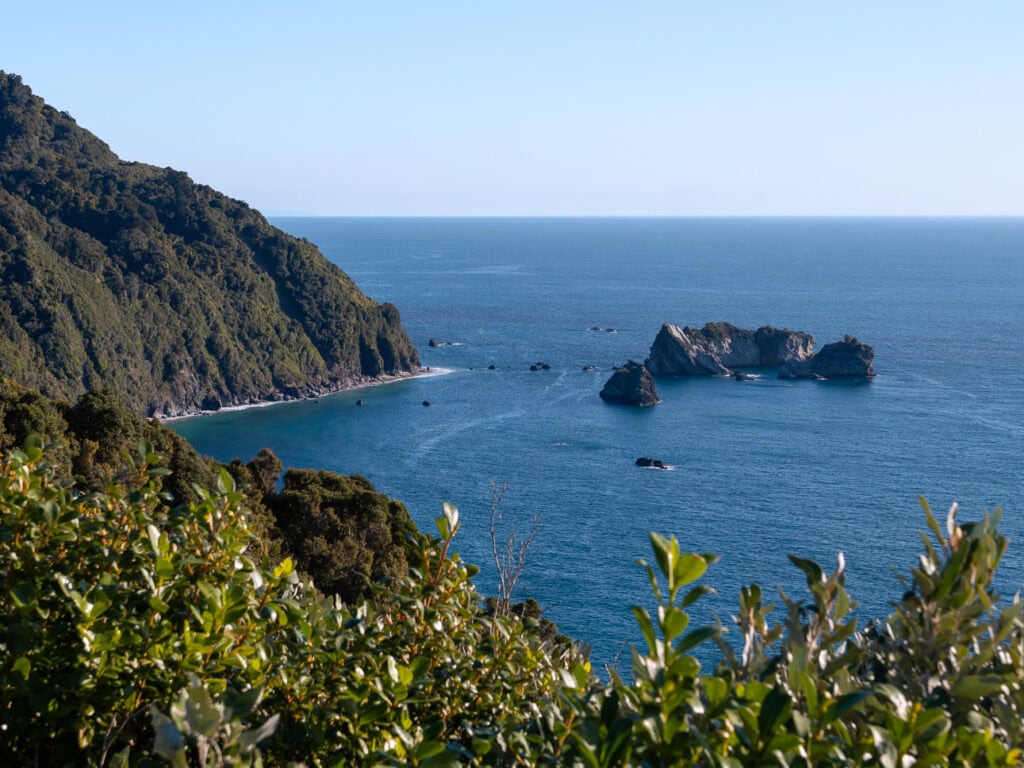
Franz Josef Glacier or Fox Glacier?
Glacier Country is home to two iconic glaciers just 25-30 minutes apart, and the townships offer slightly different experiences to visitors. The best one for your stay will totally depend on your priorities, or you could split your trip and stay in both.
Fox Glacier is the first one you’ll hit on the drive heading north, it’s quieter and smaller with fewer tourist amenities, but it feels less commercialised than FJ further up. It has an excellent campground, a selection of motels and hotels, a handful of eateries and a couple of convenience stores that carry the essentials but at a premium.
There are fewer organised activities around Fox Glacier, there are heli-hikes and scenic flight operators with bases in town (and take off just down the road) but for anything like kayaking, quad biking, hot pools etc. you’ll have to drive up to Franz Josef.
Fox does offer the best access to Lake Matheson though, where you can find the famous Aoraki and Mt Tasman reflection viewpoint.
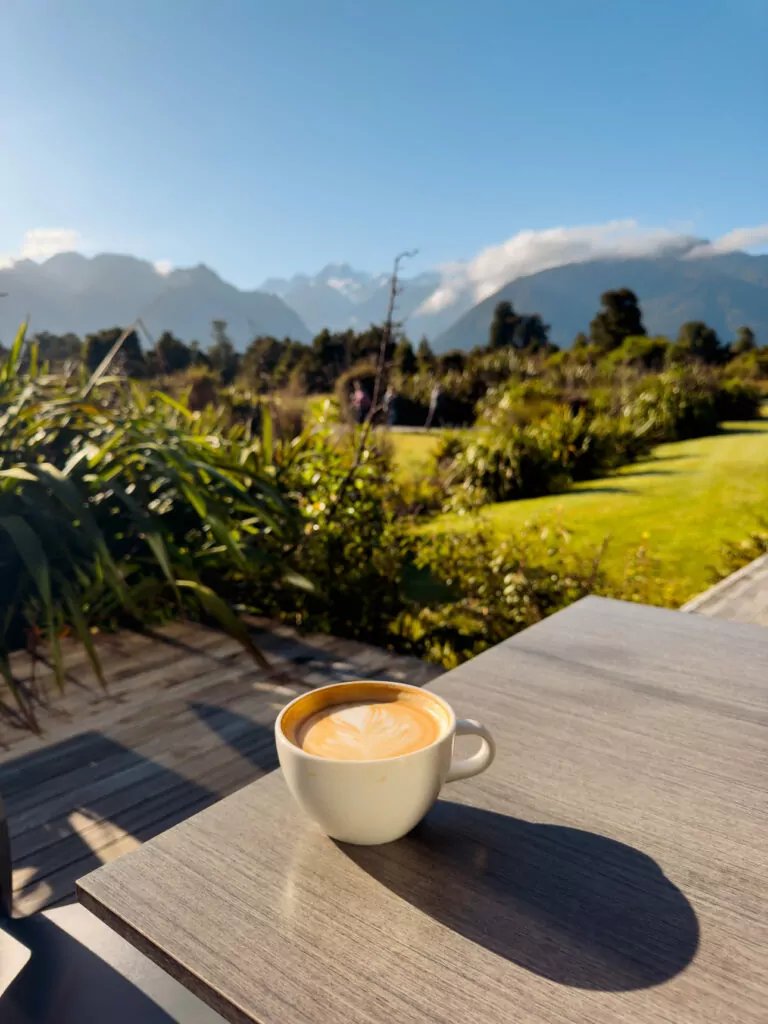
Franz Josef Glacier is the bigger hub with loads of accommodation for all budgets, a bunch of restaurants and a wider range of activities, with scenic flights, heli-hikes, kayaking, quad biking and guided walks running from town.
There’s no full-size supermarket but there is a Four Square grocery store which is the step above a convenience store in terms of range and price.
This is a bit of a cop-out but I truly love both of them. Fox is ideal if you want to head to Lake Matheson for sunrise and if you want to escape the crowds during busy periods, but Franz Josef is better for food choices and things to do, and in the off season it can still feel like you have the whole place to yourself.
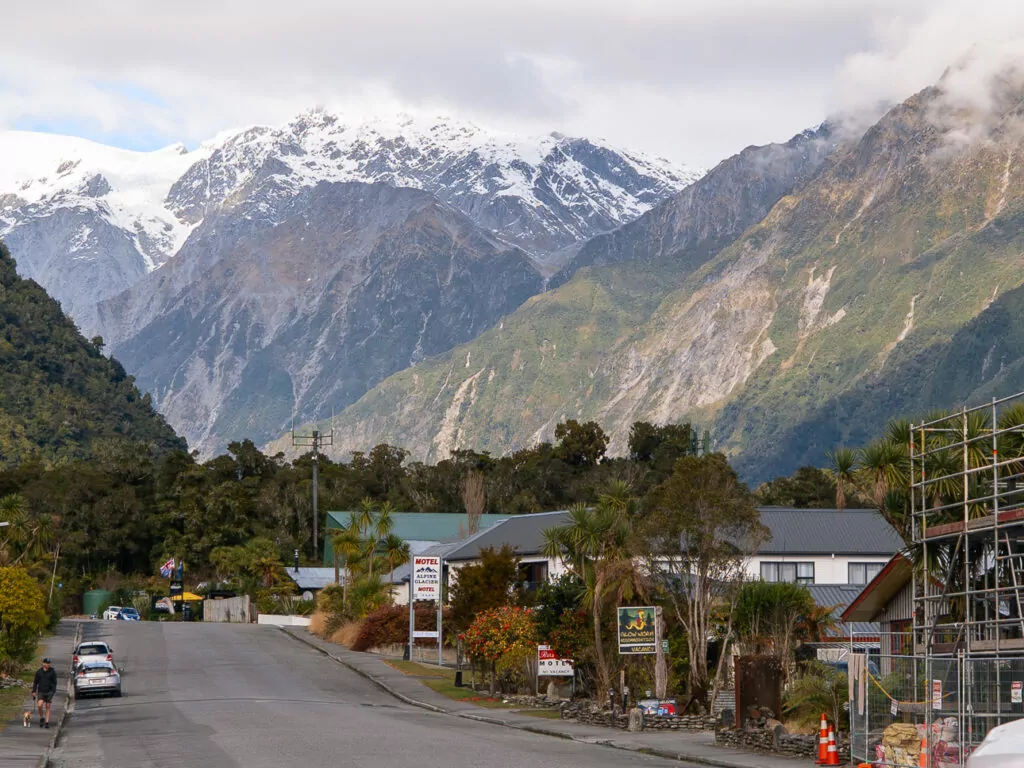
Dinner suggestions in Glacier Country
Chances are you’ll be peckish by the time you get to Glacier Country, you could stop at Betsey Jane Eatery in Fox Glacier for dinner or continue through to Franz Josef and grab a meal at Alice May, Monsoon, Blue Ice or King Tiger.
Where to stay in Franz Josef Glacier or Fox Glacier
Camping:
- Rainforest Retreat Holiday Park in Franz Josef is literally set amongst the ancient rainforest, with native trees towering over campsites and picnic tables, non-stop birdsong and mountains in the background. I love this place so much! (87% on Rankers Camping)
- Fox Glacier TOP 10 Holiday Park is ideal if you want to hit Lake Matheson at first light, just a four minute drive away, and the view of the Southern Alps right from your van is just unreal (80% on Rankers Camping)
- Rainforest Retreat
- Fox Glacier TOP 10
Budget:
- Rainforest Retreat also has Flashpacker dorms and motel rooms for budget travellers without a vehicle to sleep in (8.6/10 on booking.com from 2000+ reviews)
- Fox Glacier TOP 10 also has basic rooms and studios too (8.6/10 on booking.com from 630+ reviews)
- Wild Kea Lodge, Franz Josef (8.9/10 on booking.com from 1660+ reviews)
Mid-range:
- Rainforest Retreat’s cottages, lodges & tree huts, Franz Josef (8.6/10 on booking.com from 2000+ reviews)
- Bella Vista Motel, Franz Josef (8.6/10 on booking.com from 1050+ reviews)
- Franz Alpine Retreat, Franz Josef (8.4/10 on booking.com from 1140+ reviews)
- Mt Cook View Motel, Fox Glacier (8.8/10 on booking.com from 1270+ reviews)
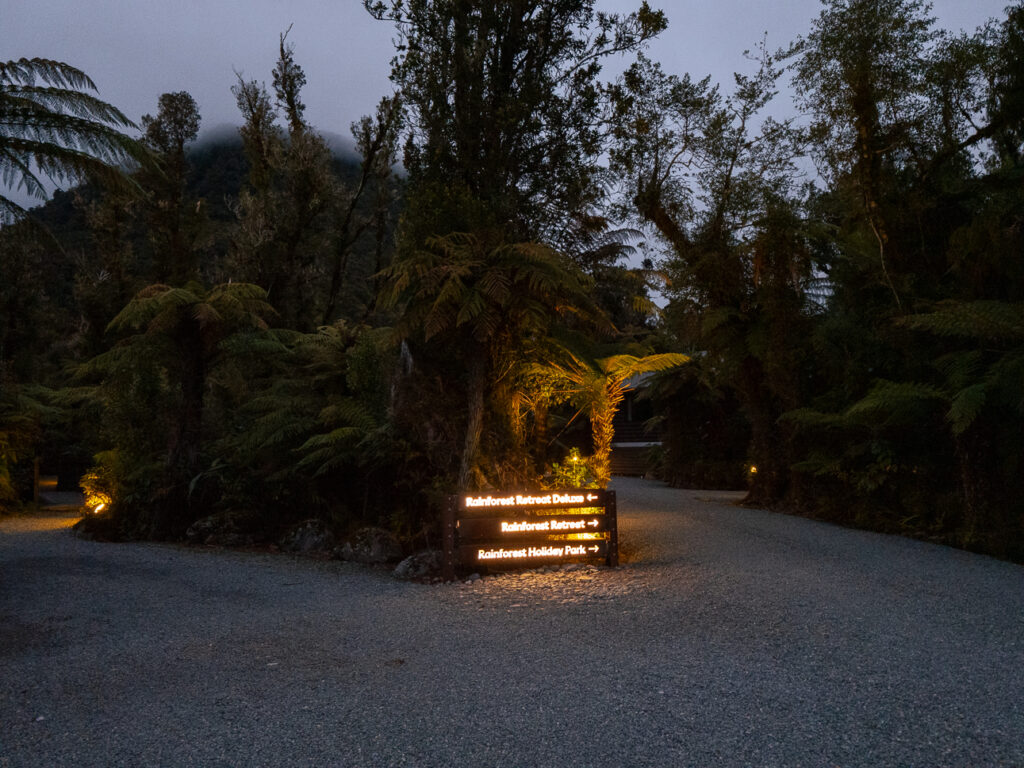
Luxury:
- Sorry to be a broken record but once again, my top pick is Rainforest Retreat 🍃 Their Deluxe Tree Huts and Tree Lodges boast super comfy interiors and private decks surrounded by native bush, and the two-bedroom Deluxe Spa Tree Houses go all out with a full kitchen and private spa pool. The ultimate choice for a special stay in Glacier Country! (9/10 on booking.com from 170+ reviews)
- Magic after dark ✨
- My Deluxe Tree Hut
- So cosy!
- Te Waonui Hotel, Franz Josef (8.6/10 on booking.com from 350+ reviews)
Days 2-3: Glacier Country
About Glacier Country
You’ve got two full days to experience the West Coast’s biggest drawcard, the twin glaciers that sit high in the Southern Alps, looming over thick native rainforest and feeding the braided rivers that flow out to the Tasman Sea. This topographical combo only exists in a few places on the planet!
While the townships are tiny, the adventures around them are anything but. The glacier heli-hike is the top bucket list activity, but there are also scenic flights that take you deeper into the Southern Alps, adrenaline-fuelled quad bike and buggy tours, laidback kayak trips and lake cruises, plus wildlife watching, short walks and photography spots galore.
Two days here gives you enough time for a big ticket experience, a few smaller adventures and a buffer for Glacier Country’s unpredictable and changeable alpine conditions. Book any weather-dependent activities for your first morning so if the weather gods wake up grumpy, you’ve got breathing room to shuffle things around.
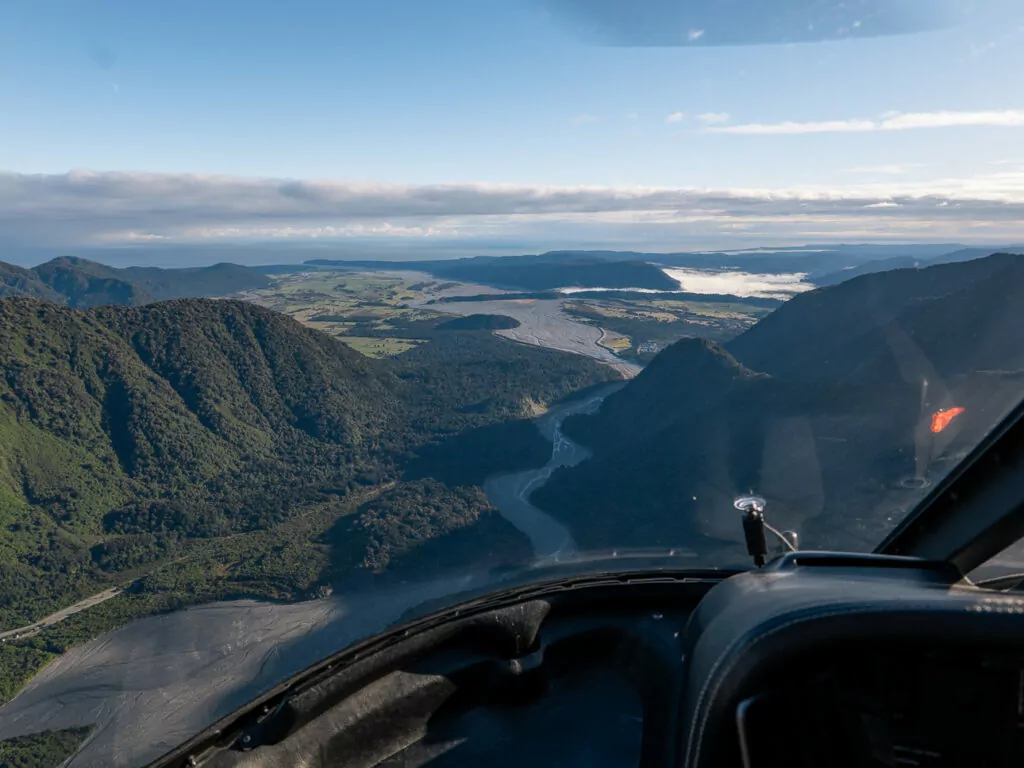
Best things to do in Franz Josef Glacier/Fox Glacier
🚁 Go heli-hiking
Glacier Country’s crown jewel experience certainly isn’t easy on your budget, but if you have to choose just one New Zealand activity to splurge on, this is a top contender.
Heli-hikes operate from both Franz Josef and Fox Glacier, where you’ll get suited up in appropriate attire for icy caves and crevasses before jumping into a helicopter for the short but ultra-scenic journey up the valley to the mountain landing pad. Then it’s time to strap on some crampons and follow your guide around the ancient ice formations!
These trips (like any in the mountains) require safe weather for flying, so they can get cancelled or postponed at the last minute.
If a heli-hike is one of your top priorities, I cannot stress enough the importance of staying a couple of nights here to give you some flexibility to rebook in case clouds or wind throw a spanner into the works.
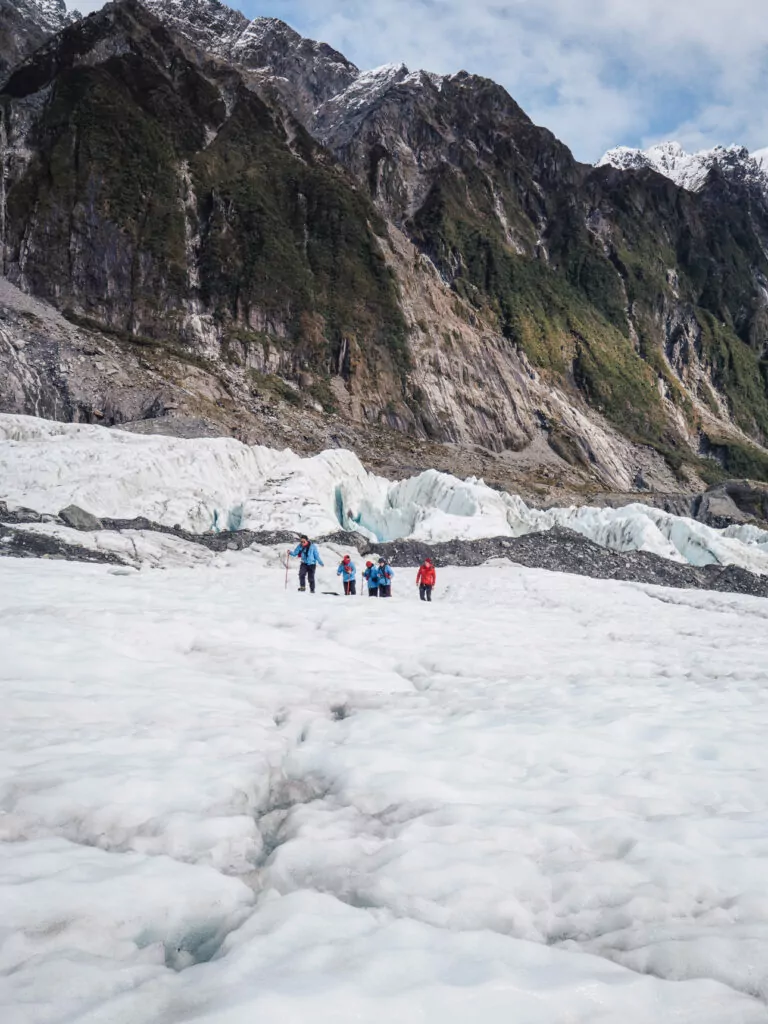
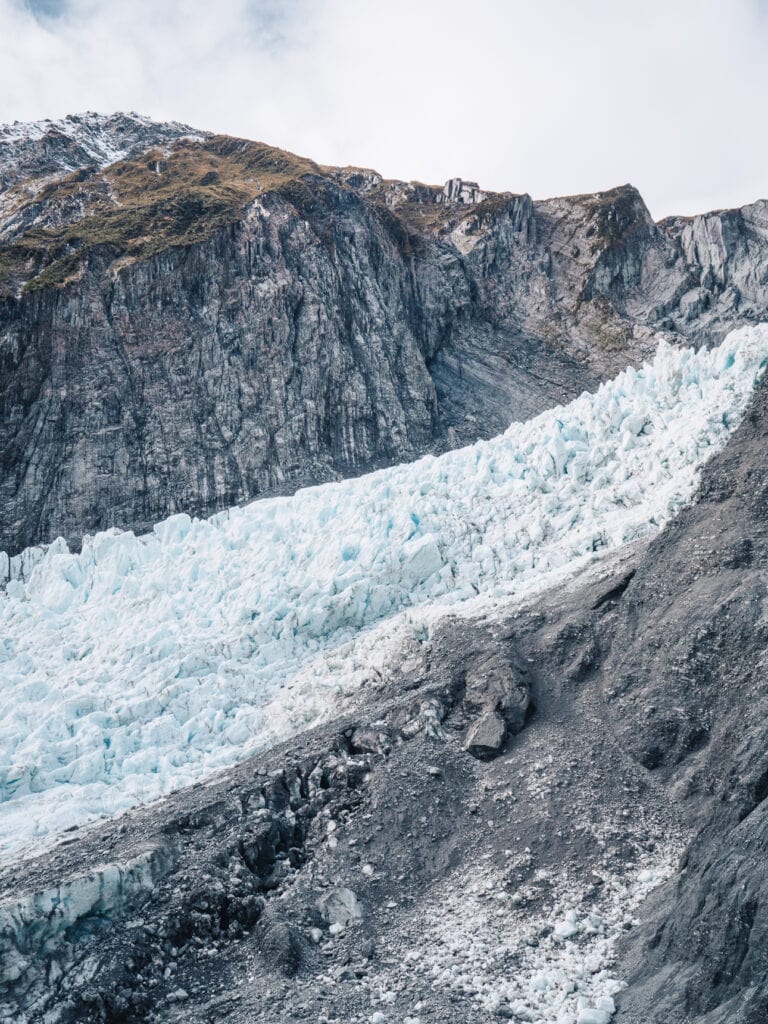
🧗🏼♂️ Try ice climbing
If you’re an active adventurer looking for something even more epic, a glacier ice climb is probably the coolest thing you’ll ever do in your life. Literally 🥶
This is a full day thing, about 8 hours from start to finish with 5.5 hours up on the ice in a small group of four climbers and your expert guide/instructor.
No ice climbing experience is necessary but you do need to have reasonable upper body strength. That counts me out 🙃 sooo if you end up doing it then come back here and tell us how it was in the comments!
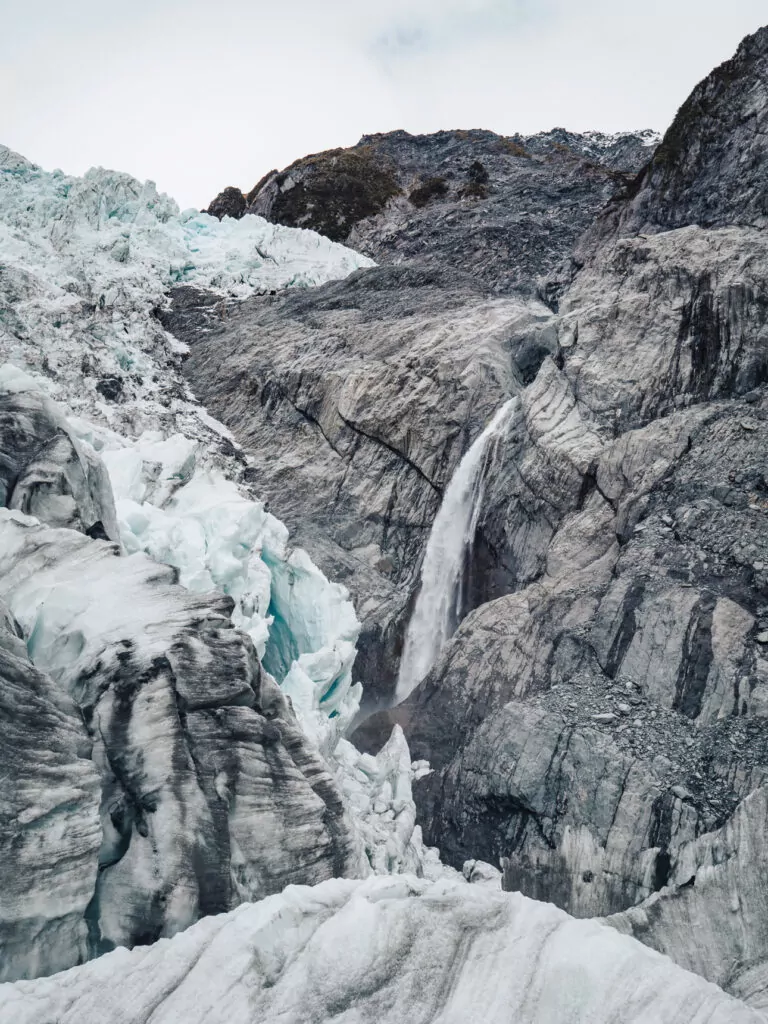
🏍️ Get muddy on a quad bike or buggy tour
If you want the ultimate all-weather activity, join Franz Josef Wilderness Tours for a quad bike or buggy tour through the rugged terrain at the foot of the Southern Alps.
These guided off-road adventures will have you zooming through ancient rainforest and crossing glacial rivers, all with stellar views at every turn and plenty of laughs along the way.
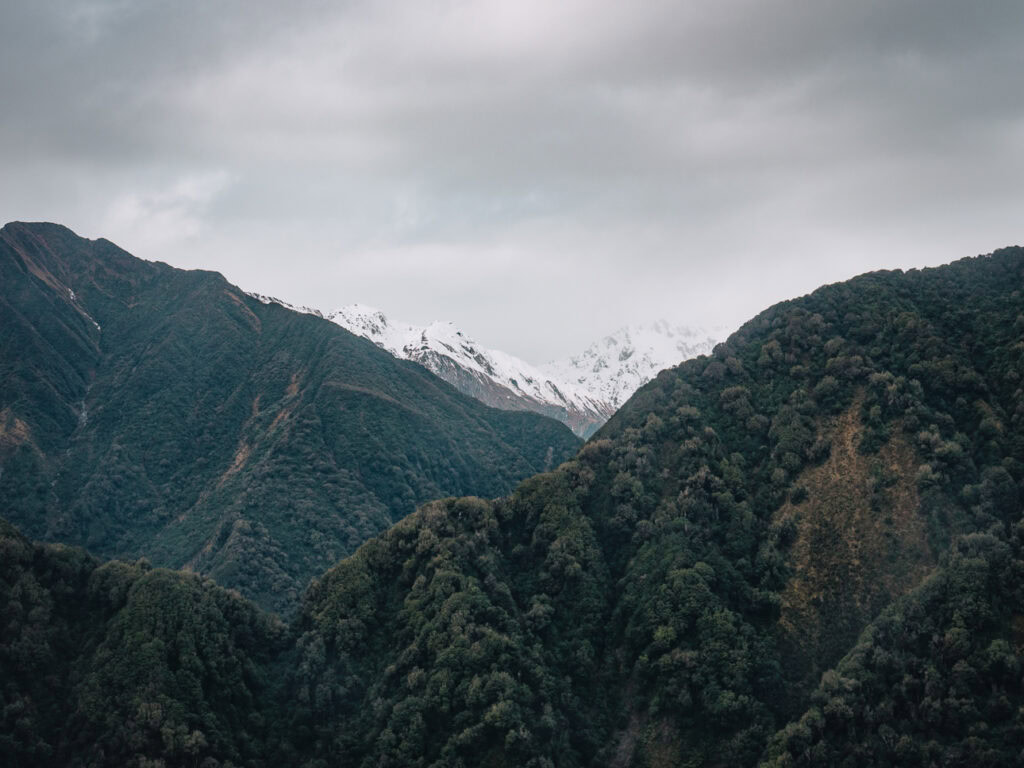
📸 Take a scenic flight
If a full heli-hike is out of your budget or if time is too tight, a scenic flight is a quicker and cheaper way to get up close and personal with the glaciers.
There are flights from both Franz Josef and Fox Glacier, options for helis as well as small fixed wing planes, and most flights include snow or glacier landings so you can still set foot on the ice for magnificent photos without having to strap on the crampons.
Here are some top-rated flights:
- 20 minute glacier flight with a snow landing (the cheapest option)
- 35 minute twin glacier flight with a snow landing
- 60 minute 4-glacier flight with two snow landings
- Celebrating something special? Go all out with this private heli tour (up to 6 people) that includes a picnic of local treats literally on the Tasman Glacier.
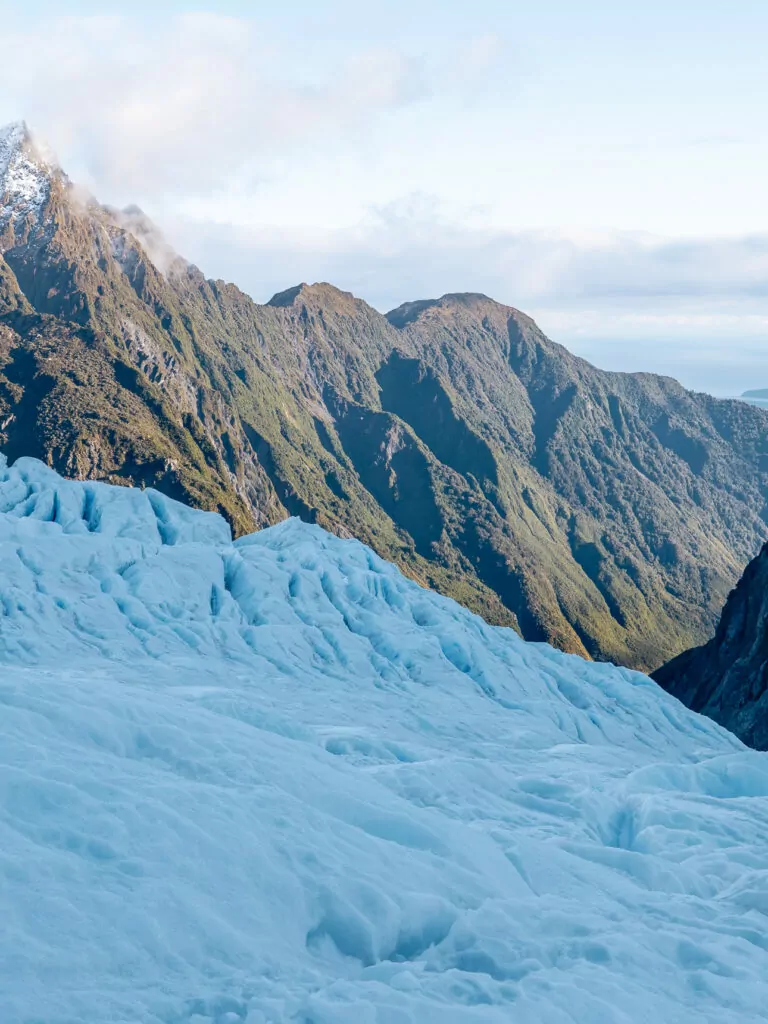
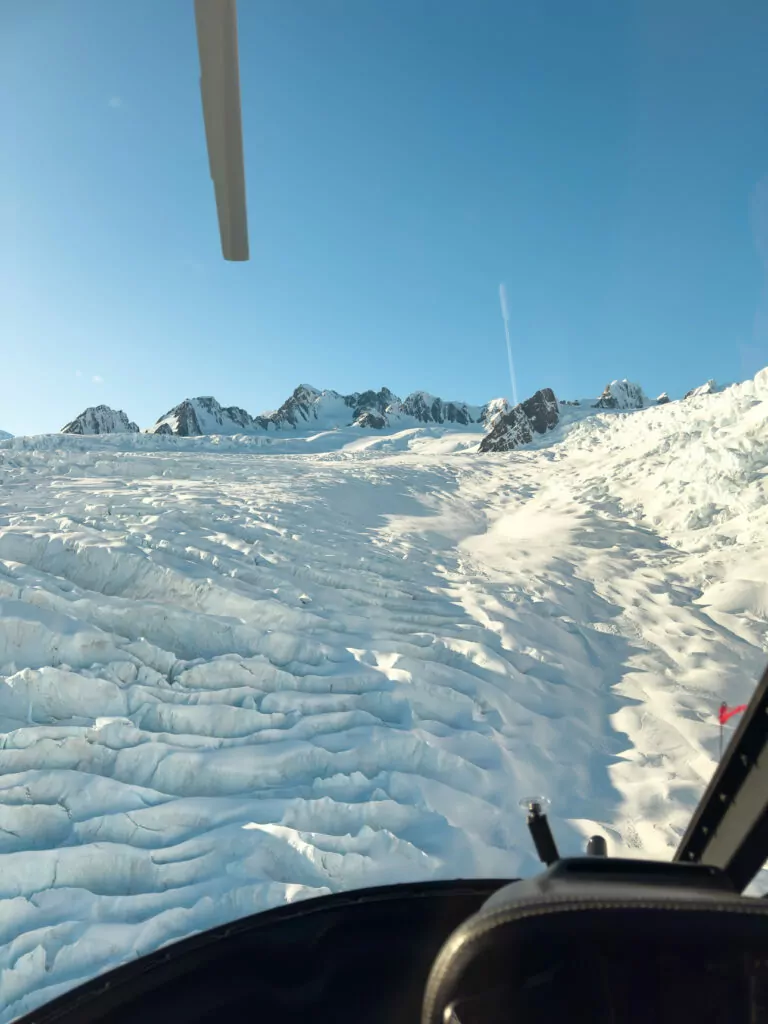
🪂 Go skydiving
Another impressive title Glacier Country holds is ‘NZ’s highest skydive’, with an 18,000ft (5486m) option that gives you 85 seconds of freefall and then 5-7 minutes of parachute-assisted floating through the sky soaking up insane views from the mighty mountains out to the wild West Coast.
Does that sound a little too crazy for you? There are slightly less terrifying options starting from 10,000ft.
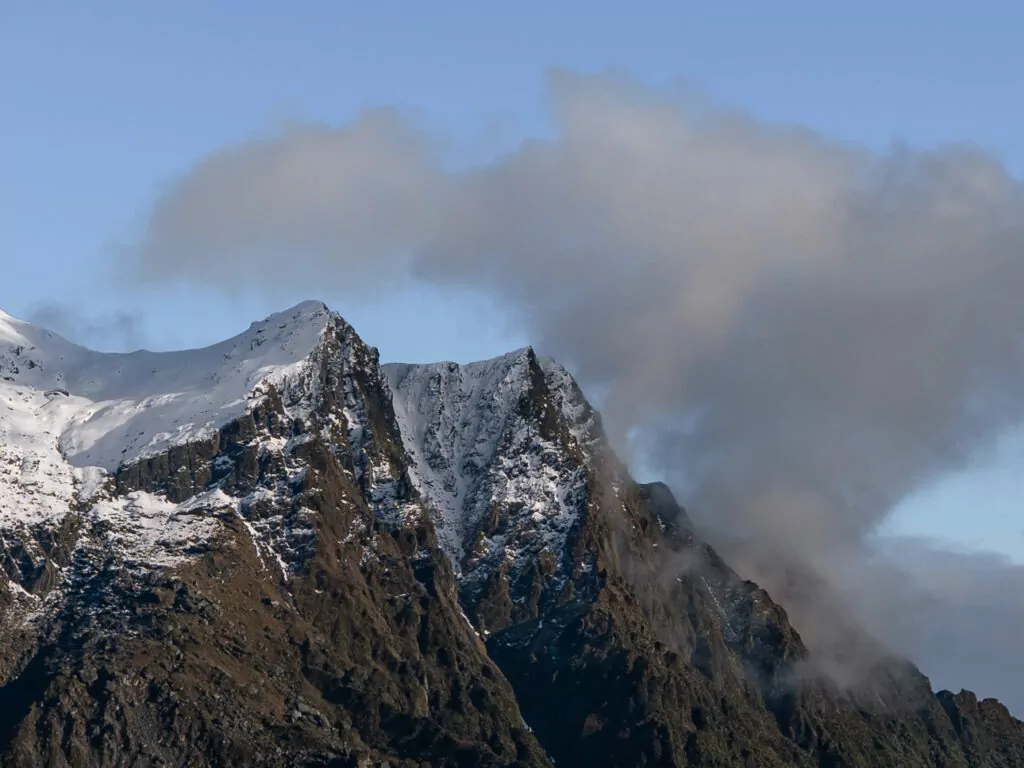
🛶 Lake Mapourika kayak or lake cruise
Swap the adrenaline for serenity with a kayaking tour on Lake Mapourika with Franz Josef Wilderness Tours.
They have a few different options, I did their Kayak Classic which entailed a paddle across the lake to the Okarito Kiwi Sanctuary, then a gentle glide through the narrow waterways amongst ancient forest so thick that it felt like a dinosaur might poke its head out at any moment. It was absolutely stunning even on a drizzly day.
There’s an option that includes disembarking at the sanctuary and then a short nature walk along the rainforest trail to spot birdlife before heading back, or if you book the 5pm Kayak Classic slot you get the added benefit of glorious golden hour lighting.
Want the views without the physical exertion? Book a scenic cruise or cruise + nature walk with them instead.
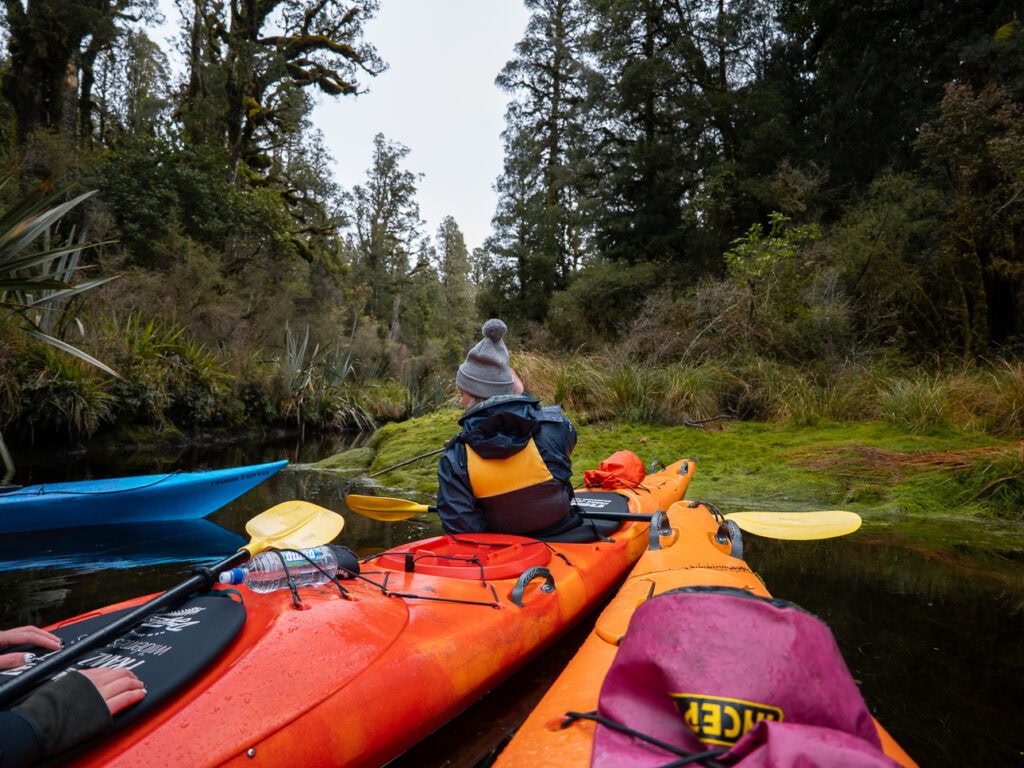
🥾 Short walks & hiking trails
You don’t need to max out your credit card to enjoy Glacier Country, there are heaps of trails that deliver epic views without costing a dollar, from short strolls to full day adventures.
- Lake Matheson: An easy 4.4km loop best known for its mirror reflection of Aoraki / Mount Cook and Mount Tasman, found on photographer bucket lists around the globe! Be there first thing in the morning or just before sunset to catch the best lighting, and there’s a 2.4km out-and-back walk to the photo spot if you’re in a rush.
- Canavans Knob: A riverside walk + a short but steady climb to a glacier viewpoint, 3.2km return.
- Franz Josef Glacier/Kā Roimata o Hine Hukatere Walk: A gentle 1.7km return walk to another viewpoint where you can spot the upper glacier and the valley that’s been carved out by the ice.
- Alex Knob Track: Without a doubt the ultimate free glacier experience, a 17.2km out-and-back advanced hike that rewards you with the best Franz Josef Glacier view you can find on foot.
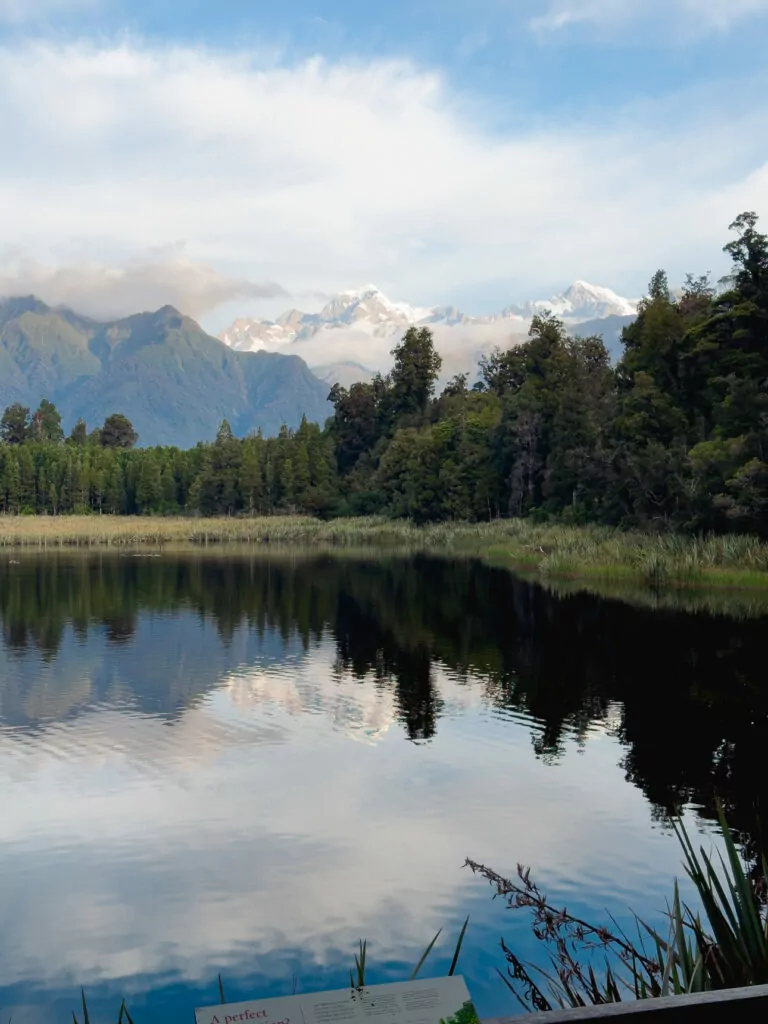
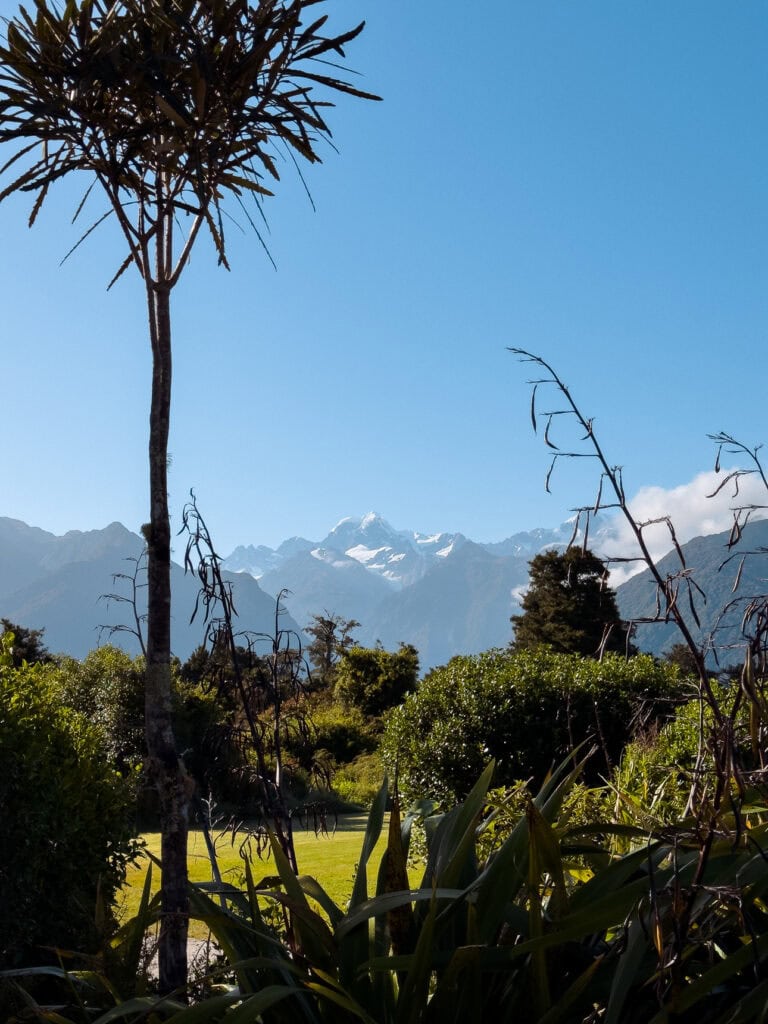
🛀🏼 Soak in a private hot tub
Whether you spent your days on the ice, the lakes or the hiking trails, there’s no better way to end your time in Glacier Country than by sinking into a private hot tub hidden amongst the rainforest.
Waiho Hot Tubs have wood-fired tubs that fit up to four people, adults-only after 5pm for maximum relaxation.
🕵🏼 Spot a kiwi in the wild
For something entirely unique to the area, head to nearby Okarito to join a guided night walk in search of the rowi, the rarest kiwi!
Okarito Kiwi Tours is the only kiwi tour operator in the South Island, they’ve got a 95% success rate at spotting these quirky cuties in their natural habitat. They only operate seasonally though, usually October to March, and their tours get booked up months in advance so get in early if you’re keen.
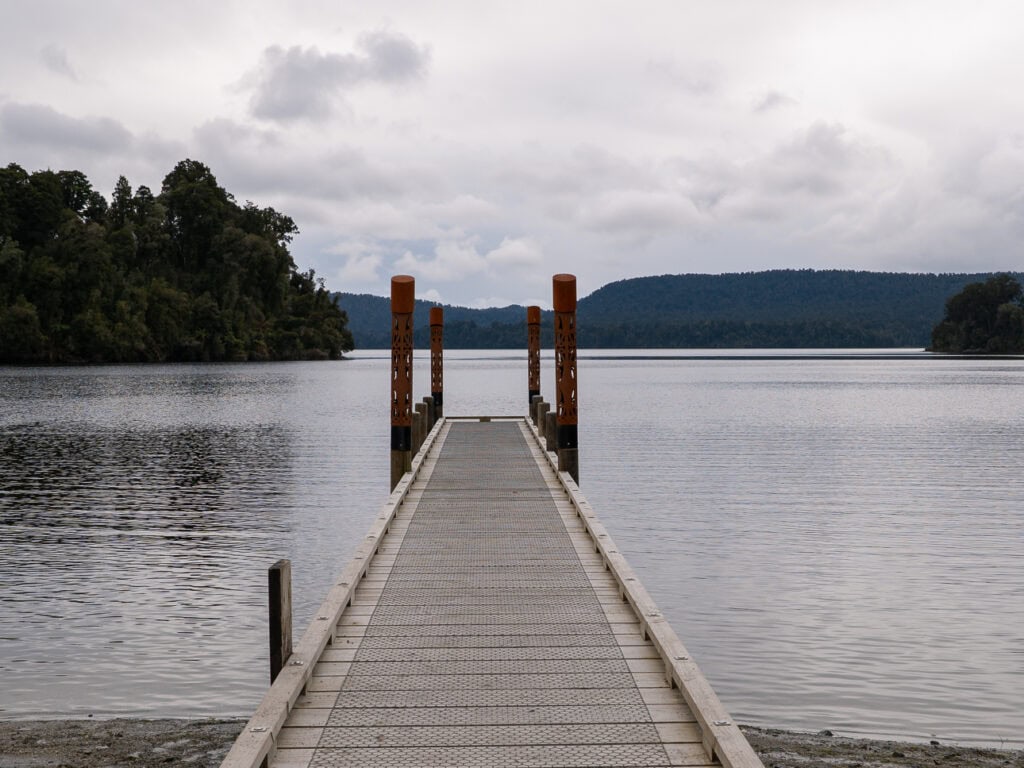
🐧 Meet the locals at the West Coast Wildlife Centre
Much to the disappointment of an international couple I met at a campground, who expected to see our national icon running around New Zealand towns like pigeons in Trafalgar Square, seeing a kiwi in the wild is actually suuuuper rare due to their nocturnal habits, dense forest homes and skittish nature.
There’s good news though, the West Coast Wildlife Centre in the middle of Franz Josef Town offers the chance to see kiwi in expert-built open enclosures that perfectly mimic their natural habitat, no glass between you and the birds.
You can also take a peek behind the scenes of the hatching and incubation facilities of the conservation programmes that are charged with bringing the rowi kiwi and Haast tokoeka kiwi back from the brink of extinction, and they’ve just opened a brand new enclosure for injured kororā (little blue penguins).
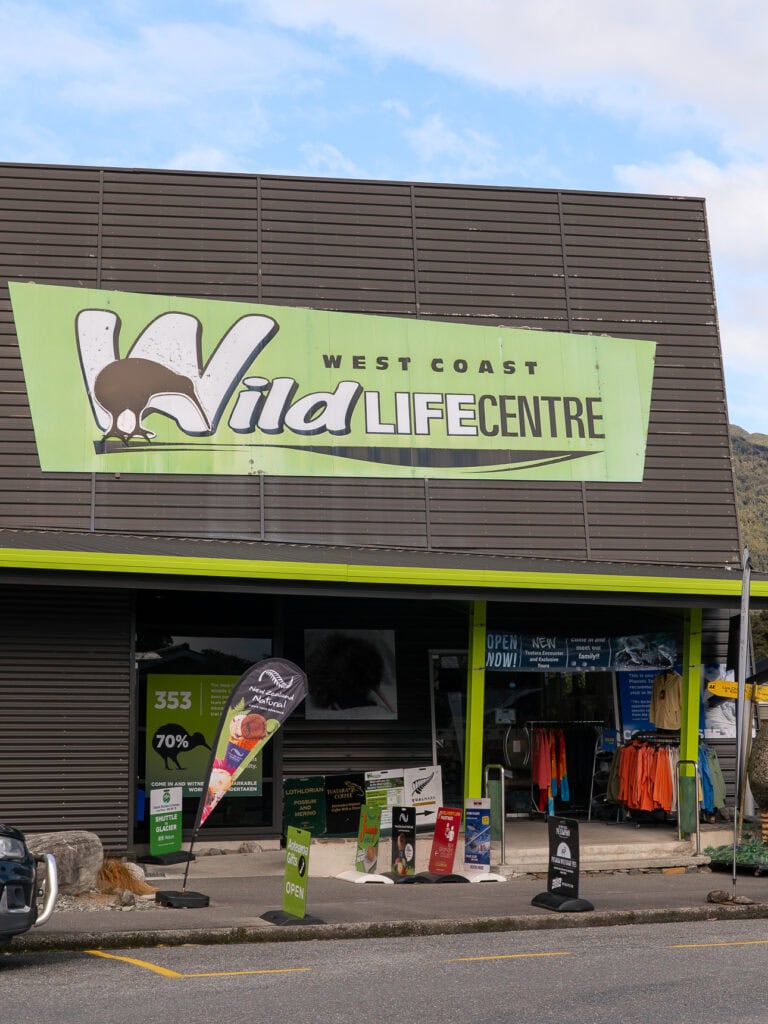
Days 4-5: Hokitika
🗺️ Distance: 138km from Franz Josef Glacier, 158km from Fox Glacier
🚗 Driving time without stops: 1h 50m from Franz Josef Glacier, 2h 15m from Fox Glacier
After a few days in Glacier Country it’s time to head north to Hokitika, the creative heart of the West Coast.
Start the drive whenever it suits you, feel free to spend the morning or most of the day in FJ before hitting the road, or if you’re ready to continue the adventures then leave early in the morning, stop off for a walk or two along the way, and you’ll still make it to Hokitika by lunch.
Where to stop between Franz Josef Glacier and Hokitika
- Okarito Lagoon: Take a short detour just outside of FJ to head towards the biodiverse wetlands of Okarito Lagoon, home to more than 70 species of birds. Choose the 20 minute Wetland Walk for a quick stop or extend to the Trig Walk to reach a fantastic viewpoint, or if you’ve got time you could do a kayak tour, rent one to paddle at your own pace, or book an eco-cruise.
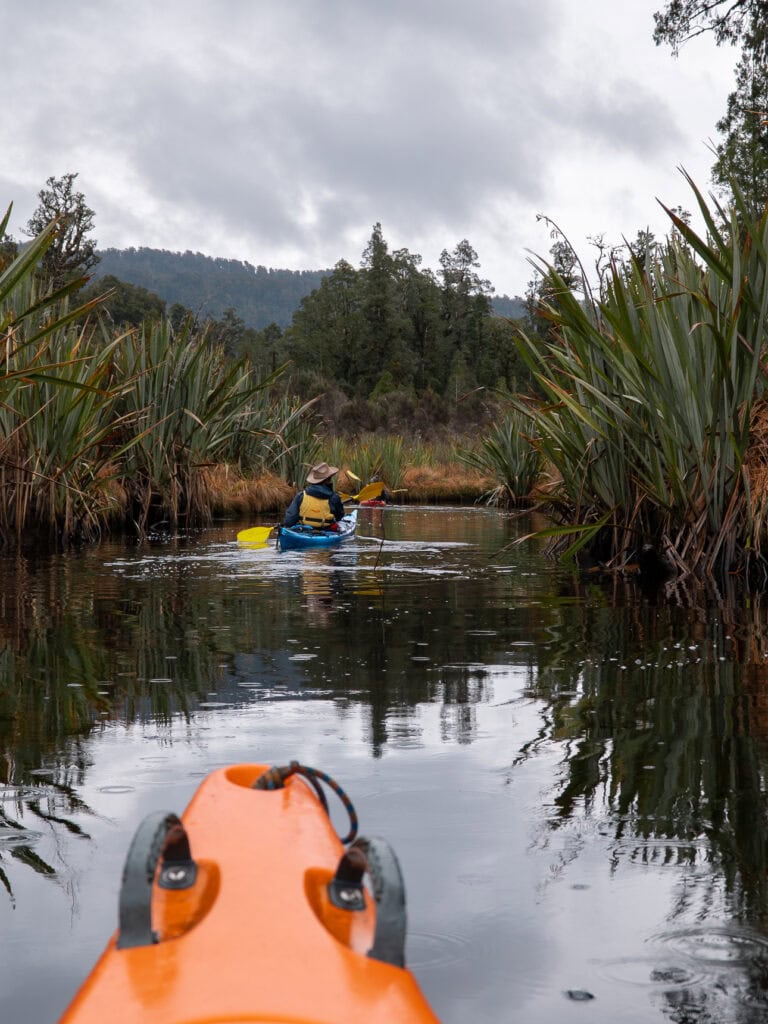
- Whataroa to see the Kōtuku (White Heron): Another one for any bird nerds 🤓 White Heron Sanctuary Tours runs 2.5 hour nature tours into the only Kōtuku nesting colony in the country, where you can spot up to 50 breeding pairs from the hide (out of only 150-200 White Herons in New Zealand!)
- Ross: This tiny town about 20 minutes south of Hokitika has two unexpected but charming stops that are guaranteed to put a smile on your face, one is this quirky teapot wall on the main road, and the other is this Chinese Gold Miners Memorial Garden with beautifully manicured landscaping and rock work.
- Lake Mahinapua: A perfect picnic spot on a calm day, with the layers of mountains and rainforest reflecting in the water.
- West Coast Treetop Walk & Zipline: A must-do in my opinion! The Treetop Walk is an epic 20m-high suspended walkway that winds through the native forest canopy, ideal for nature lovers or keen birdwatchers. Part-way along the walk you can climb the spiral stairs of the 47m-high Hokitika Tower for an insane view, and if you’re feeling brave, the 425m dual zipline will have you speeding back down to the café at up to 60km/h.
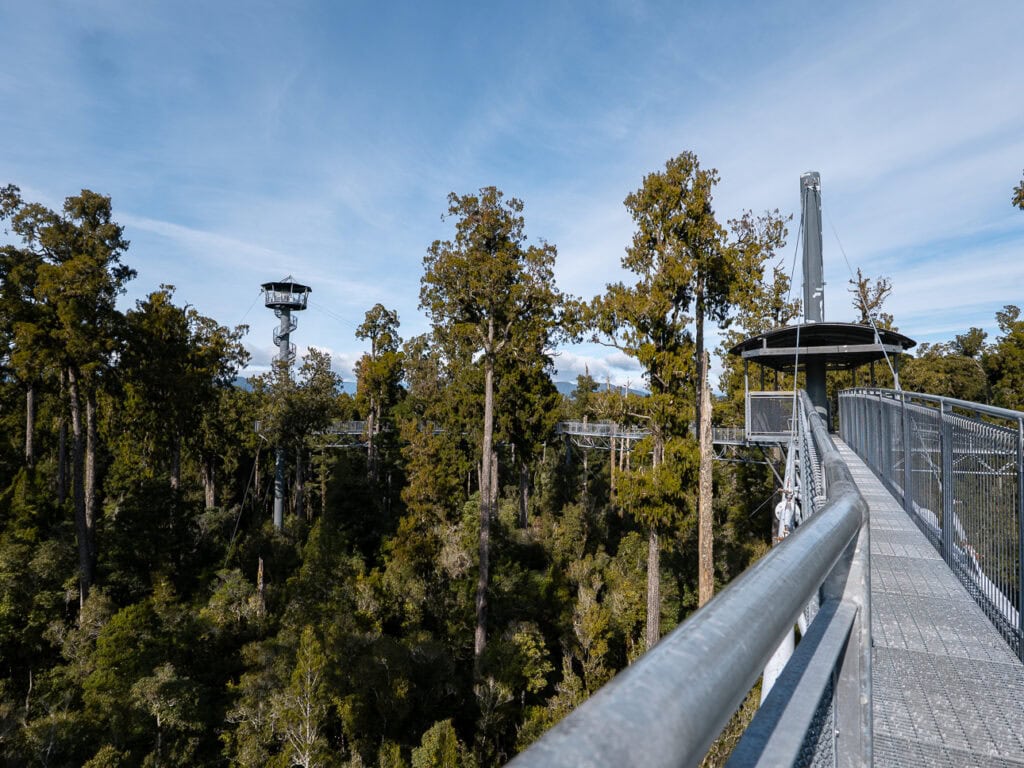
About Hokitika
Once a booming gold rush town with more than 100 pubs along the main street, modern-day Hokitika moves at a slower pace, but its creative streak is still alive and thriving.
If you’re keen to buy something to commemorate your West Coast road trip or need to get some souvenirs for friends, family or your pet-sitter, this is the place to do it. You can buy handmade jewellery and homewares from galleries and gift shops, watch local artists at work in their studios, even try your hand at creating your own masterpiece to take home with you.
But the West Coast’s ‘Cool Little Town’ isn’t just about the shops. Refuel with top-tier cheap eats, discover world-famous natural wonders, and catch a candy floss sunset from the iconic driftwood sign.
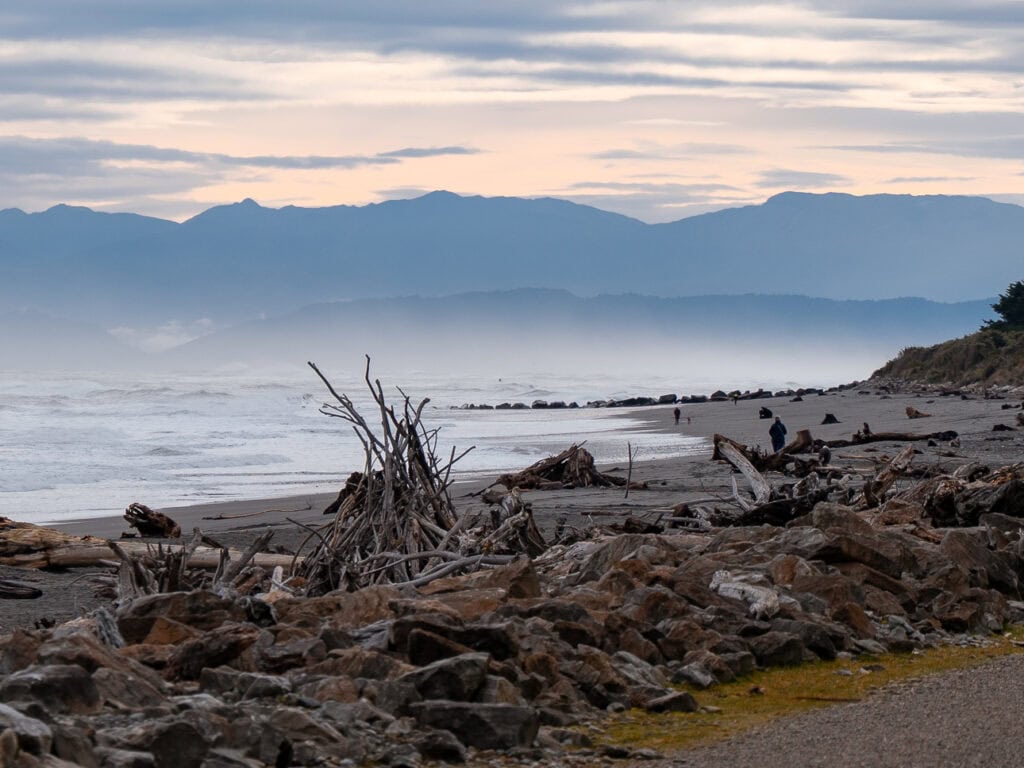
Best things to do in Hokitika
💚 Carve your own pounamu at Bonz’n’Stonz
If there’s one experience that captures the wild spirit of the West Coast, it’s carving your own pounamu (greenstone) at Bonz’n’Stonz in Hokitika. This is genuinely one of the most transformative things I’ve ever done on all of my travels!
Pounamu is deeply woven into the identity of this region. The Arahura River just north of Hokitika is a sacred and significant source of this prized stone, and the local iwi (tribe), Ngāi Tahu, are the traditional kaitiaki (guardians) of all pounamu in New Zealand.
That guardianship and respect for the stone is why a carving workshop like this is so incredibly special.
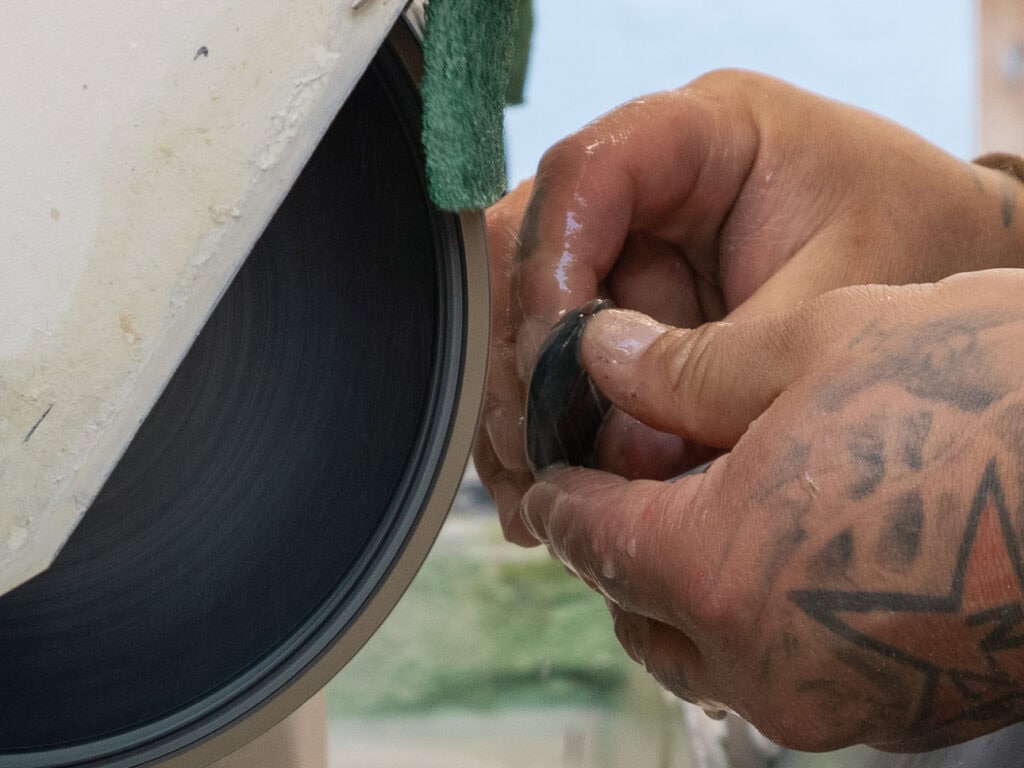
Pounamu is far more than just an accessory or even a collectible, it’s considered a taonga (treasure) with its own mauri (life force), wairua (spirit) and mana (prestige). Carving your own piece is not just about adding another souvenir to your travel memento box, it’s about slowing down, honouring the land and creating something that will forever connect you to this corner of Aotearoa.
At Bonz’n’Stonz, you’ll begin by choosing your own piece of raw pounamu, guided by local carvers who will help you find one that feels right. From there you’ll sketch your design (they’ve got loads of suggestions if you need inspiration), before your carver teaches you how to shape, smooth, detail and polish your piece into a taonga that you’ll treasure forever.
You don’t need any prior carving experience, and the workshop is super chill with good tunes and lots of laughs as you figure out the machines. Simpler designs for new carvers take 2-3 hours, but if you’ve used the machines before or if you’re just willing to challenge your skills you could chat to your carver about the intermediate and advanced designs with more intricate features, these typically take 3-6 hours.
If you get the legendary Te Huia as your pounamu expert, make sure to say hi from Alexx!
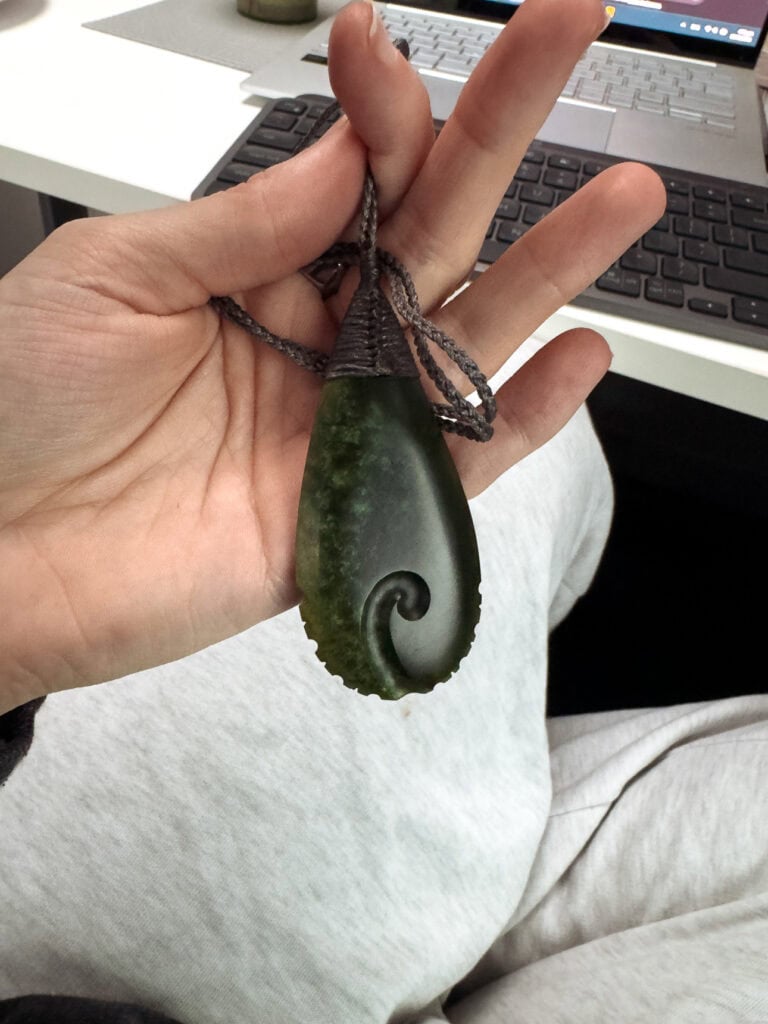
🩵 Do the Hokitika Gorge Walk
About a 30 minute drive inland from town, Hokitika Gorge is one of the country’s most spectacular short walks, offering absolutely unreal views along an easy 2km loop track. You could say it’s gorge-ous 🙃 (sorry, I had to!).
The scenery here literally looks Photoshopped, with vividly turquoise glacial water rushing past white granite rocks topped with native trees. Suspension bridges cross the river at two points, and there are a bunch of viewing platforms and photo spots that’ll easily keep you for an hour or more.
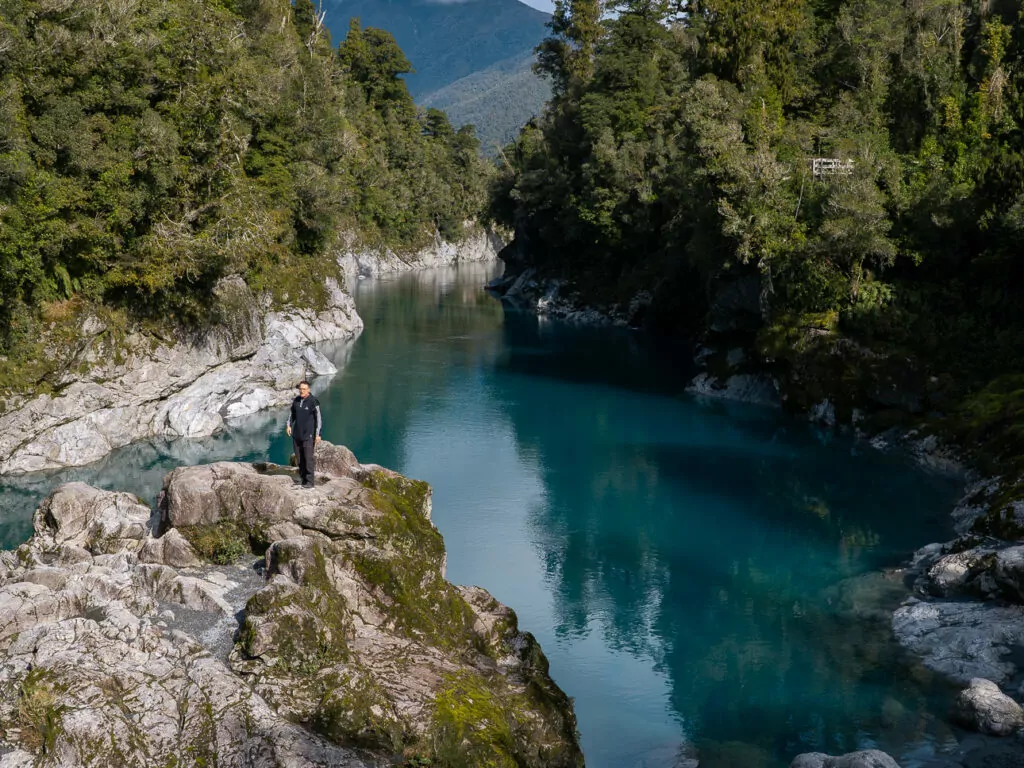
For the most vibrant blue hues you’ll want to be here when the sun is high in the middle of the day, but unsurprisingly those are the busiest hours (especially on weekends and school holidays). If avoiding crowds is your priority then come early in the morning or late afternoon, or just plan your West Coast road trip for the off season and get the best of both worlds.
Lots of Hokitika guides online mention part of the track being closed, these are referring to the 18 months where one of the bridges was closed for safety reasons, but a new bridge has been built and opened in May 2025. At the time of my last visit (and at the time of writing), the whole loop is now open! As with all walks in NZ, check the DOC website for current conditions.
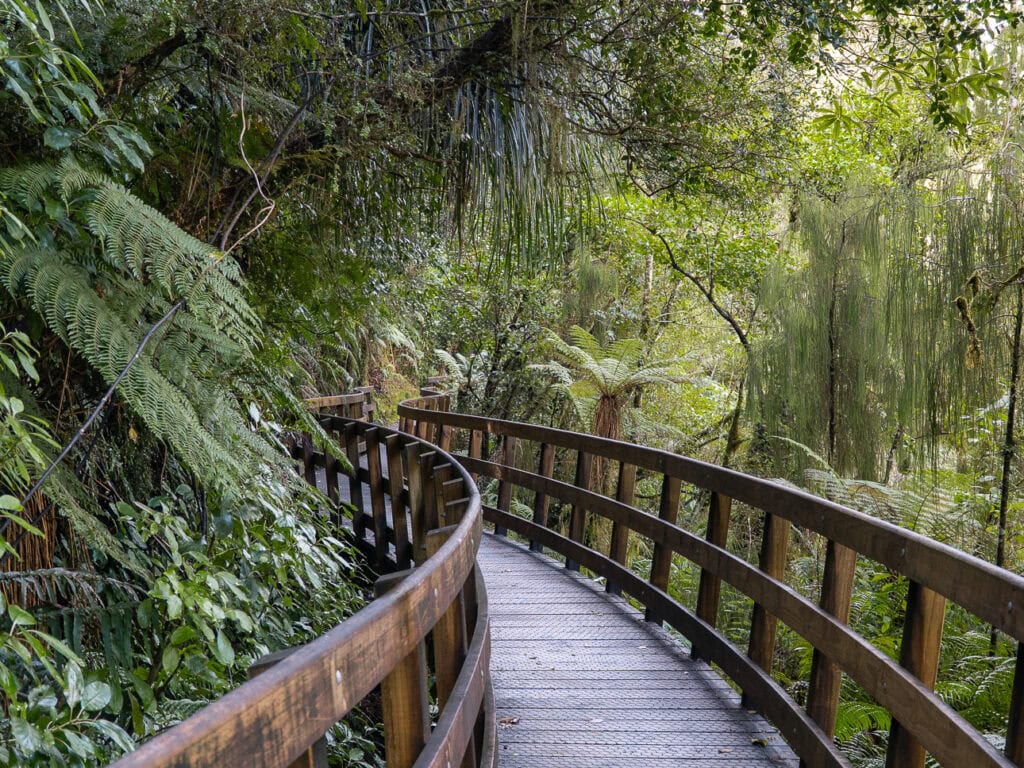
🌌 Visit a free glowworm dell
One of NZ’s most accessible glowworm displays is just a short walk or shorter drive from Hokitika’s town centre, and it’s completely free!
Head there after dark, use a torch to light the short path, switch it off once you get to the viewing spot and give it a few minutes to let your eyes adjust. Your mind will be blown as an infinite number of illuminated bugs start glowing on the banks around you.
🥝 National Kiwi Centre
A family-friendly rainy day activity, the National Kiwi Centre offers guaranteed kiwi sightings in the middle of Hokitika. You can also spot other West Coast locals like giant eels, freshwater crayfish and the tuatara.
🌅 Sunset from Hokitika Beach
It would be rude to stay in this coastal gem without experiencing a classic Hokitika sunset, so make sure you’re at the beach as the sun sinks into the horizon under a fiery sky.
The famous driftwood sign makes for the ultimate photo stop, just don’t lean on it, because I discovered how not-sturdy it was when I knocked the cross off the T and had to fumble around to fix it in front of a busload of tourists 🙃
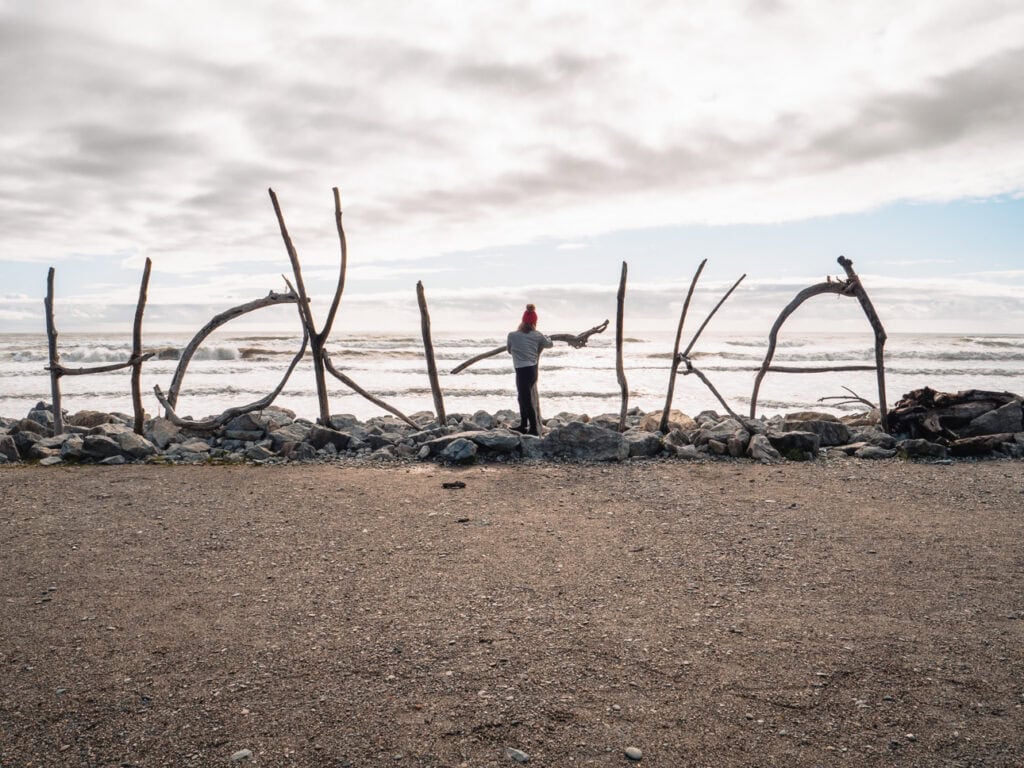
Where to stay in Hokitika
Camping:
- Just 20 mins south of Hokitika, my favourite campground on this stretch of the coast is Ross Beach TOP 10 Holiday Park, I’ve stayed three times and will never park up anywhere else if I’m in a van! Right on the beach with epic sunsets, great facilities, feels worlds away from civilisation in the best way possible. (89% on Rankers Camping)
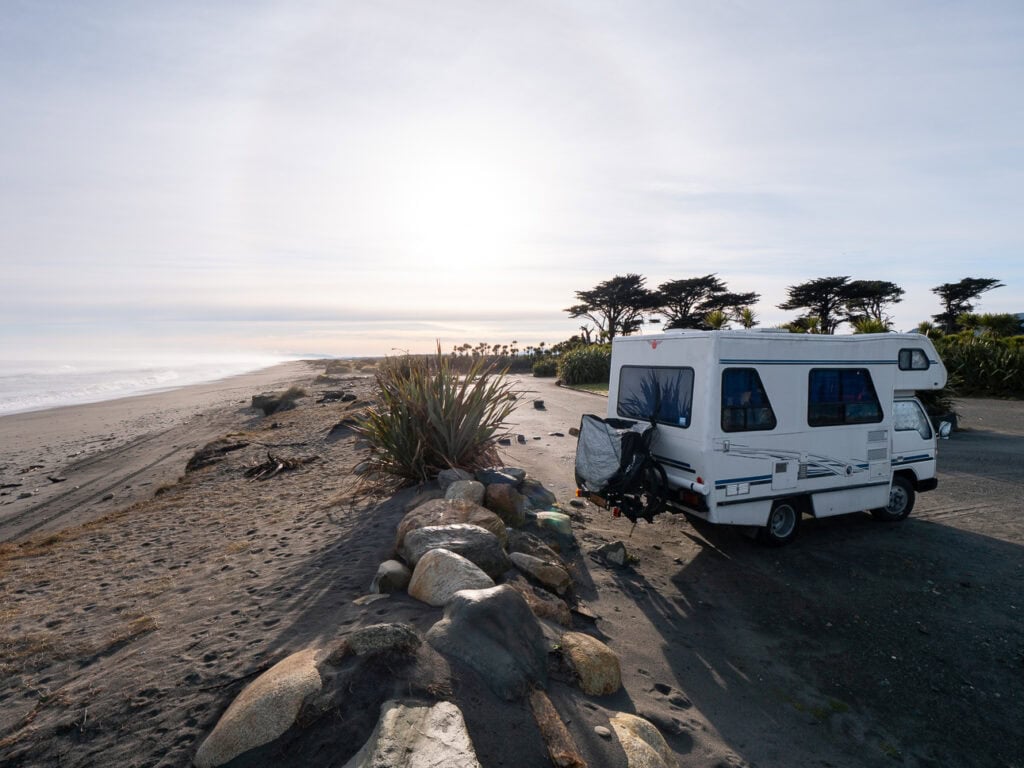
Budget:
- Amberlea B&B, Hokitika (9.6/10 on booking.com from 730+ reviews)
Mid-range:
- Jade Court Motel, Hokitika (8.6/10 on booking.com from 1700+ reviews)
- Blue Spur Bed & Breakfast, Hokitika (9.4/10 on booking.com from 340+ reviews)
- Mahinapua Retreat B&B, Lake Mahinapua (9/10 on booking.com from 100+ reviews)
- Ross Beach TOP 10 has cosy shipping container studios as well as these massive glamping domes that are fully kitted out with a proper kitchen, bathroom, full-size bed, dining table and lounge chairs. Adore!
- Obsessed with geodesic domes!
Luxury:
- Host’d is a locally-owned boutique accommodation operator that looks after a curated collection of getaways in and around Hokitika, from snug cottages to beachfront bungalows to larger properties perfect for family holidays or group trips. I stayed at Little Sailor’s Catch and can honestly hand-on-heart say it was the best-equipped and thoughtfully-designed accommodation I have ever stayed at in New Zealand, no exaggeration (and no wonder it’s got a perfect 5/5 on Airbnb). I’m sure their other listings are equally impressive!
- Little Sailor’s Catch
- Rimu Lodge, Hokitika (9.8/10 on booking.com from 80+ reviews)
- Hokitika Fire Station Boutique Accommodation (9.6/10 on booking.com from 560+ reviews)
Day 6: Great Coast Road & Paparoa National Park
🗺️ Distance from Hokitika: 83km to Punakaiki, 140km to Westport
🚗 Driving time from Hokitika without stops: 1h 10m to Punakaiki, 2h to Westport
Another stellar drive awaits! Today it’s just as much about the journey as the final destination, with an iconic road trip leading you to the epic adventures and killer landscapes of the Paparoa National Park and its surrounds.
After departing Hokitika you’ll reach Greymouth in about half an hour, the starting point of the 102km stretch of SH6 known as the Great Coast Road, and you’ll soon see why it regularly features on lists of the world’s best coastal road trips.
Your overnight stay tonight can be anywhere along the Paparoa coast, but Punakaiki and Westport are the two main hubs with accommodation and other tourist infrastructure.
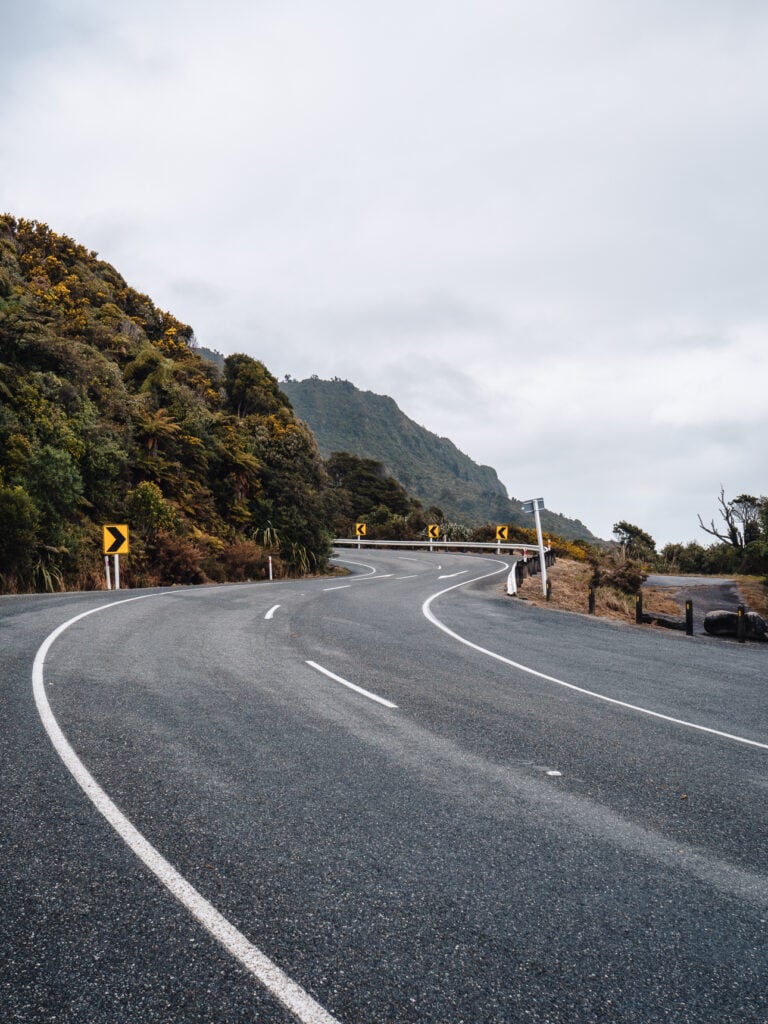
Where to stop along the Great Coast Road
- Shantytown Heritage Park: Just before Greymouth (so not technically on the Great Coast Road), Shantytown is an immersive and interactive heritage village complete with a vintage steam train, old-timey photo ops and the chance to pan for gold. Ideal for little ones!
- Motukiekie Beach Walk: Only accessible at low tide, this lesser-known beach walk takes you along the rocky seabed for epic views of dramatic sea stacks rising from the surf. Check tide times before you go or check with a local i-SITE if you need help planning your visit, this ocean is unforgiving so don’t take any risks.
- Coal Creek Falls: A 3.6km return walk to reach a beautiful waterfall with a natural swimming hole at the base, pack your swimsuit if it’s a hot day!
- Strongman Mine Memorial: A quick roadside stop to see a memorial for a 1967 mining disaster that claimed 19 lives, set in a stunning location overlooking the rugged coastline.
- Irimahuwhero Lookout: An elevated panoramic lookout offering expansive views both up and down the coastline.
- This unnamed lookout has a sole picnic table that sits between a break in the trees, with a brilliant view down to the waves that roll in from the Tasman Sea.
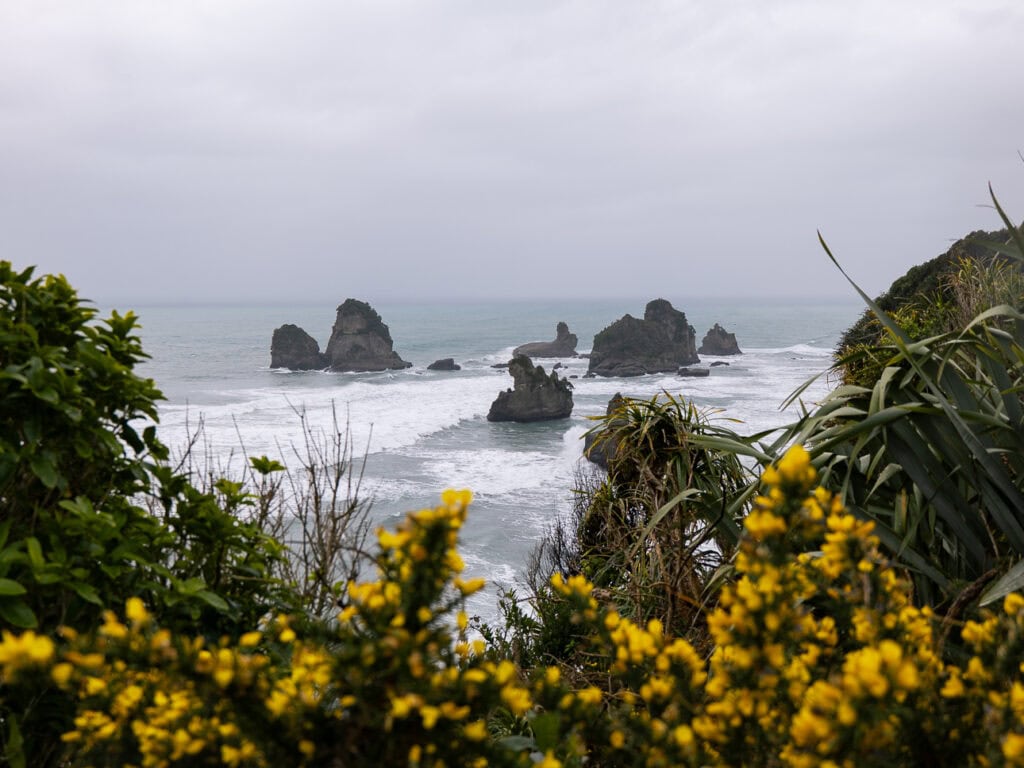
Best things to do in and around Paparoa National Park
🥞 See the Pancake Rocks & Blowholes
These famous layered stacks of limestone are Punakaiki’s headline act, no West Coast itinerary would be complete without them.
A paved walkway takes you through flax bush to a clifftop path with epic vantage points over the Pancake Rocks, where you can get a real sense of how millions of years of wind and water have carved these formations into the geological wonders we can see today. It’s a fully paved 1.1km loop that takes 20 minutes or so, accessible for wheelchairs and strollers.
Visit at high tide for the best blowhole conditions, when strong currents push waves into narrow caverns and force an explosive spray of sea water into the sky.
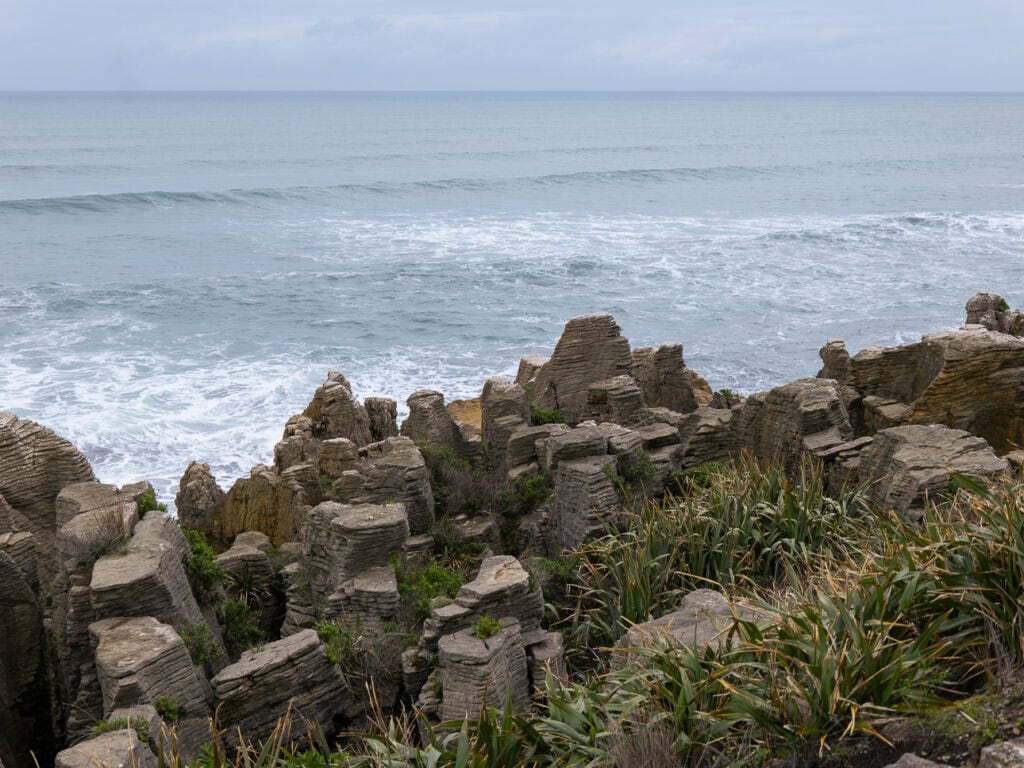
🖼️ Learn about the region at the Paparoa Experience
Hidden in the back of the visitor centre just opposite the Pancake Rocks walk, I reckon the Paparoa Experience is one of the most underrated things to do on the West Coast.
It’s an immersive, multi-sensory exhibit that takes you through the region’s geological and cultural evolution, from how the elements shaped the wild landscapes, to pūrākau (Māori legends) passed down through generations, to the flora and fauna that call this untamed slice of paradise their home.
I’m reeeally not a museum girlie (terribly uncultured for a world traveller, I know!) but this place is truly world-class.
👣 Tick off one of the short walks
There are a few brilliant short walks around Punakaiki beyond the Pancake Rocks loop path.
Truman Track is the quickest and easiest option, a 1.4km return walk through subtropical forest to a coastal viewing platform and a beach-access staircase for low tide exploring.
If you’re looking for more than a quick stroll, the 7km return Pororari River Track gives you a small taste of the popular Paparoa Great Walk (it’s the entry/exit for the multi-day hike) or the longer 11km Punakaiki-Pororari Loop extends that one into a full loop that can easily tack on the Pancake Rocks.
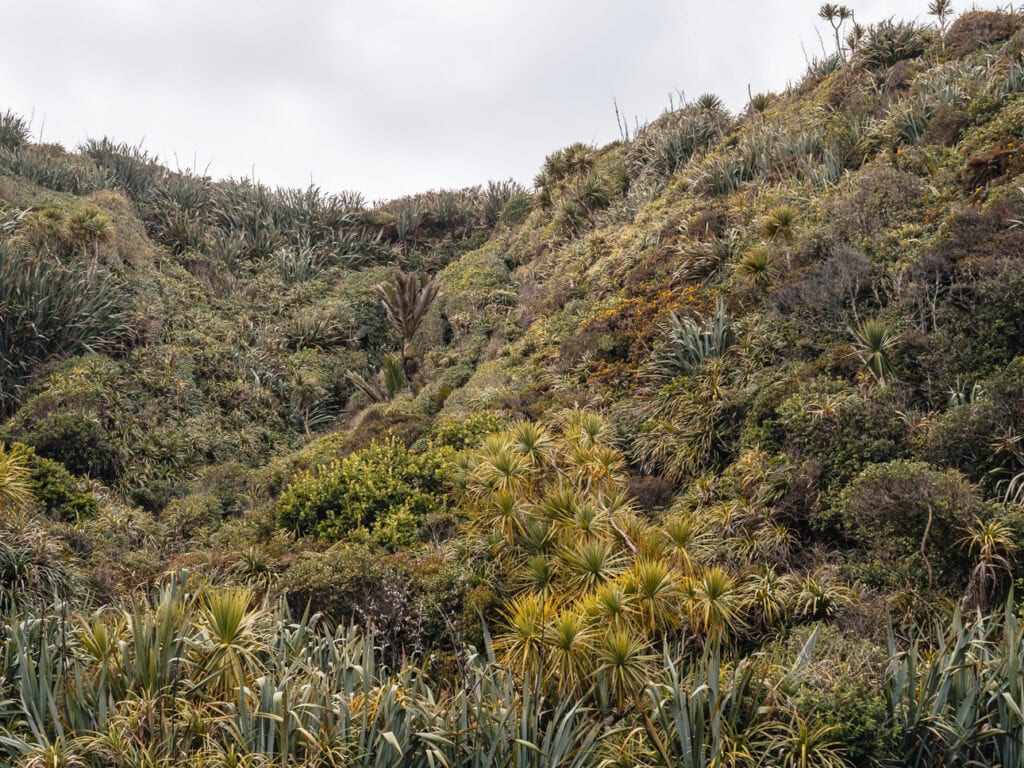
🐎 Golden Sands Horse and Wagon Tours
Experience classic Coast hospitality and scenery with a horse-drawn wagon ride along the black sands of Barrytown Beach.
You’ll hear about the different eras of this region, from ancient times to pioneers to goldminers and more recent history, with the chance to fossick for pounamu and other stones, enjoy a hot cuppa by a campfire and admire the beautiful Clydesdales that lead the way.
🔪 Make something epic in Barrytown
If you missed out on pounamu carving in Hokitika, or if you loved it and want more of that vibe, Barrytown (just south of Punakaiki) has a couple of local artisans who run hands-on workshops where you get to take home something you’ve crafted yourself.
Skeleton Crew Carving is a small creative studio in Barrytown where you can carve a bone pendant under the guidance of an expert carver, and Barrytown Knifemaking offers a full-day experience where you’ll forge your own blade from raw steel.
Both are top-rated on Google, and I guarantee you’ll never forget the stories behind these souvenirs.
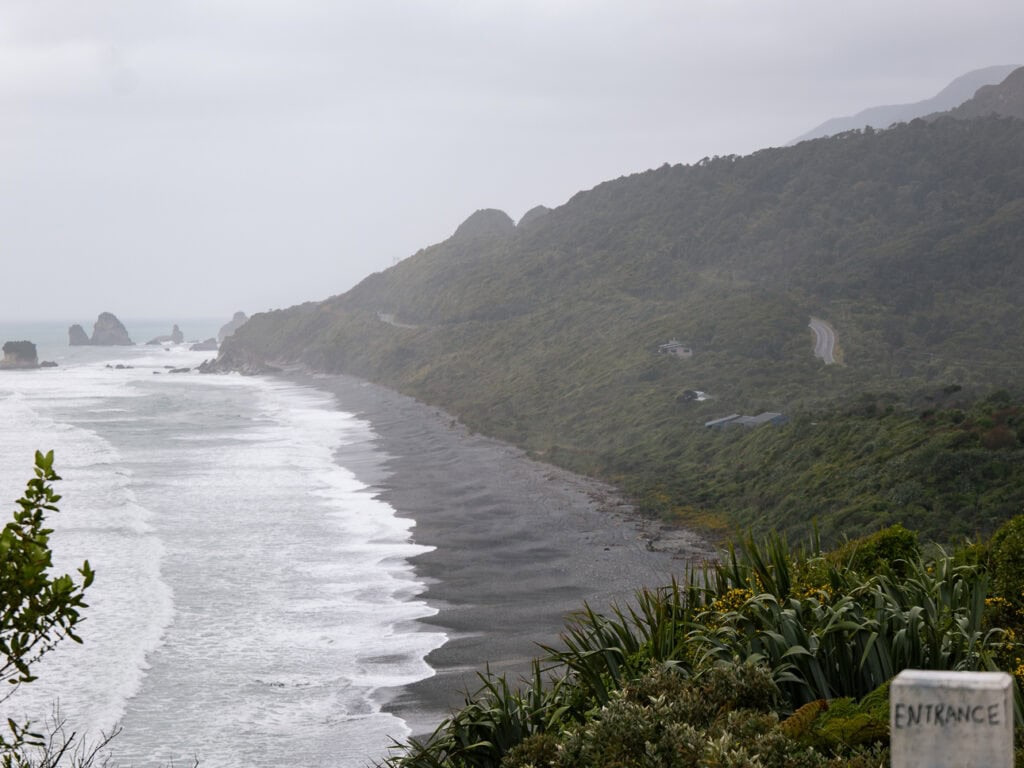
🔦 Explore another layer of the West Coast
We’ve spent loads of time admiring mountains, glaciers, rainforests and beaches along this road trip, and rightly so, but some of the West Coast’s most magical experiences can actually be found underground.
UnderWorld Adventures in Charleston (between Punakaiki and Westport) is a much-loved cave tour operator that offers a range of trips through the Ananui caves that sit under Paparoa National Park, deep in the untouched rainforest.
The one that’s at the very top of my West Coast bucket list is their Cave Rafting trip, where you’ll spend four hours exploring an intricate subterranean maze to reach an underground lake with a glowworm-studded ceiling that looks like the Milky Way, before floating with inflatable tubes through gentle river rapids to emerge back into daylight.
I did a similar trip in Waitomo Caves on my North Island road trip and it was a life highlight, I’d love to try the West Coast version too!
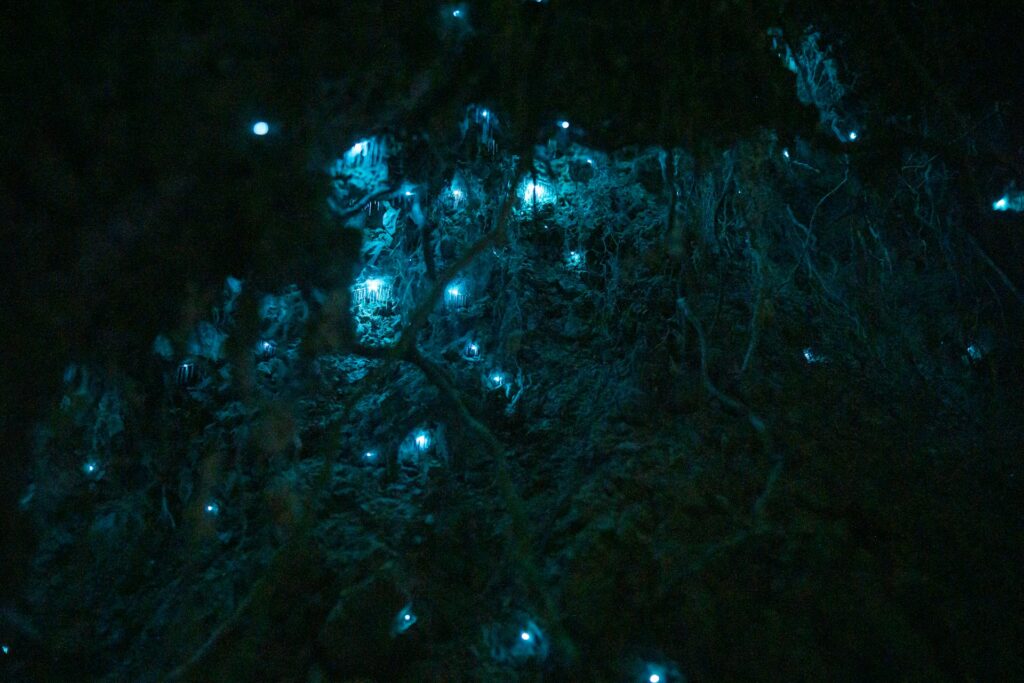
If that sounds too tame for you (👀), they’ve got a more extreme Adventure Caving option that introduces you to true sport caving, complete with abseiling, waterfall climbing and navigating tiny passageways that seem far too small for a human to squeeze through. Only for fit, strong and brave 16+ year olds, for obvious reasons.
And if both of those terrify you, or if you’ve got curious kiddos in your travel crew (5+ years old), their more relaxed GlowWorm Cave Adventure might be more your pace.
This is still a genuine natural caving experience, there’s no boardwalk or artificial lighting apart from your head torch so you do need to be able to walk on uneven terrain for a couple of hours, but you’ll be able to enjoy one of the most dazzling displays of glowworms anywhere in the world.
🚣🏼 Kayak, paddleboard or bike into Paparoa National Park
Venture into Paparoa National Park’s lush forests on two wheels or glide along the stunning Pororari River by kayak or paddle board, Waka Puna Pedal & Paddle rents out a range of transportation modes and can suggest routes for all skill levels.
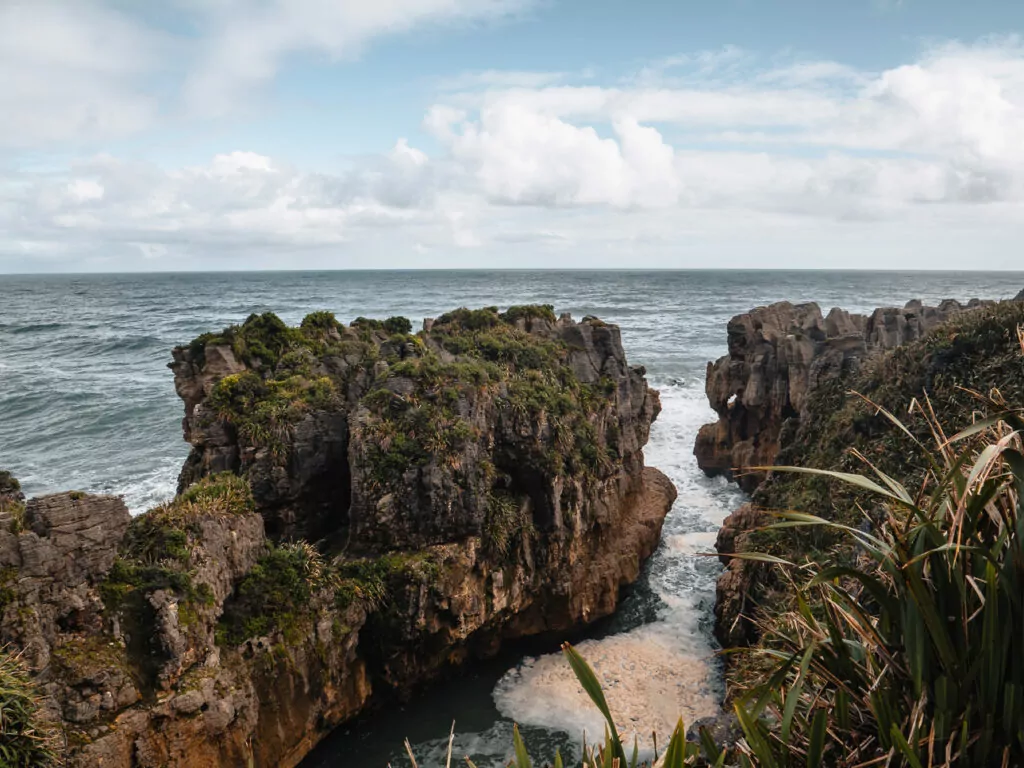
🦭 Cape Foulwind Seal Colony & Walkway
A slight detour off SH6 just before you reach Westport will take you towards the Cape Foulwind Seal Colony, the most accessible place to spot kekeno (New Zealand fur seals) along the West Coast.
From Tauranga Bay carpark it’s an easy 500m walk to reach an elevated viewpoint overlooking the seal colony, where you can watch these clumsy cuties bask on the rocks and play in the tide pools, then you could head back to your vehicle or continue following the walkway to reach Cape Foulwind Lighthouse (3.4km total one way, easy but some steeper bits) before returning.
Seals can be seen year-round but November to February are when the colony reaches peak population.
🌟 Punakaiki Cavern
A short walk from the visitor centre you’ll find Punakaiki Cavern, a quick and easy stop worth adding to your Punakaiki itinerary.
The path leads down to a limestone cave with spiky stalactites hanging from the ceiling and glowworms that sparkle in the dark. This spot is well-maintained by DOC and safe to explore, just wear sturdy shoes and be careful if it’s slippery.
Where to stay along the Great Coast Road
Camping:
- I loved staying at Punakaiki Beach Camp, a classic coastal holiday park with waves crashing on one side and towering cliffs on the other (84% on Rankers Camping)
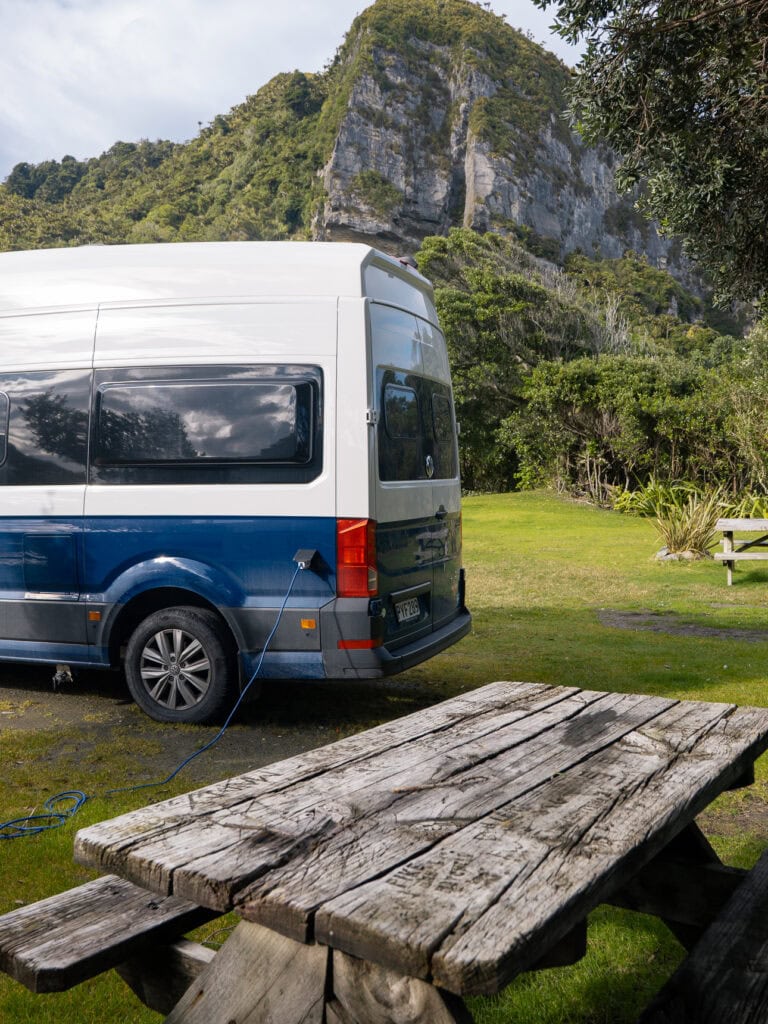
Budget:
- Charleston Goldfields Accommodation (9.7/10 on booking.com from 110+ reviews)
- Tripinn Affordable Accommodation (8.6/10 on booking.com from 550+ reviews)
Mid-range:
- Punakaiki Beachfront Motels (8.5/10 on booking.com from 1100+ reviews)
- Hydrangea Cottages, Punakaiki (9/10 on booking.com from 360+ reviews)
- Gumboot Paradise Eco Stay, Barrytown (9.2/10 on booking.com from 20+ reviews)
- Out the Bay, Westport (9.9/10 from 14 reviews)
Luxury:
- The Punakaiki Treehouse (9.3/10 on booking.com from 90+ reviews)
- Punakaiki Forest Retreat (9.4/10 on booking.com from 120+ reviews)
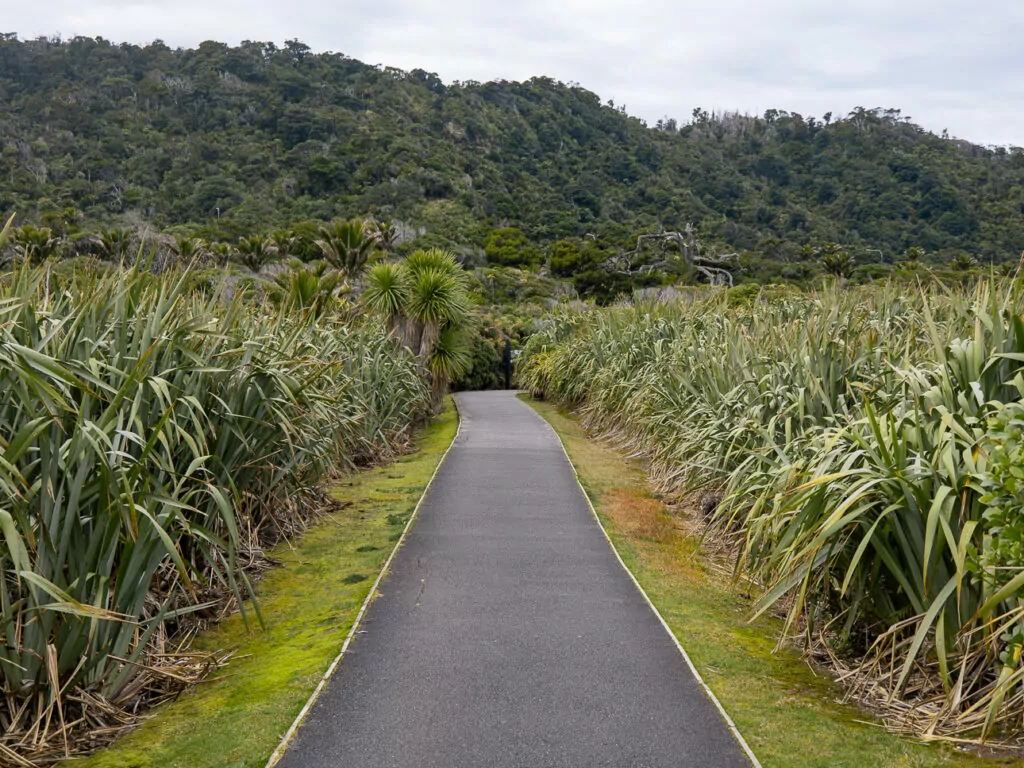
Day 7: Maruia Hot Springs
🗺️ Distance: 175km from Punakaiki, 138km from Westport
🚗 Driving time from Punakaiki without stops: 2h 15m from Punakaiki, 1h 45m from Westport
You might think that the West Coast ends at the coast, there’s one more gem tucked away inland that’s the perfect final stop, the dreamy and steamy Maruia Hot Springs.
I highly recommend spending a night here if you’ve got time, but if you’re on a tighter schedule it’s still absolutely worth stopping in for a few hours to enjoy a relaxing soak and delicious lunch before continuing on to Hanmer Springs, Christchurch, Kaikōura or up north to Nelson-Tasman or the Marlborough region.
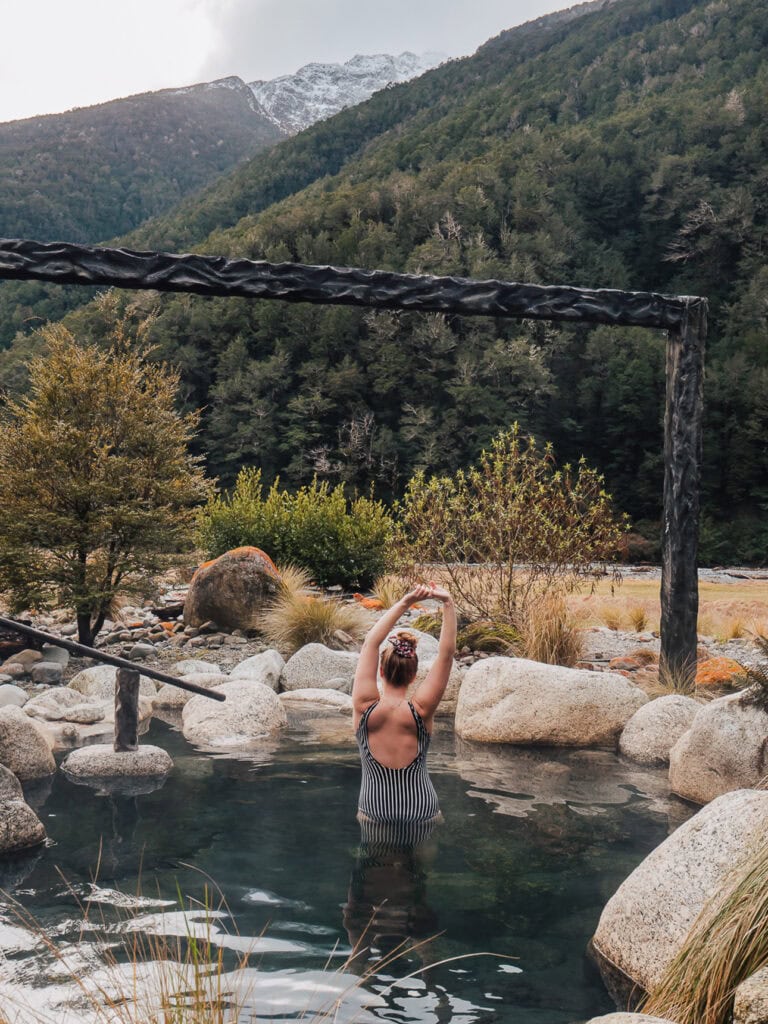
Where to stop on the way to Maruia Hot Springs
- Reefton: A quirky gold-rush town with genuinely impressive antique shops, an award-winning gin distillery that offers tours and tastings, and a very photogenic main street with heritage shopfronts.
About Maruia Hot Springs
A sharp contrast to Aotearoa’s more commercialised geothermal experiences, Maruia Hot Springs is a small, boutique spa retreat with unimpeded views of the Lewis Pass Scenic Reserve from their mineral-rich rock pools.
There are a handful of outdoor pools with varying temps, all perfectly designed to blend into the natural landscapes, plus a mountain-view sauna, a steam room, thermal showers, an ice cold plunge pool, private onsen-style baths and indoor relaxation lounges.
Overnight guests get complimentary yoga and wellness sessions, and day visitors can also take part in their daily signature sauna infusion, where the sauna-master waves herbal-infused steam around the room with a towel as you try to keep calm while cooking yourself, then take an icy dip in the plunge pool before doing it all again. That probably makes it sound horrendous but I promise it feels amazing!
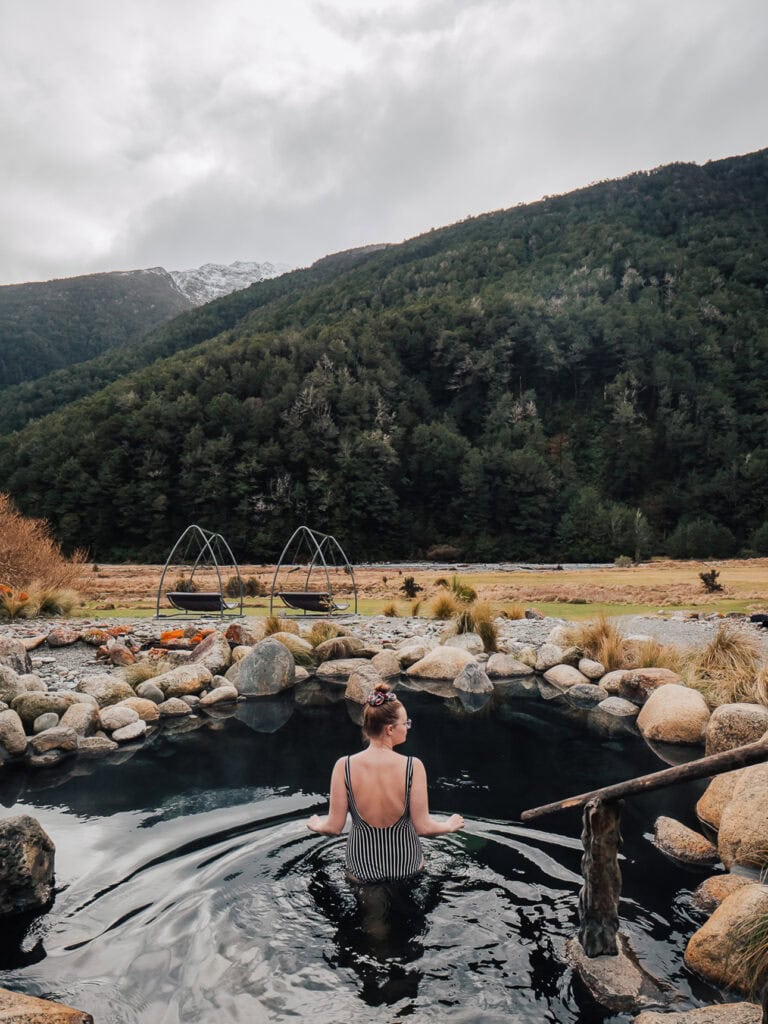
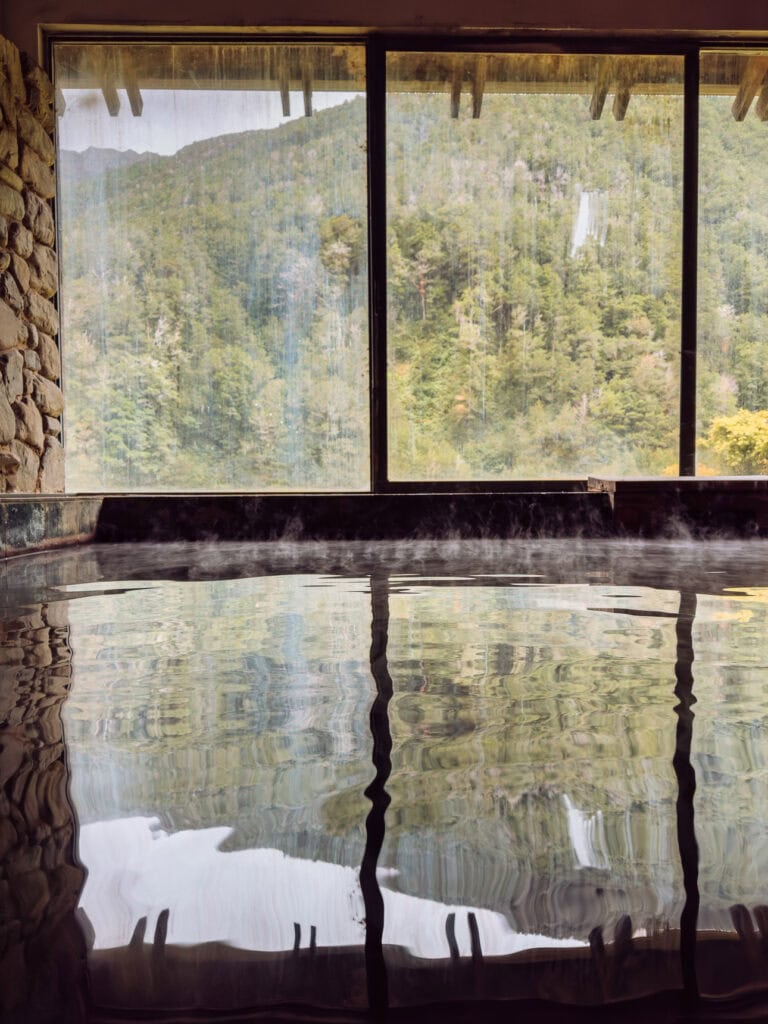
Staying at Maruia Hot Springs
They’ve got a few options for overnight stays, and all of these include access to the thermal pools and wellness sessions:
- A campground with unpowered sites for campervans or car-camping
- Cosy glamping pods with queen beds for two people and deluxe glamping pods with an additional sofa bed to fit four people max, both have access to shared bathrooms
- Simple but comfortable hotel rooms
- Newly-renovated luxury Thermal Tranquility rooms and suites with private bath tubs
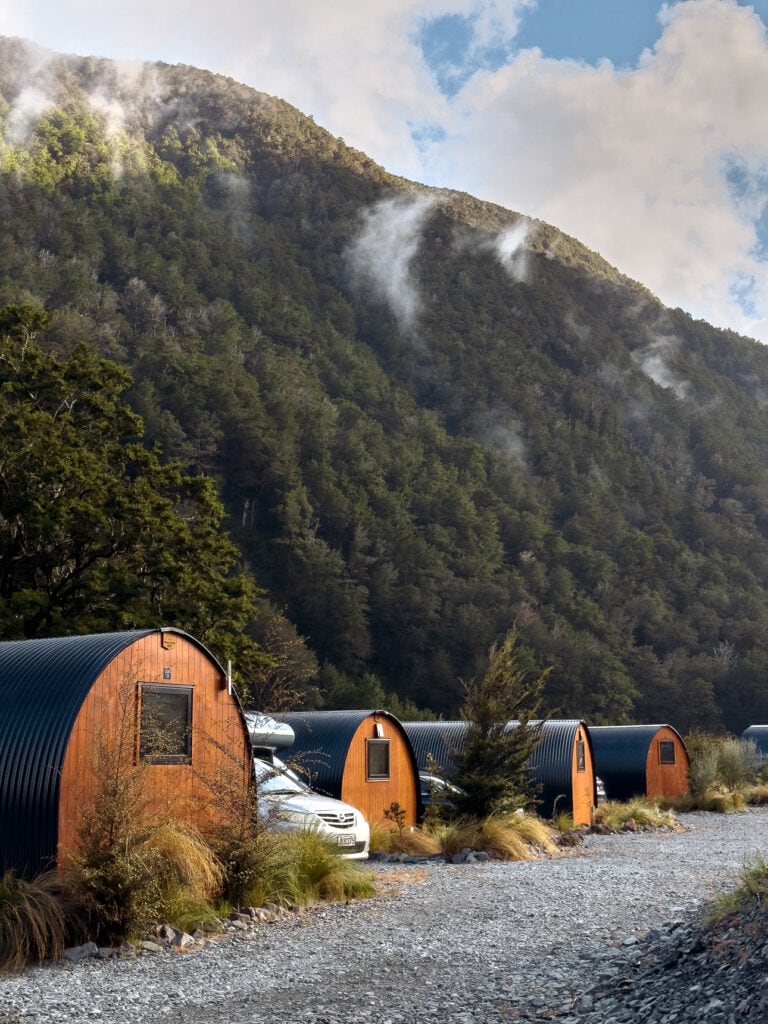
After the West Coast…
🌞 If you’re heading to Nelson-Tasman or Marlborough
From Maruia Hot Springs you can head back west for a short drive to Springs Junction, then take State Highway 65 up past Nelson Lakes National Park to reach Nelson (217km, 2h 50m without stops), Abel Tasman National Park (235km, 3h 10m without stops), Picton (285km, 3h 40m without stops) or Blenheim (260km, 3h 20m without stops).
🐳 If you’re heading to Hanmer Springs, Kaikōura or Christchurch
If you’re heading towards the east coast, it’s 1h 5m no stops (78km) to Hanmer Springs, 2h 30m no stops (193km) to Christchurch or 2h 40m no stops (190km) to Kaikōura.
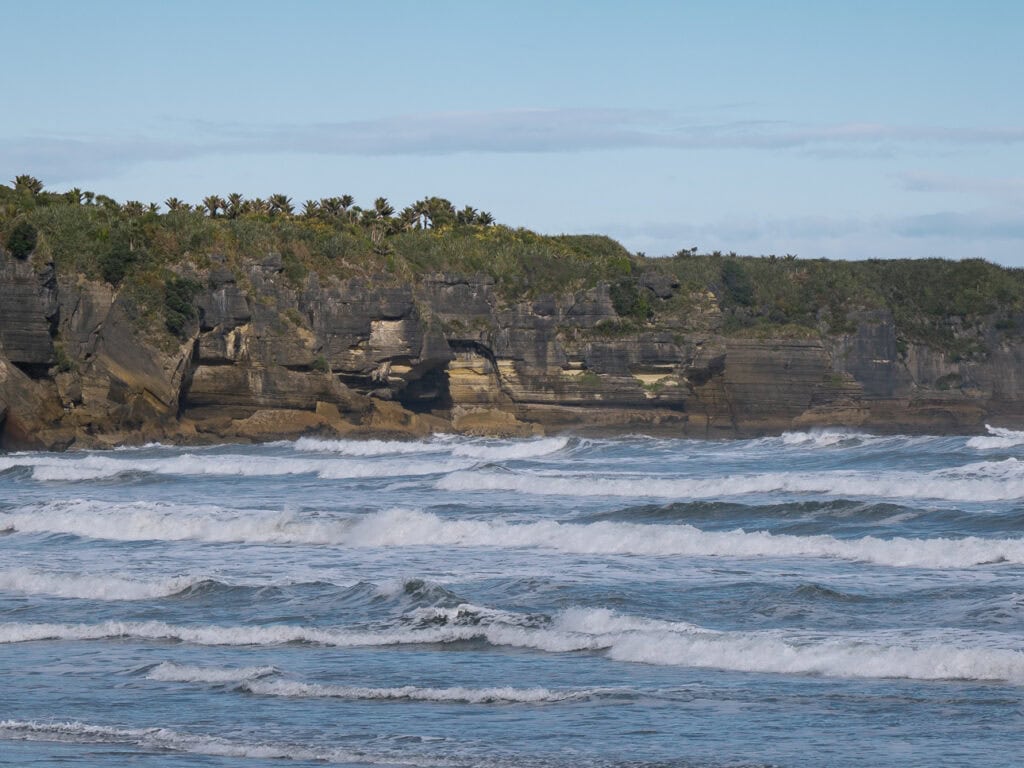
🏔️ If you’re heading to Queenstown
If you started this trip from the south and need to loop it back to Queenstown to fly out of NZ, it’s a 670km drive from Maruia Springs which would ideally be split over three days (two days minimum).
If you’ve got time to take that trip slowly and explore on the way then you check these road trip guides for inspiration (and just switch both to the other direction):
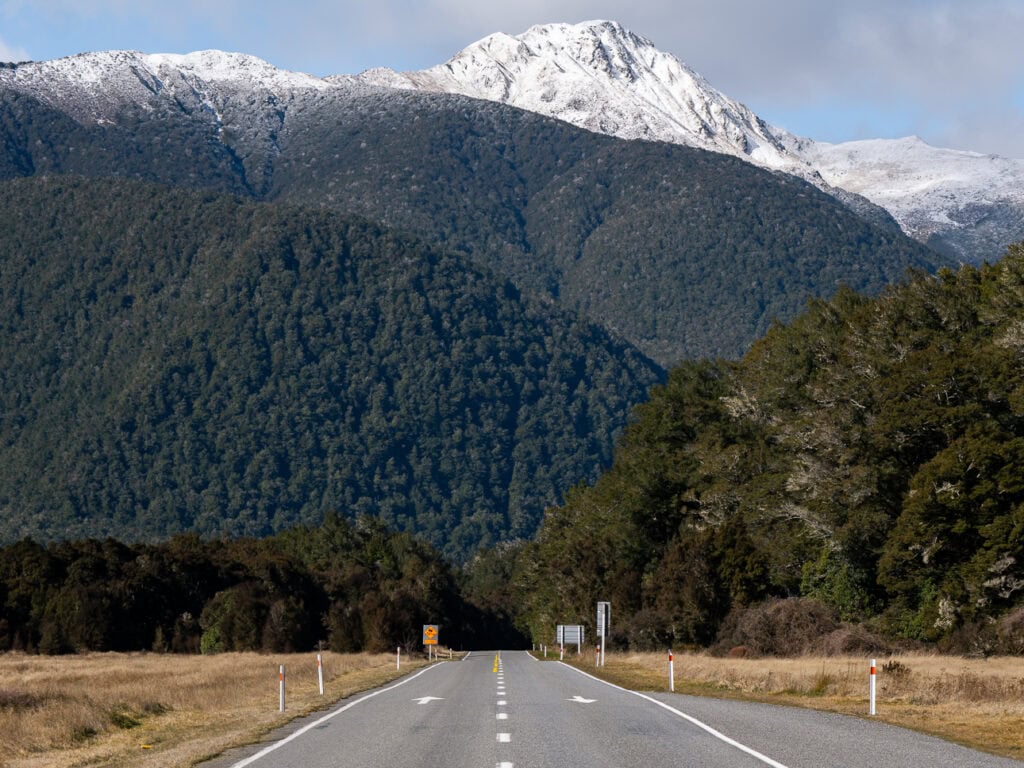
If you have less time…
3 days on NZ’s West Coast
If you’re reeeally limited for time but are still desperate to cover the major West Coast highlights, you’ve got two options: either stick around Glacier Country (best if you need to return to Wānaka/Queenstown) or do a whirlwind three day roadie up the coast (if you need to connect to Christchurch Airport or Picton for the Cook Strait ferry).
Three days in Glacier Country
- Day 1: Leave QT/Wānaka early, stop at the Blue Pools, Fantail Falls and Thunder Creek Falls along the way, Lake Matheson walk for sunset
- Day 2: Heli-hike in the morning, keep the afternoon free in case of weather postponements, fill that time with the Wildlife Centre, hot tubs or short walks if all goes to plan
- Day 3: A morning activity like kayaking, quad biking or a lake cruise, then drive back to QT/Wānaka in the afternoon
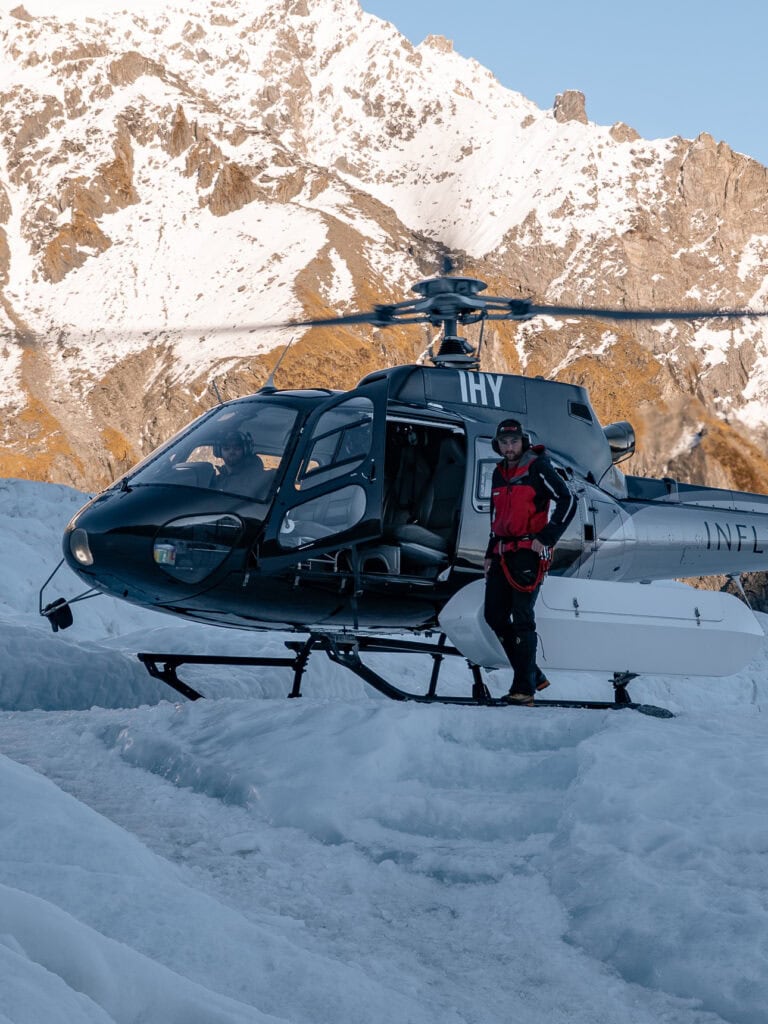
Or if you want to make your way from the south to the north of the West Coast (or vice versa), you could follow…
Day 1 – Glacier Country
- Morning: Leave Queenstown or Wānaka first thing and get straight to Glacier Country with no (or minimal) stops
- Afternoon: Lake Matheson walk
- Evening: Sunset kayak or kiwi tour if in season
Day 2 – Heli-hike & Hokitika
- Morning: Early morning heli-hike (7.30am in summer, 8am in winter, 4 hours duration) or scenic flight for something quicker
- Afternoon: Drive to Hokitika and do the Hokitika Gorge Walk
- Evening: Sunset from Hokitika Beach, see the free glowworm dell
Day 3 option 1 – Pounamu carving & Great Coast Road
- Morning: Bonz’n’Stonz pounamu carving if they have availability (2-3 hours for simple designs)
- Afternoon: Drive the Great Coast Road stopping at Punakaiki Pancake Rocks, the Paparoa Experience and Cape Foulwind Seal Colony
- Stay in Westport before moving on to your next stop the following day
Day 3 option 2 – Glowworms/caving & Great Coast Road afterwards
- Morning: Leave Hokitika early to reach Charleston for the UnderWorld Adventures glowworm tour or cave rafting that starts at 11.30am from October to April. You need to be there 15 mins before departure, the drive time is 1h 40m but give yourself extra time in case of weather or slow drivers.
- If you’re visiting in winter the latest tour starts at 10am, to make this safely you’d want to drive further north on day 2 and stay closer to Charleston.
- Afternoon: Head to Cape Foulwind if you want to see the seals, then retrace your
stepstyre tracks down the Great Coast road to stop at Punakaiki Pancake Rocks, the Paparoa Experience, and stay in Punakaiki or Barrytown for your last night
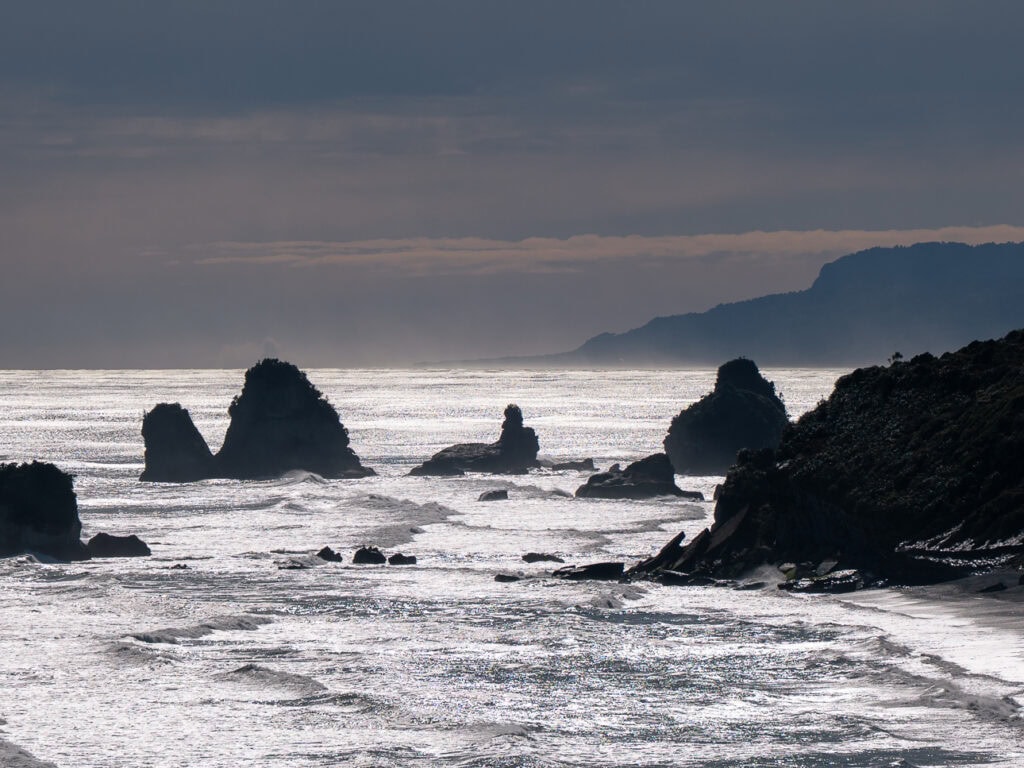
5 days on the West Coast
Just follow the 7 day itinerary but cut it to one night in Hokitika (instead of two) and drop Maruia Hot Springs so you can just finish with the Paparoa Coast.
West Coast FAQs
What is the West Coast NZ and where is it?
A long, narrow region in the South Island between the Tasman Sea and the Southern Alps, known for its untamed natural scenery and bucket list adventures.
How many days should I spend on the West Coast of NZ?
Seven days is ideal for a West Coast road trip! Three to five days works for a highlights trip, but a week means you can build in wiggle room for discoveries along the way and flexibility for changing alpine conditions.
Which direction should I drive this West Coast road trip?
Either way works!
What is the best time to visit the West Coast?
It really depends on your priorities. Summer has long days and warmer weather, winter often has clearer skies and far fewer people, spring brings big waterfalls and autumn is mild both weather-wise and crowd-wise.
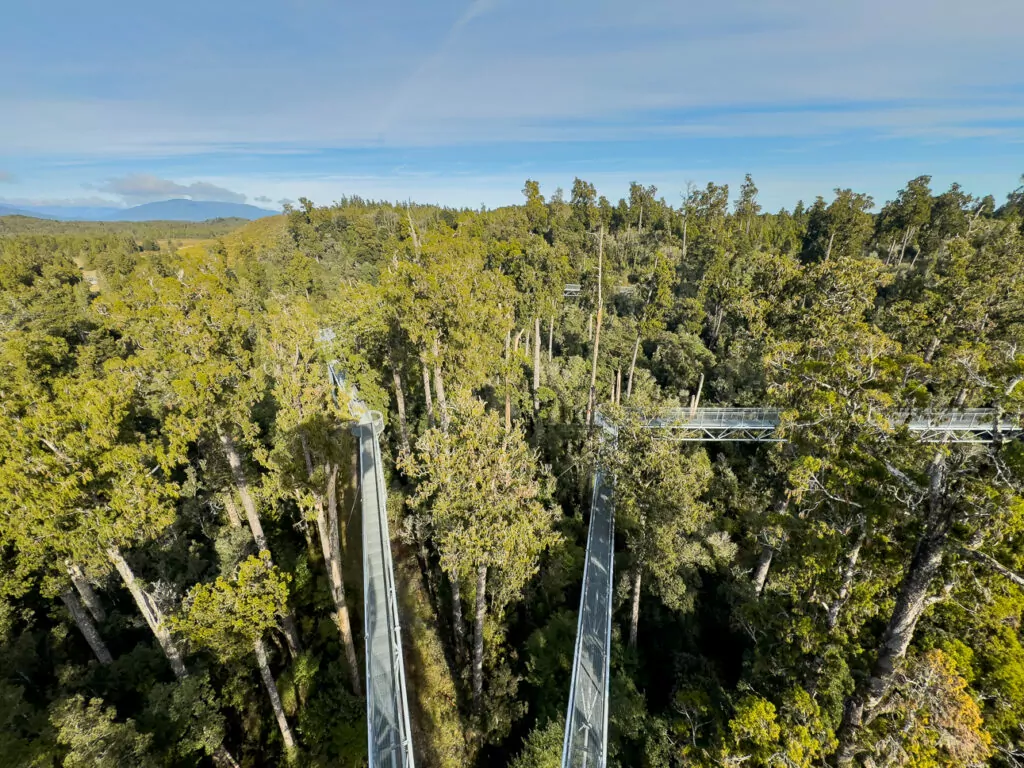
How bad are sandflies on the West Coast?
Look, I’m not going to sugar-coat it, they can be really effing annoying 🙃 but travelling outside of the hotter months will mean you see (or feel) less of them, and locally-made natural repellent like Okarito Sandfly Repellent works brilliantly.
Can I walk onto the glaciers?
Only with a guided heli-hike or scenic flight with a glacier landing, there’s no access to Franz Josef Glacier or Fox Glacier from the valley floor.
What happens if my heli-hike is cancelled?
The tour operator will try to rebook you on the next available departure, offer you a full refund, or sometimes offer you a partial refund if conditions allow for (and if you want to take) a shorter glacier landing instead of the full hike experience. This is why two full days in Glacier Country is recommended.
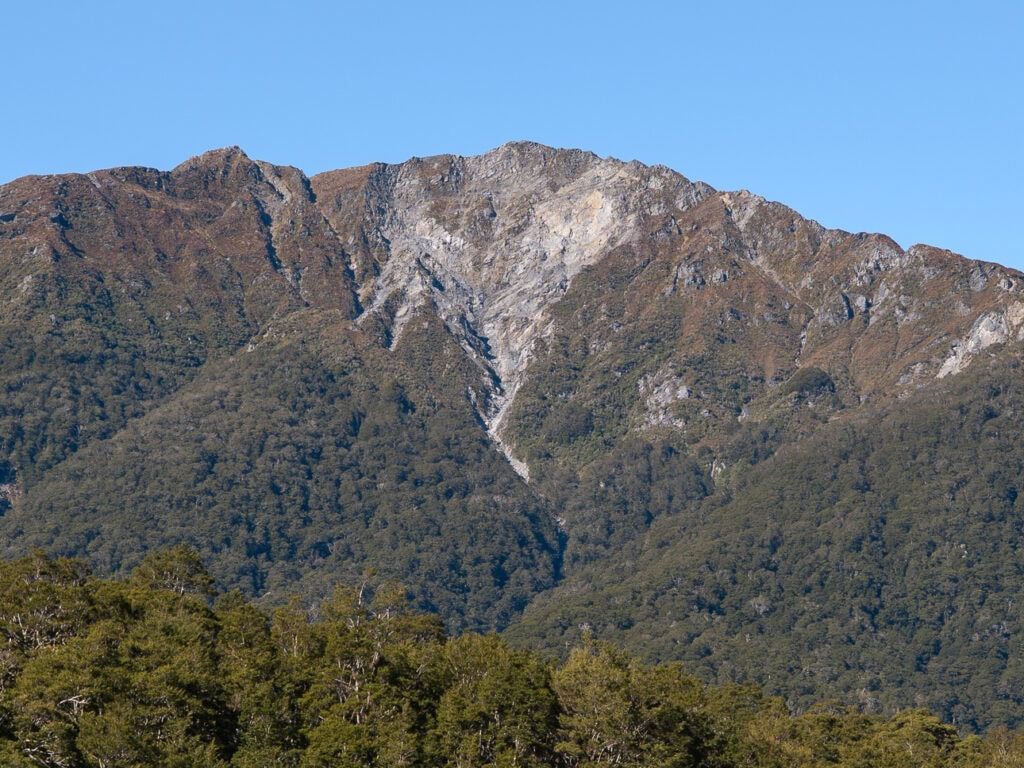
Where on the West Coast of NZ can I see kiwi?
The only kiwi tour operator on the West Coast (and in the whole South Island) is Okarito Kiwi Tours, they run guided night walks in the warmer months. You can also head to the West Coast Wildlife Centre in Franz Josef for guaranteed sightings in a controlled habitat with an on-site conservation programme.
Where on the West Coast can I see glowworms?
Hokitika’s got an easy access free Glowworm Dell just a short walk from town, or join UnderWorld Adventures in Charleston for a family-friendly glowworm tour or cave rafting under a ceiling of glowworms.
What are the best West Coast short walks?
Lake Matheson for mountain reflections, Hokitika Gorge for insanely blue water, Punakaiki Pancake Rocks & Blowholes Walk for mind-boggling rock formations.
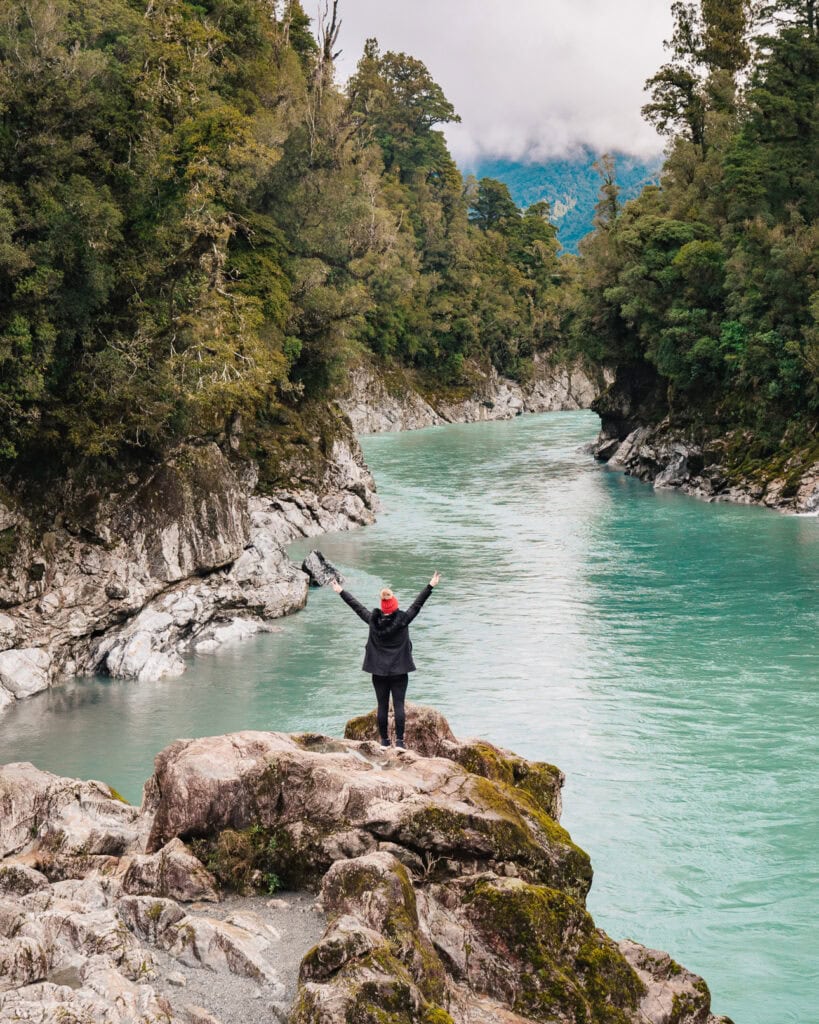
What I love most about this West Coast road trip is that it lets every kind of traveller experience Aotearoa’s most dramatic landscapes, no matter your budget, fitness level or travel style.
Backpackers can keep costs down with basic hostels, cheap eats and free nature walks. In-between travellers (hi, that’s me!) can combine low-spend days with splurge-worthy activities like a glacier hike and pounamu carving. And if money’s no object, you can easily tailor an itinerary to perfectly suit your preferences.
I hope this guide helps you plan your ideal West Coast road trip and make the most of your time and money along the way. Let me know if you have any questions before your trip, and save this post to come back to afterwards so you can leave a comment with your highlights and any tips you want to share.
Want more New Zealand travel inspo? Check out these guides 👇🏼
MY GO-TO TRAVEL PLANNING RESOURCES
Flights ✈️ I use Skyscanner to find the best flights for my trip and then I’ll always book direct with the airline to protect myself from having to deal with dodgy third parties if anything goes wrong.
Trains 🚂 If I’m travelling through Europe, I try to travel by train wherever possible! For an extended trip (2+ weeks) I’ll calculate if a Eurail Pass is worth it, or I’ll book point-to-point tickets through RailEurope or the local train operator.
Accommodation 🛎️ I book almost all of my accommodation through booking.com, they have a user-friendly website + app and many of their options are free cancellation, easily cancelled with a simple click of a button.
Activities 🗽I use GetYourGuide, Klook and Viator to look for activities in the places I visit, or I just Google ‘things to do in [city]’! P.S. If you book anything on Klook you can use the promocode FINDINGALEXXKLOOK to get 10% off
Travel cards 💳 I’m a Wise gal through and through, they’ve been my chosen travel card for more than five years now. You can easily top up your card from your bank account or through Apple Pay, convert your money to local currency, and spend money with minimal fees and the best exchange rates around.
Travel insurance 🩺 I use Cover-More NZ travel insurance for my own trips, I have a comprehensive policy and I’ve only had good experiences with them. Cover-More also has an Australian company, but if you’re from elsewhere then two popular insurance options for global travellers are SafetyWing (cheaper policy, lower coverage) and World Nomads (more expensive but significantly better coverage).
Luggage 💼 I travel with Samsonite Cosmolite suitcases, one 75cm check in bag and a 55cm carry on bag, and I absolutely adore them and will never travel with anything else! They are SUPER lightweight (2.8kg and 1.9kg respectively) so I have much more space for my actual stuff.
Camera gear 📸 I use a iPhone 15 Pro Max for phone photos/videos, and my camera kit includes a Lumix S9 (incredible lightweight full-frame camera, a game changer for travel creators!) with a 20-60mm lens, a Lumix G9 with an 8-18mm and 12-60mm lens, a DJI Mini 3 Pro drone and a GoPro Hero 10. I do all my writing and editing on my ASUS Zenbook 14, it’s lightweight but powerful enough for photo editing and intense blogging sessions.
